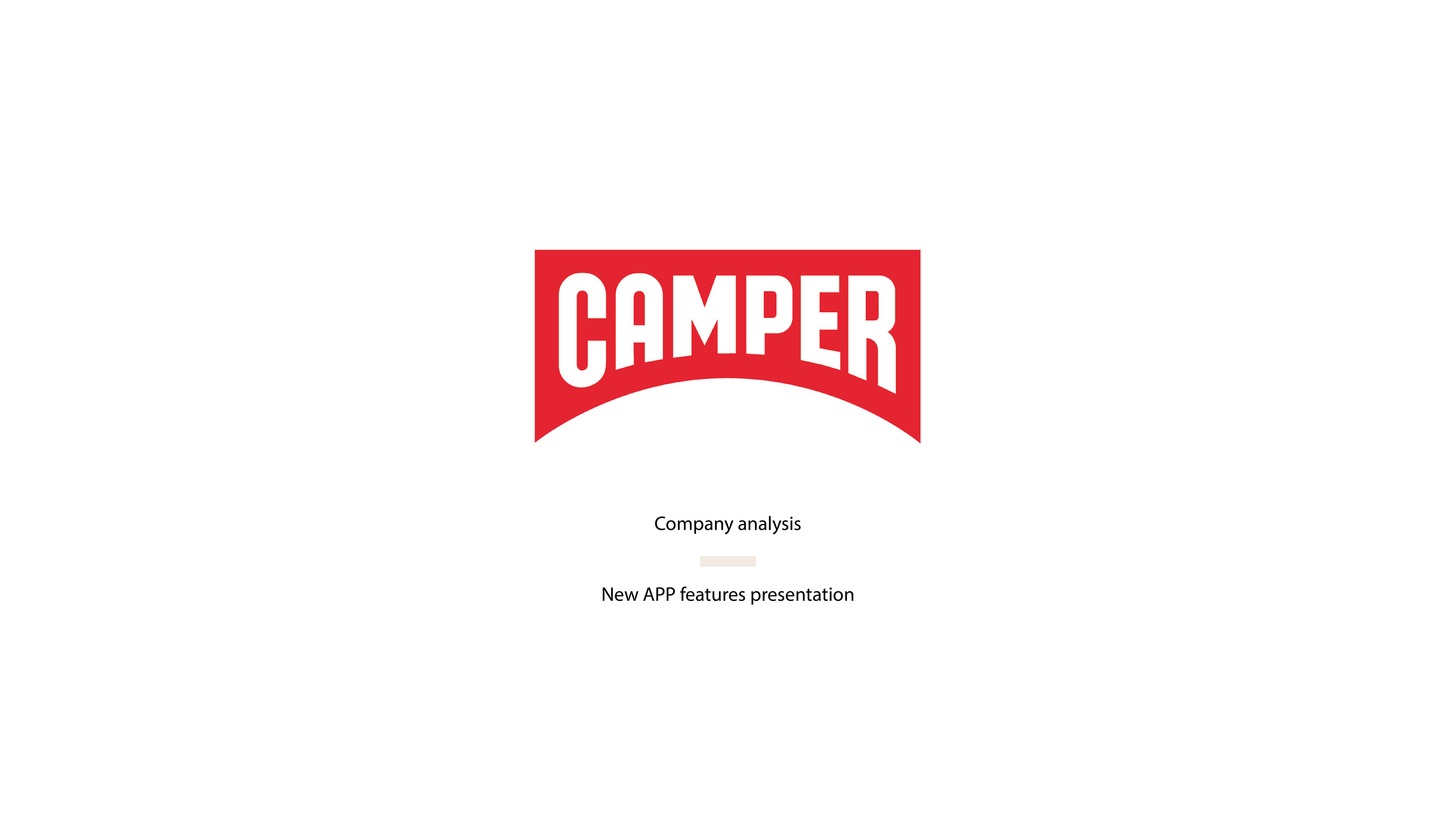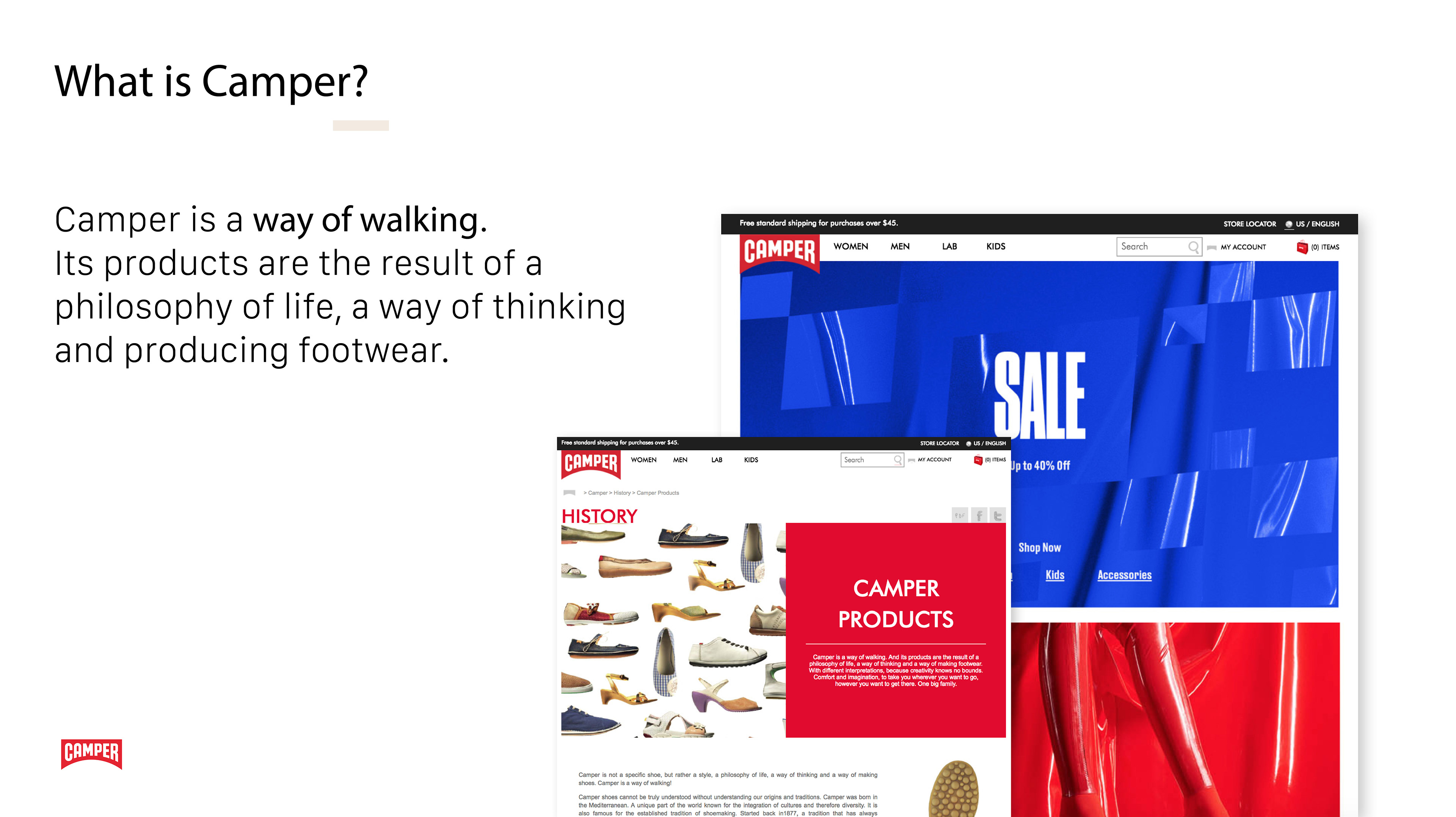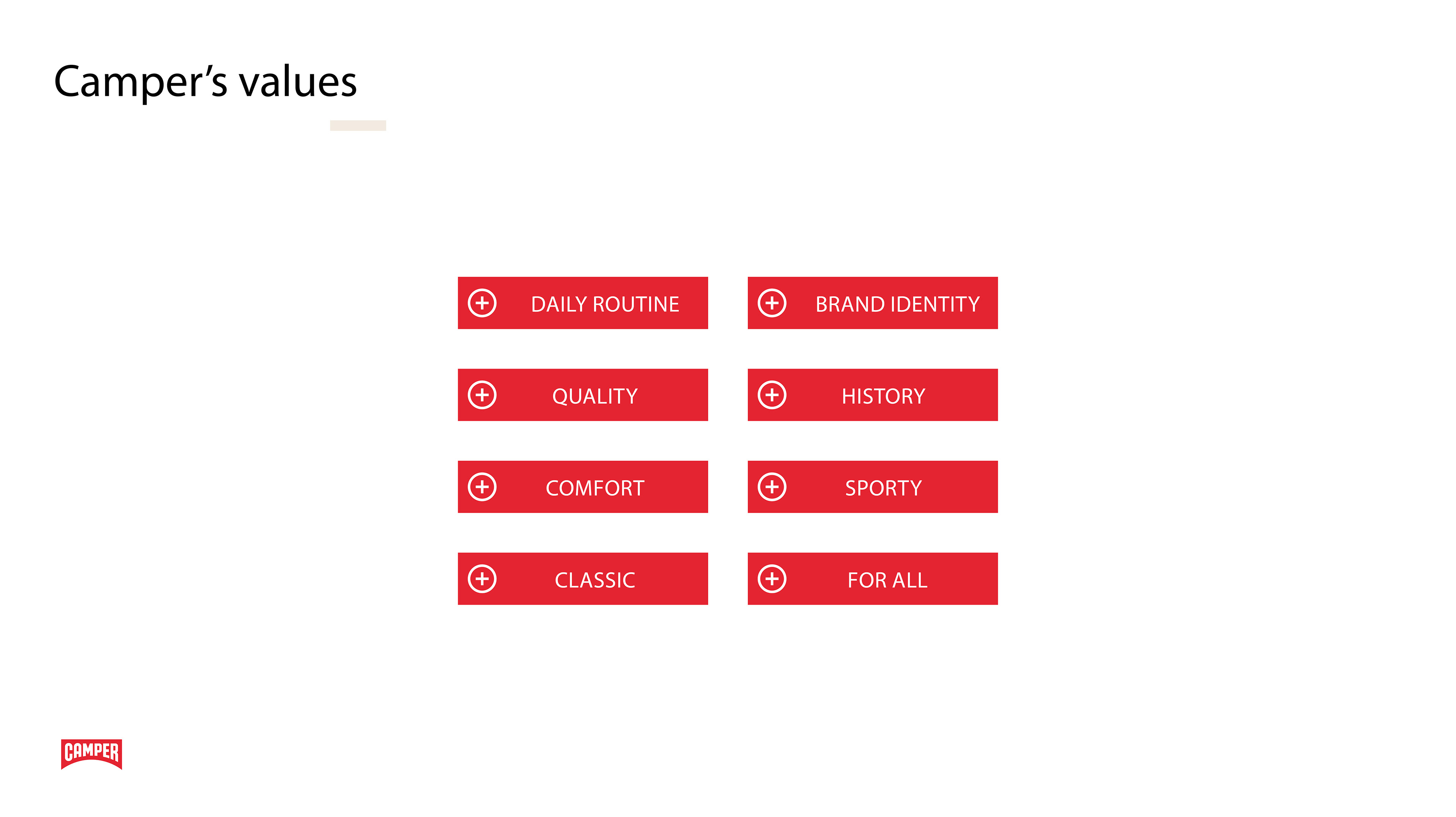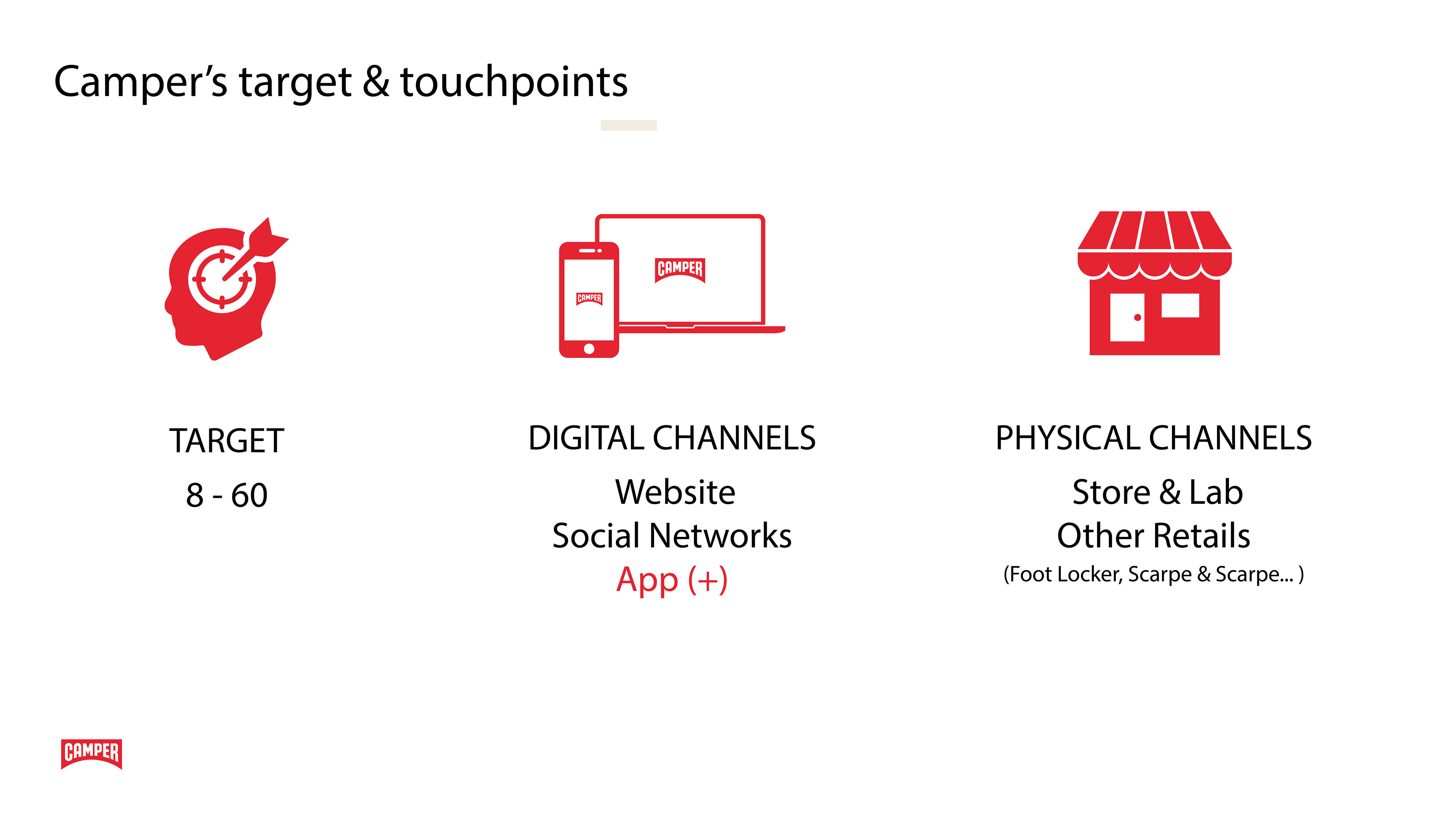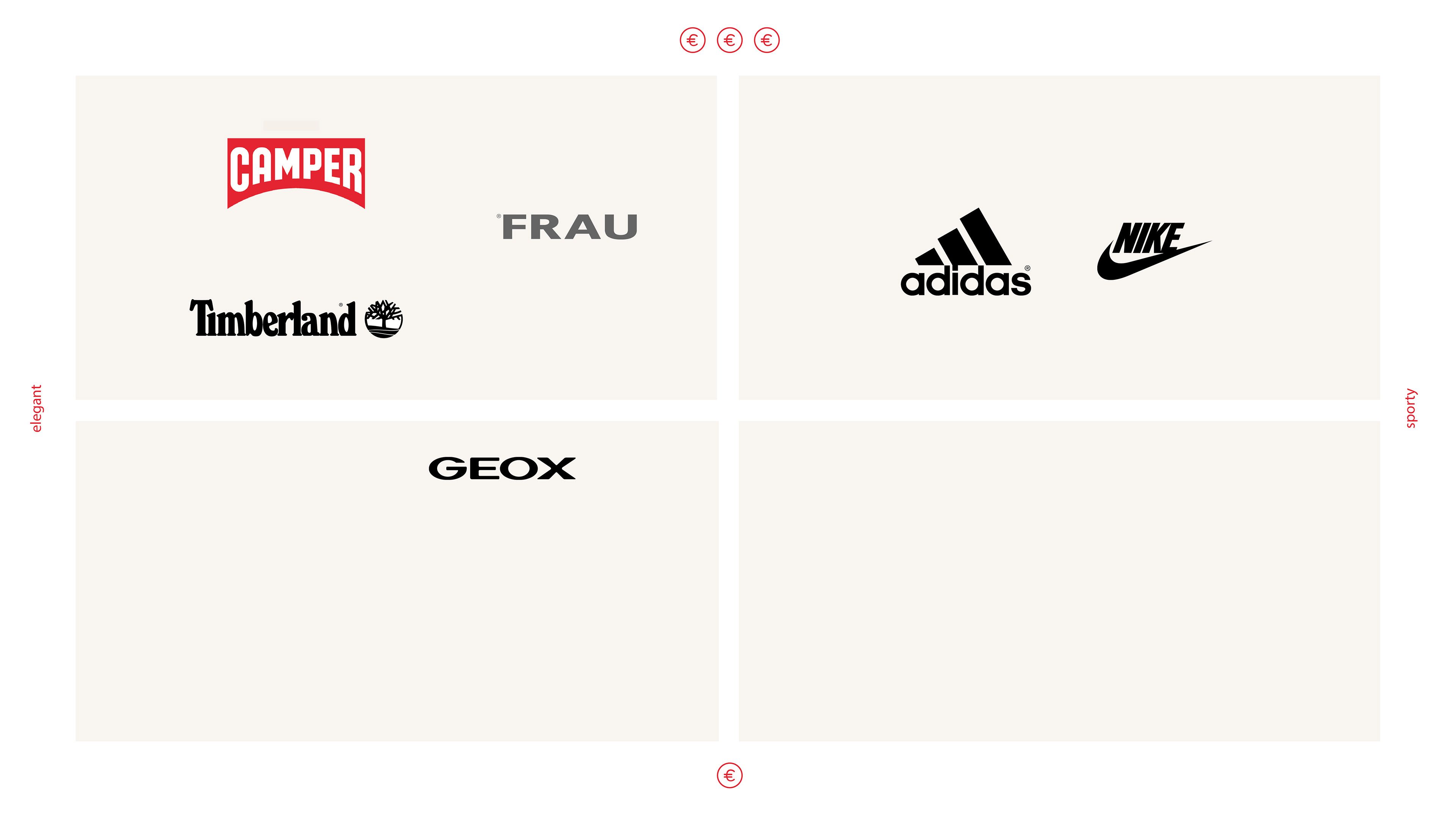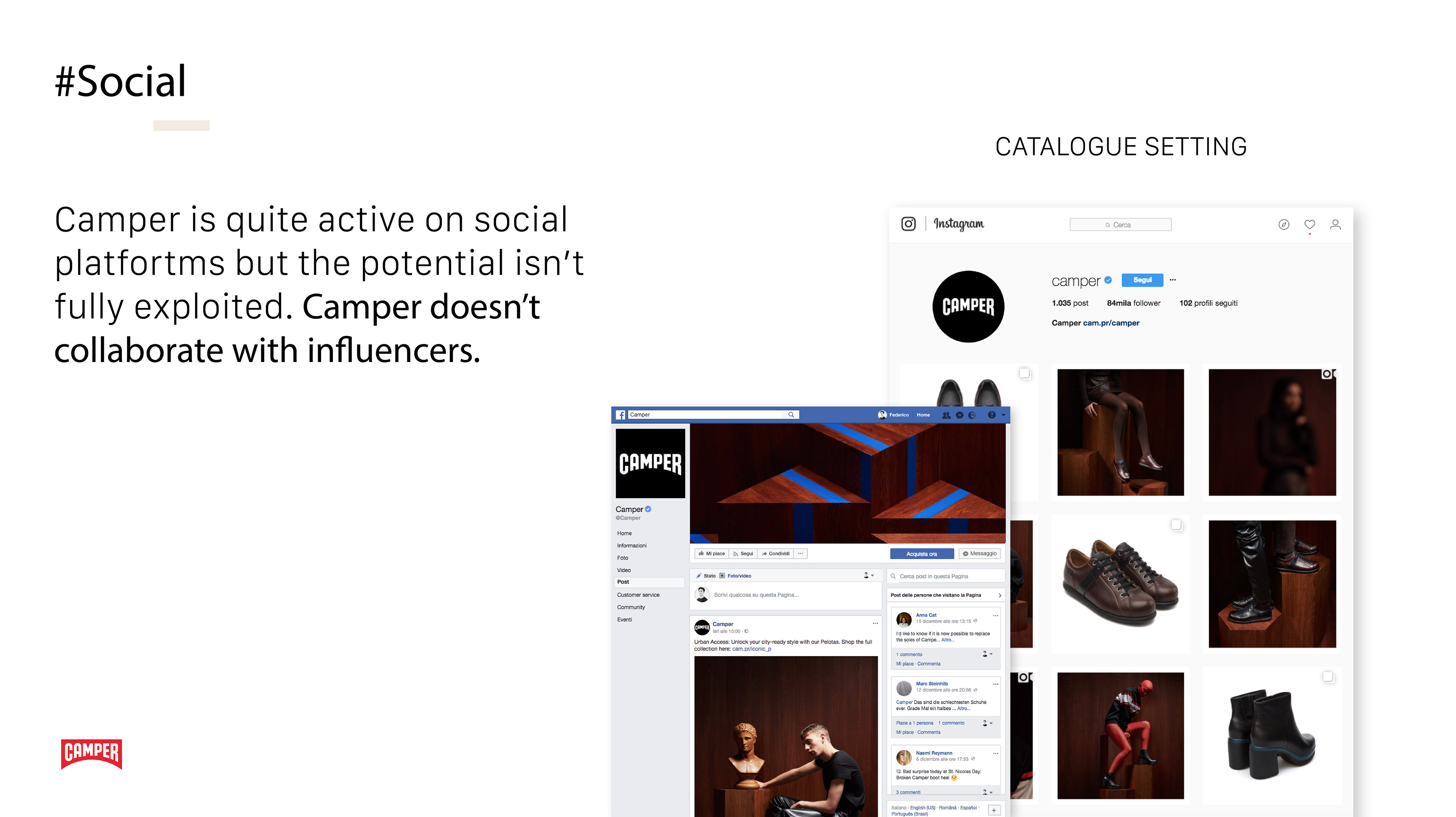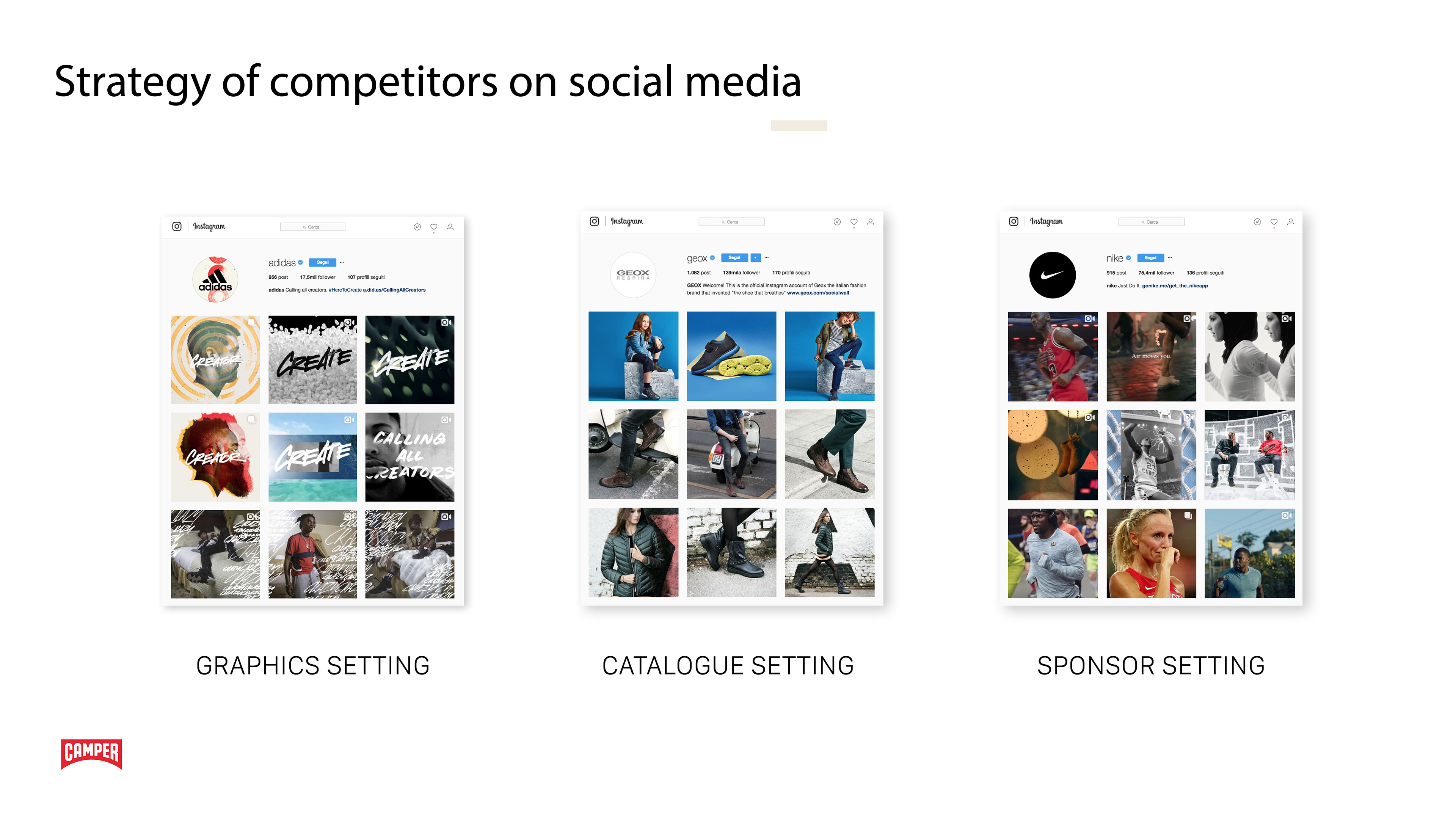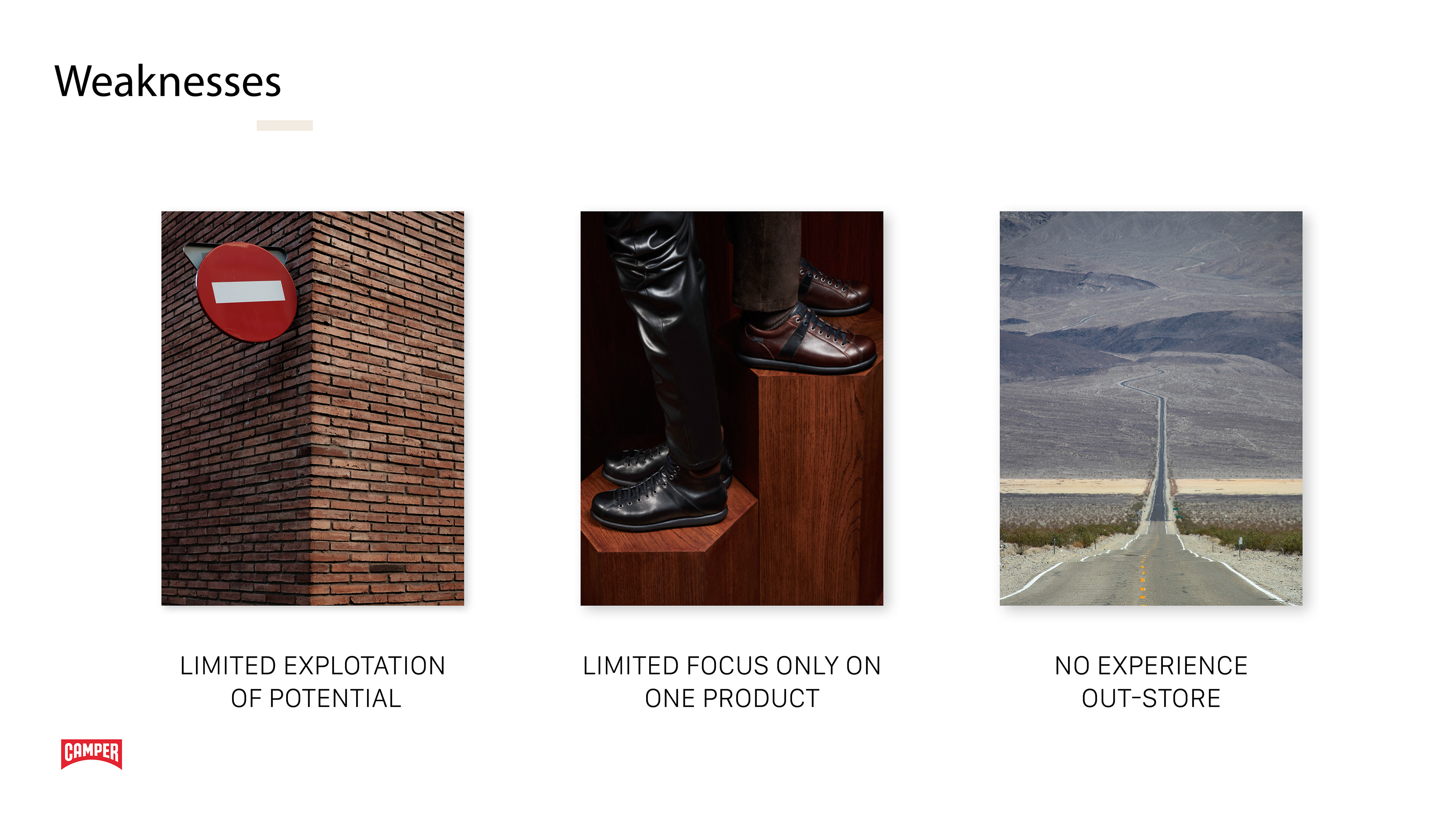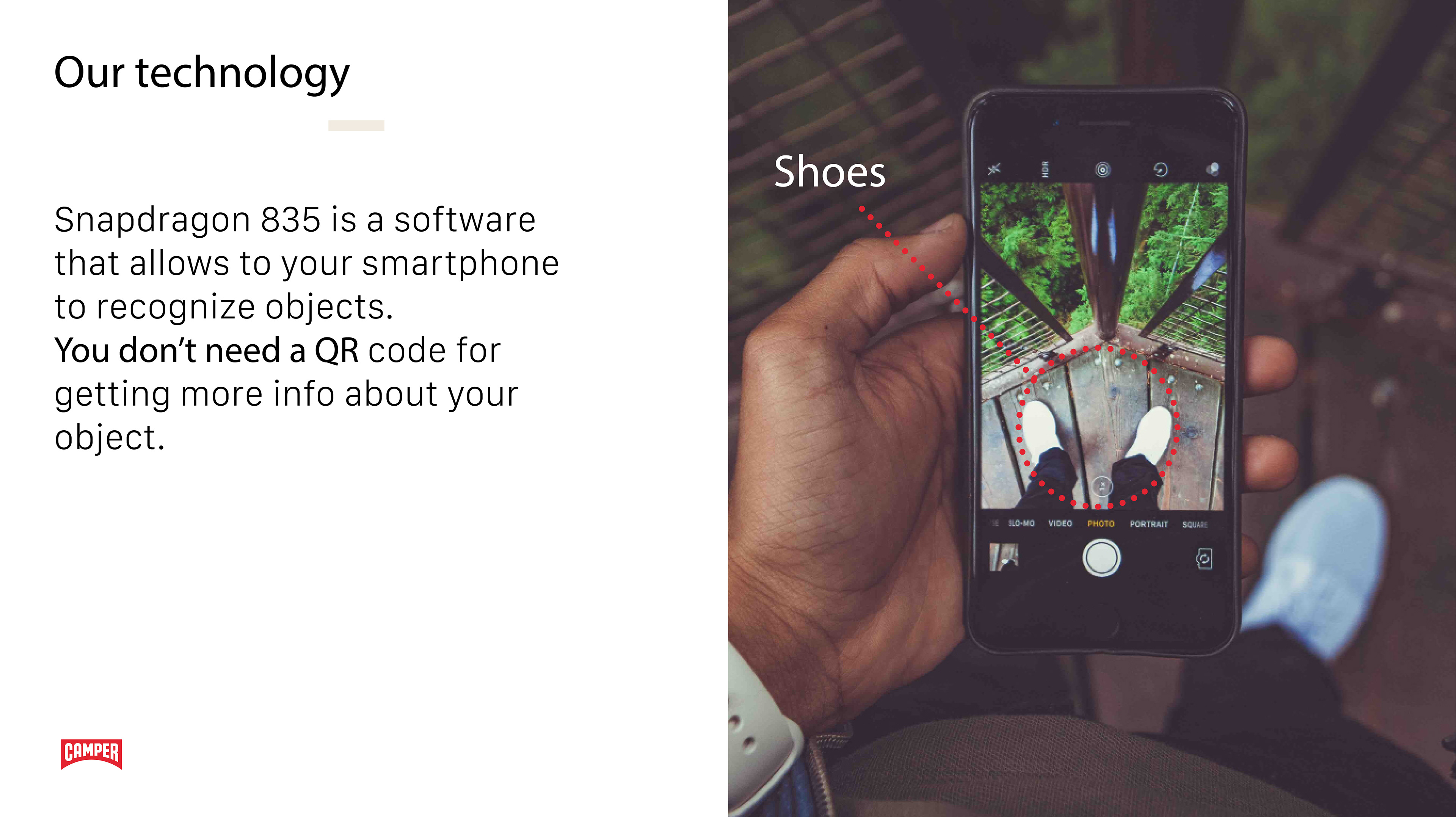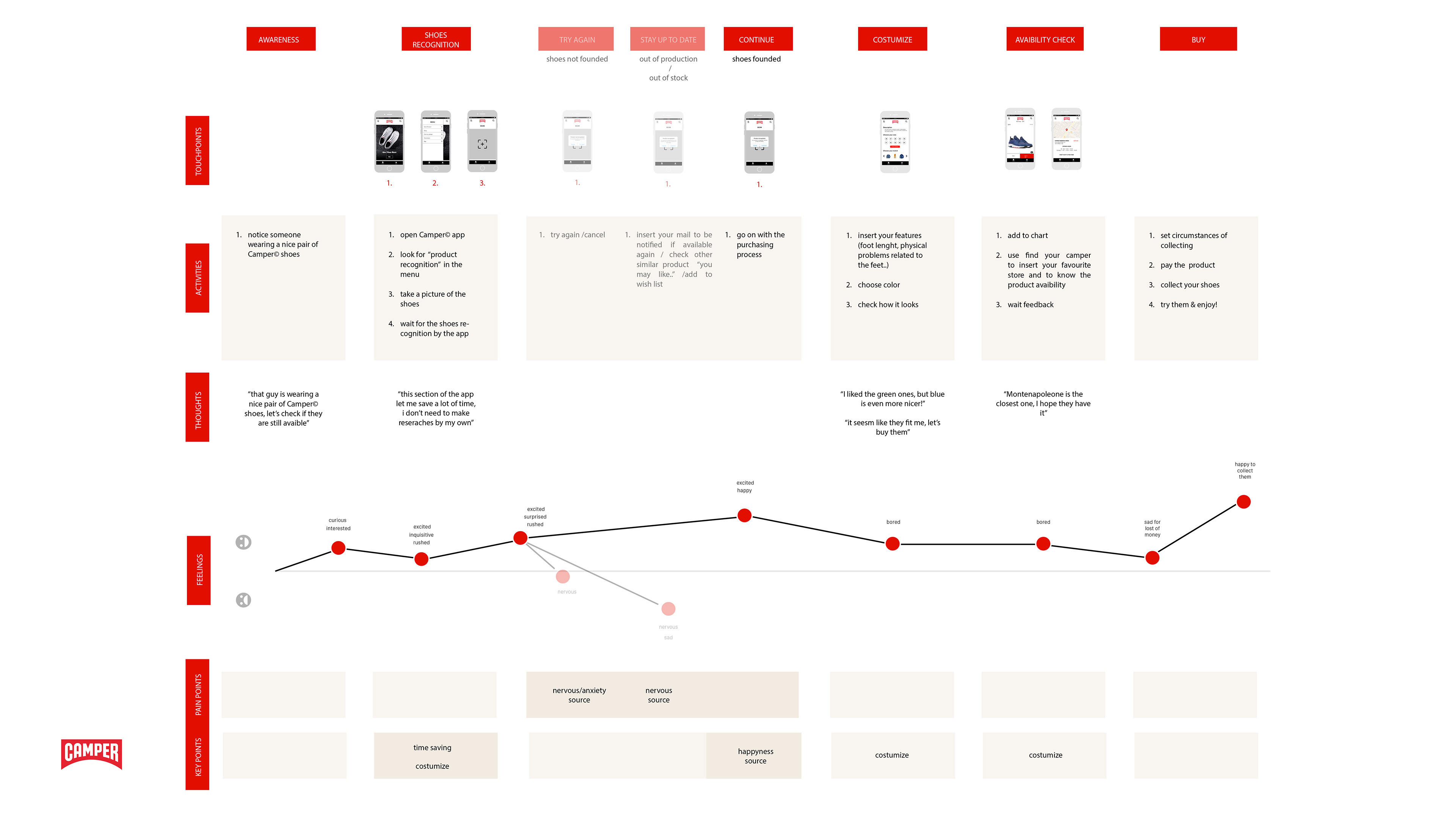service & UX — 17' 20'
Fabulae
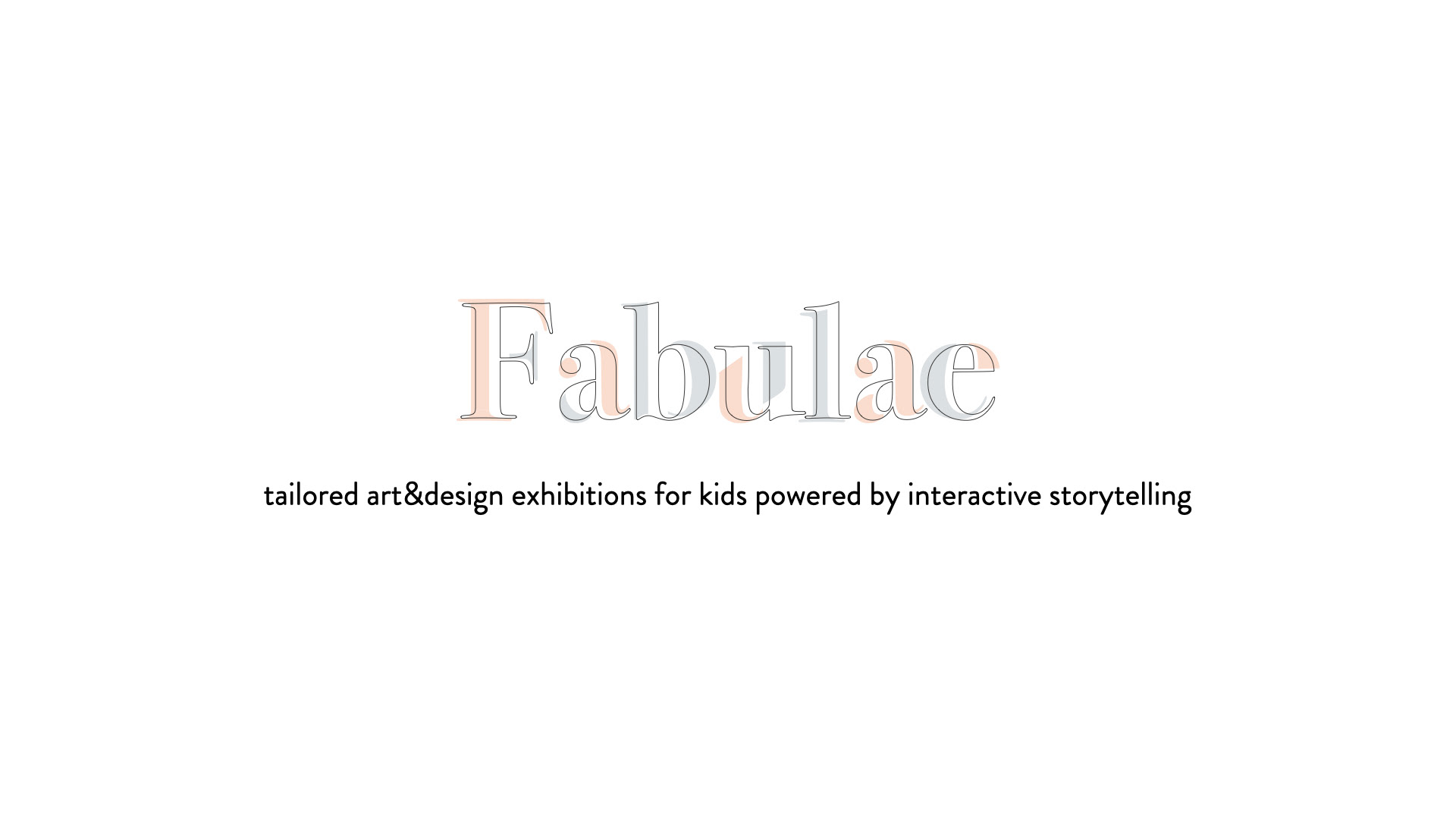
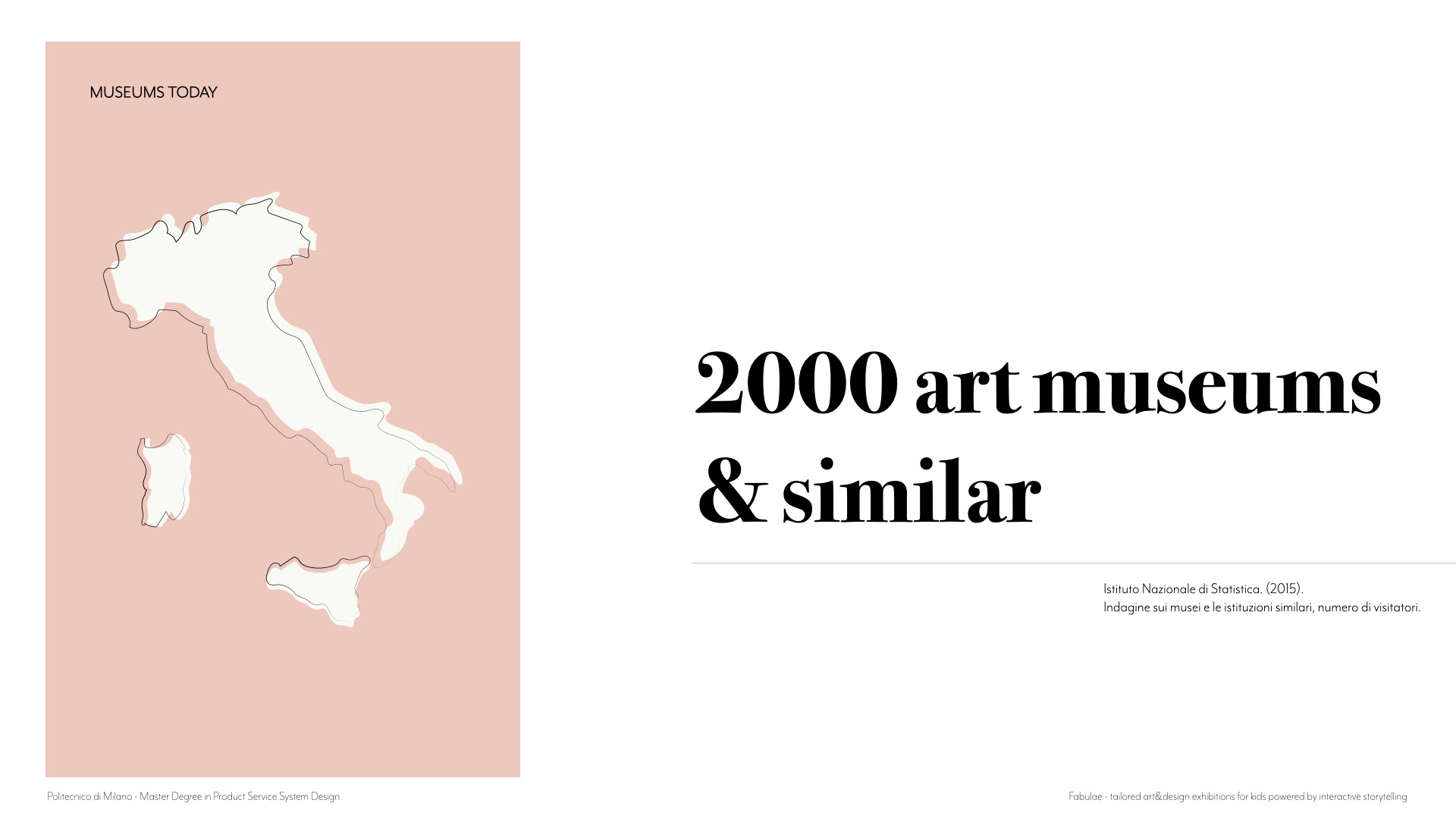
Italy has always been famous for its cultural heritage, in fact nowadays it hosts 2000 among art museums and similar institutions.
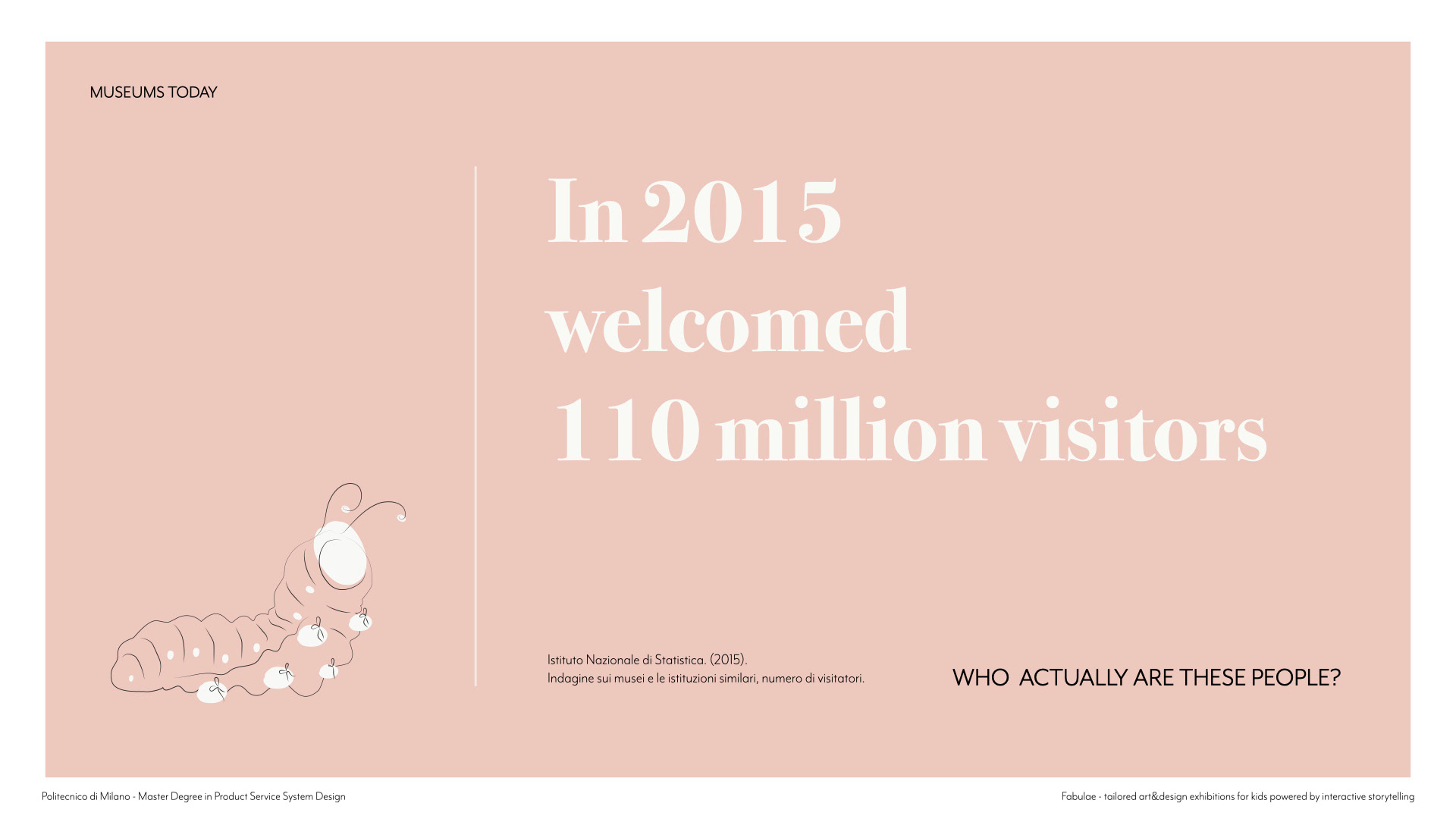
Which in 2015 has welcomed 110 million visitors. But who actually are all these people?
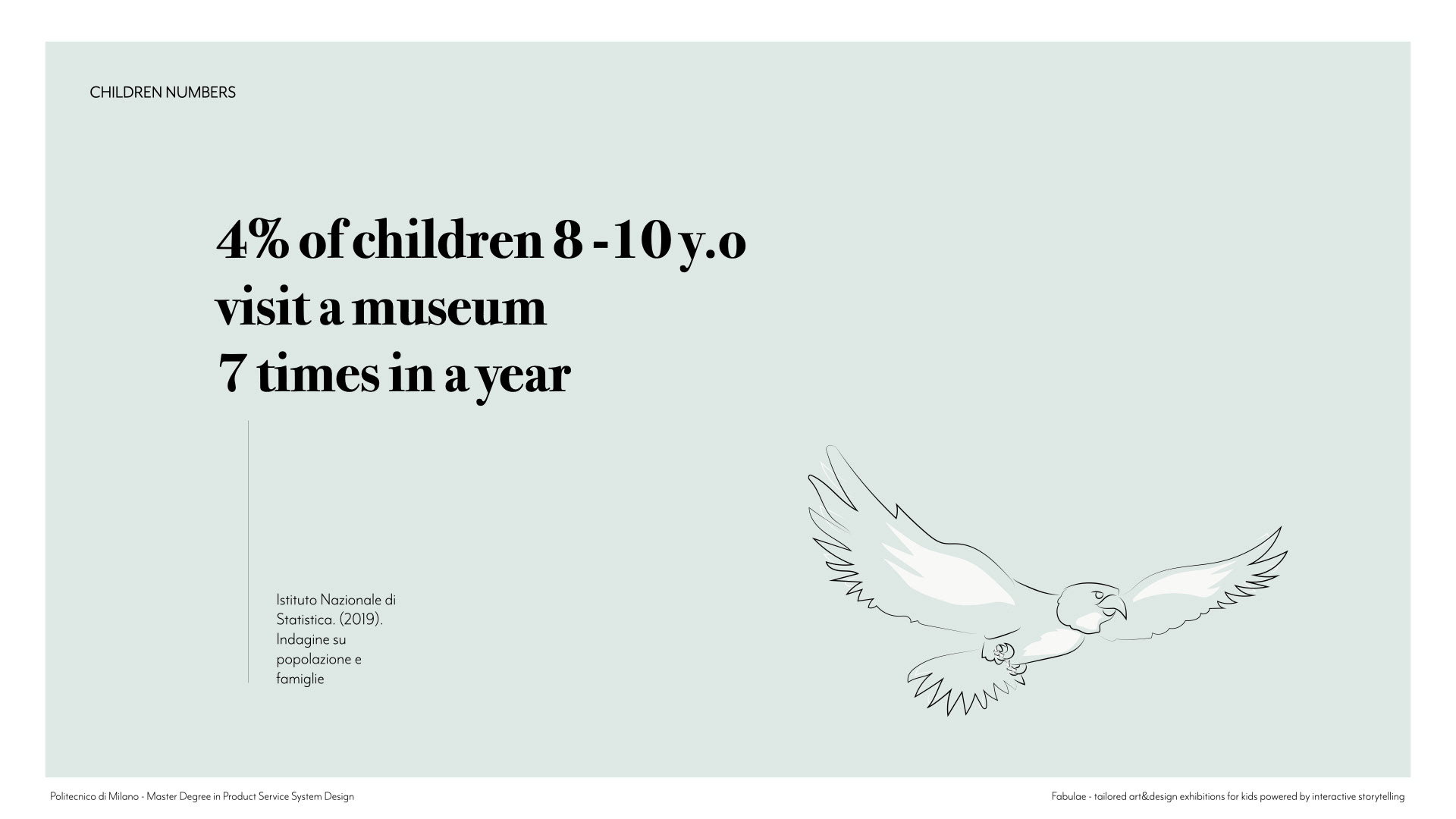
Not children for sure. Infact numbers says that only 4% of kids aged 8-10 go to museums more than 7 times in a year. This is due to the fact that this kind experience is very much linked to school outings, and not to families themselves. This is attributable not only to museums lack of facilities for children, but also to families social context of reference.
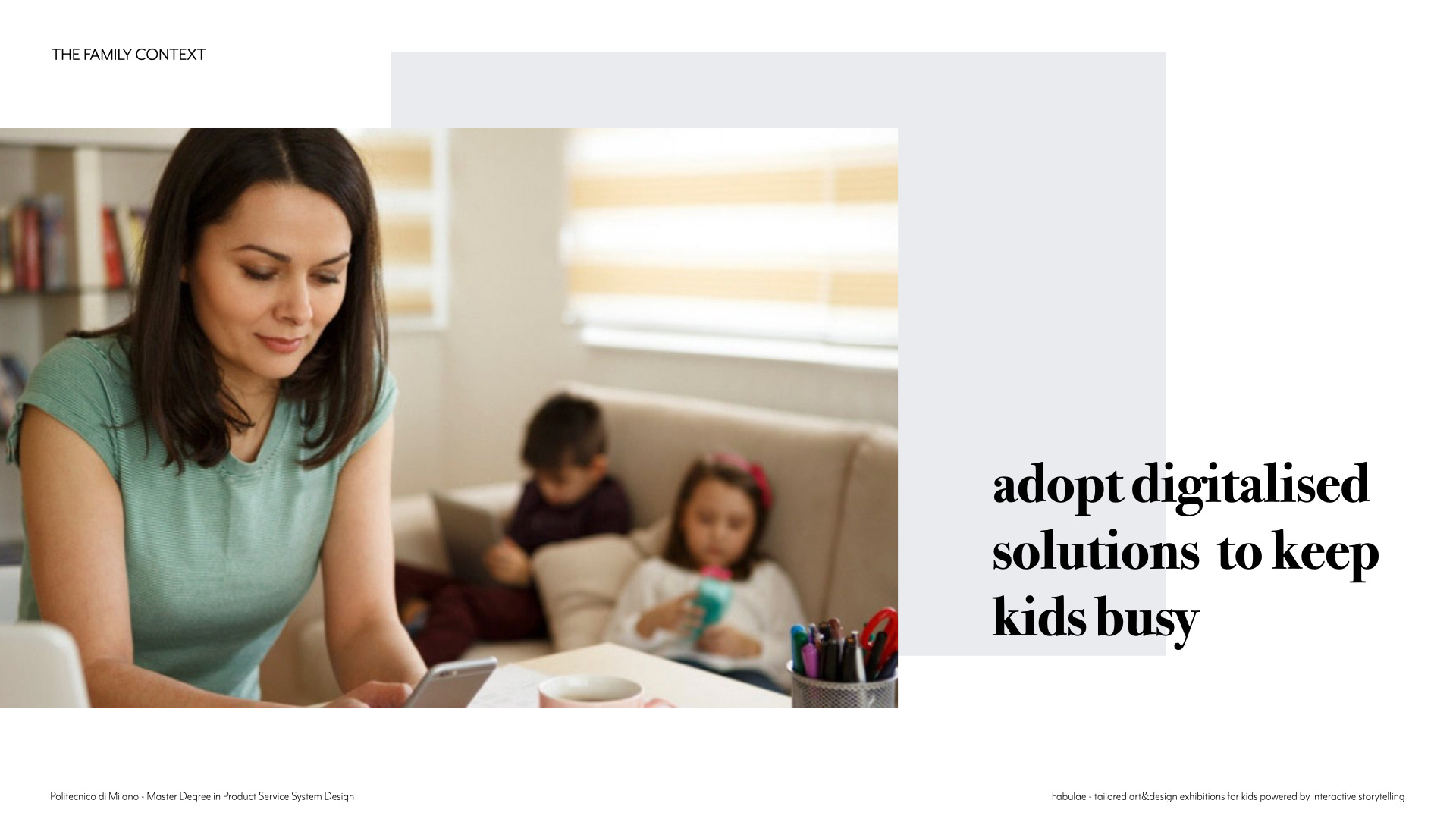
In fact, in a world that runs fast, today's parent tend more and more to preserve their free time by adopting whatever technology has to offers when it comes to keep their children busy.
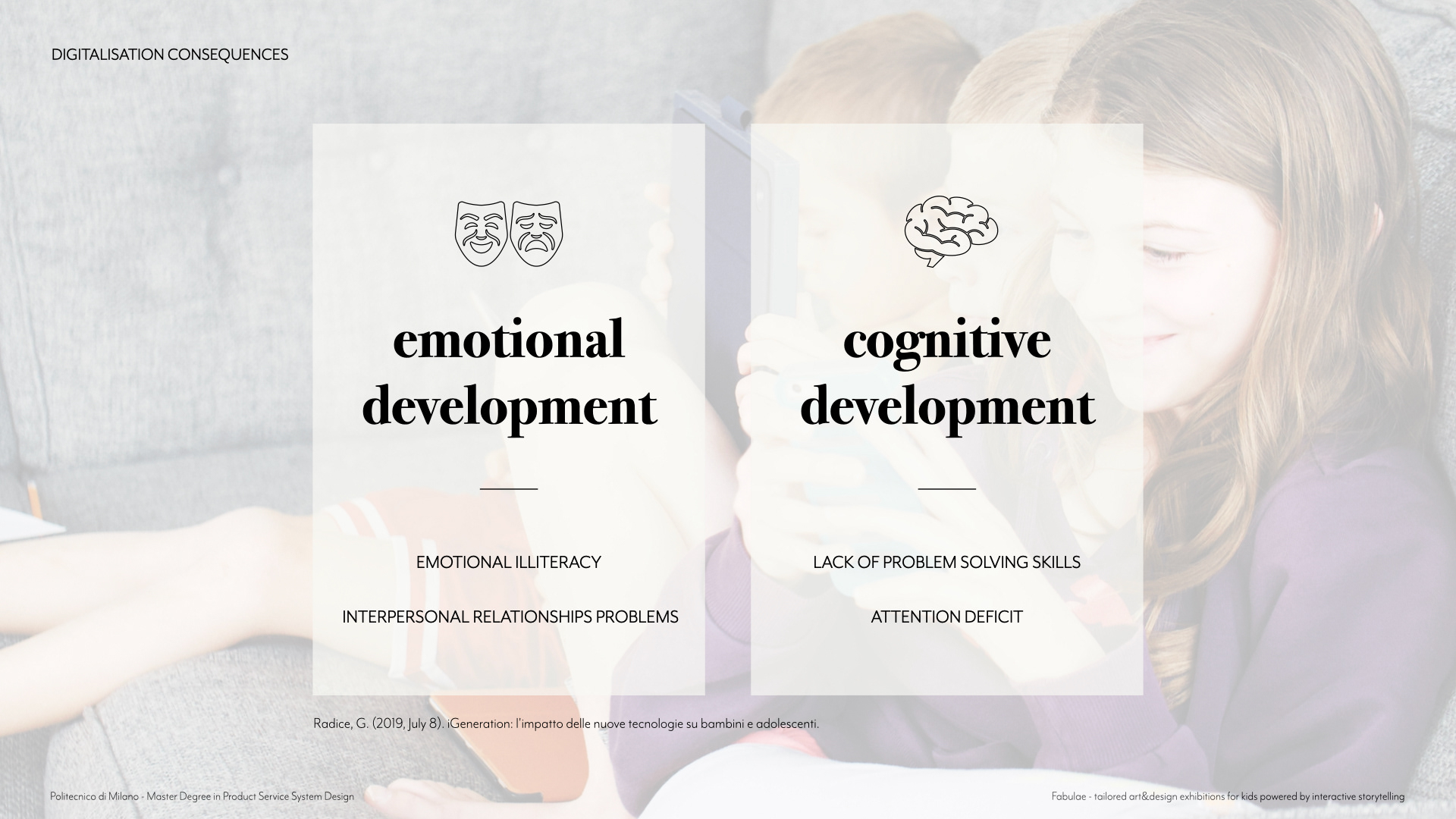
But what are the consequences of this behaviour? Kids prolonged interaction with devices is amplifying an already common trouble in childhood called emotional illiteracy, that consist in not knowing how to recognise and handle emotions, because too little time have passed observing human behaviour.
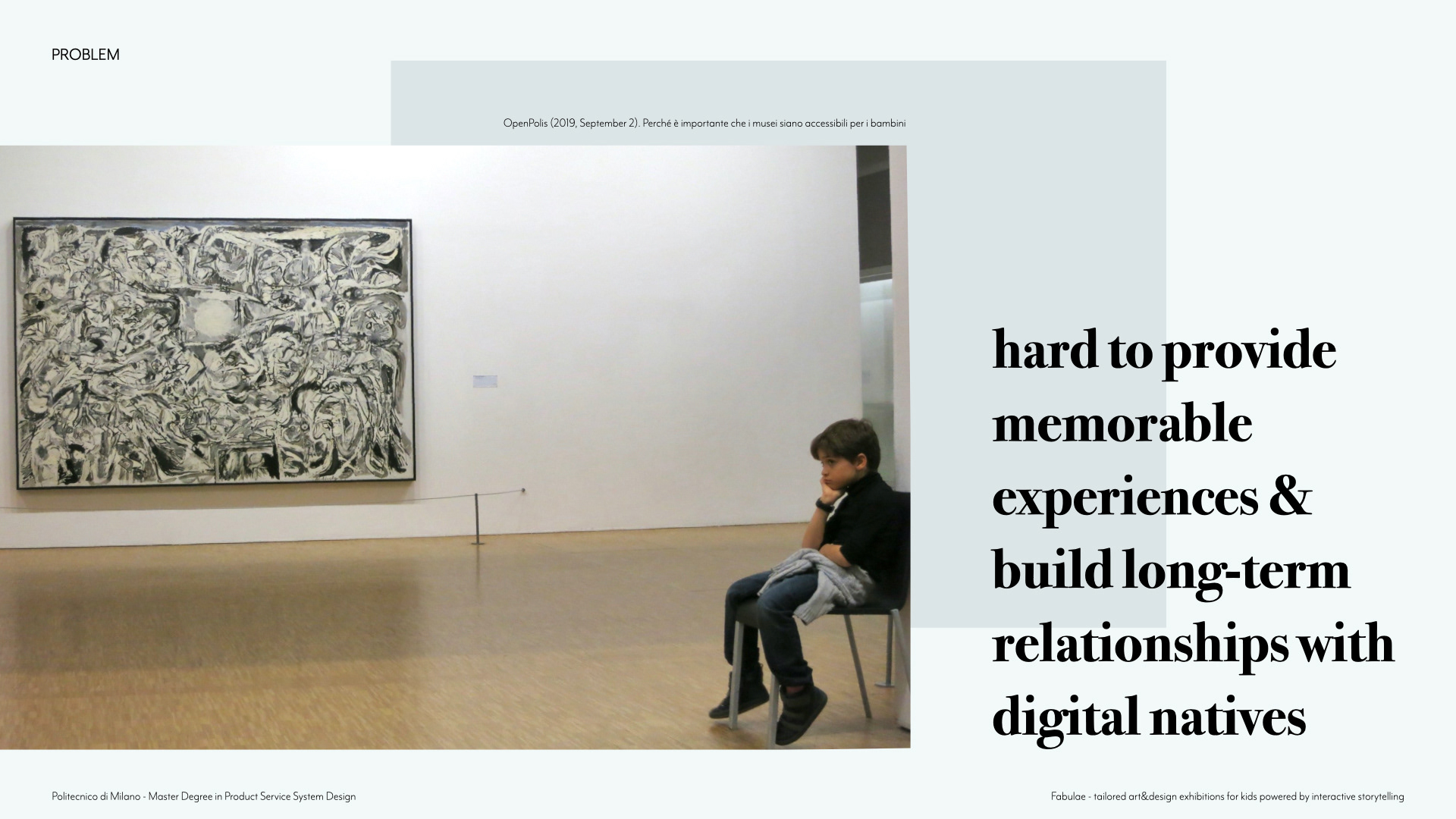
And in particular for this last reason, art&design museums are struggling more and more to engage with digital natives and their families.
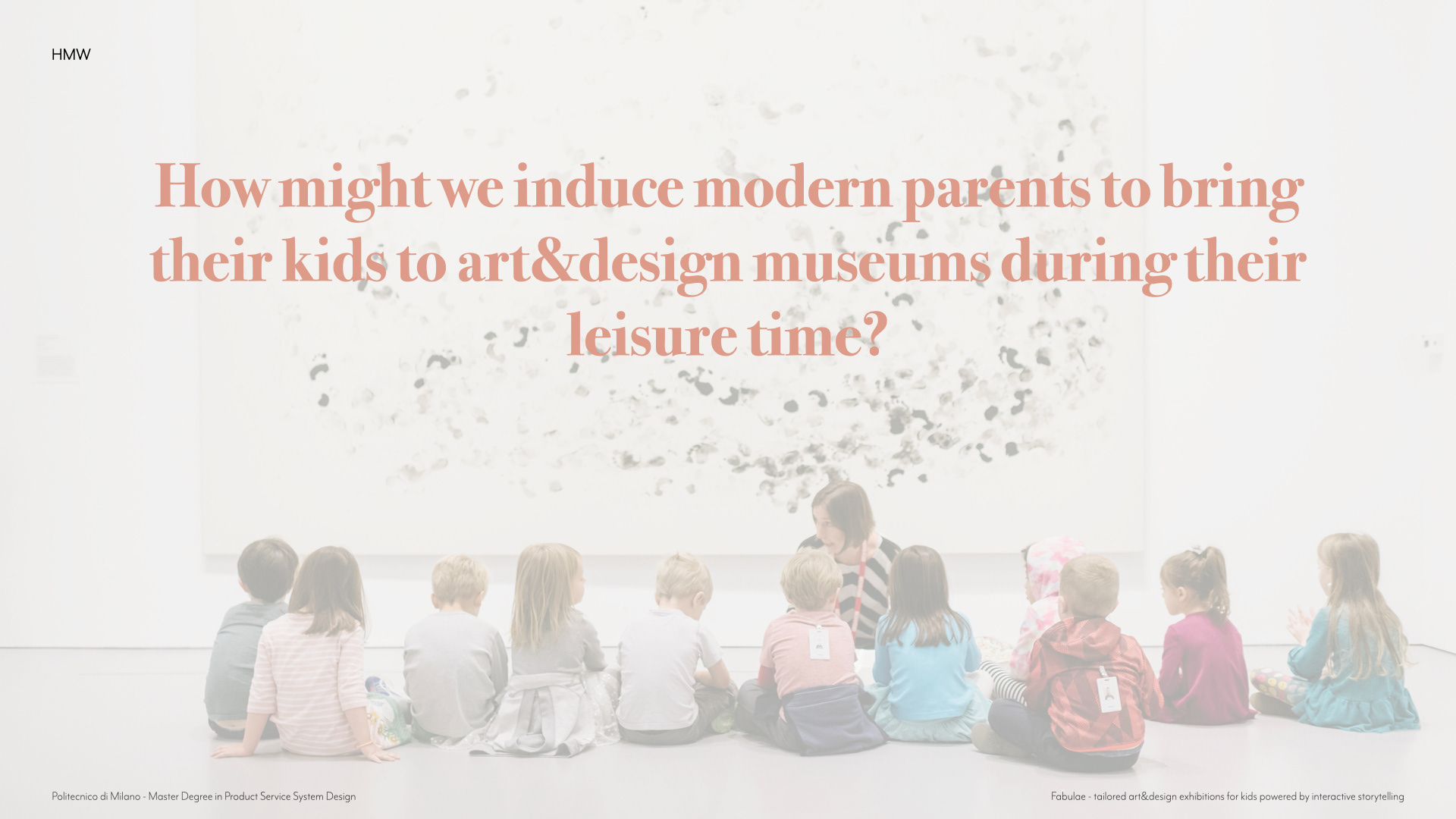
How might we induce modern parens to bring their kids to art&design museums in their leisure time?
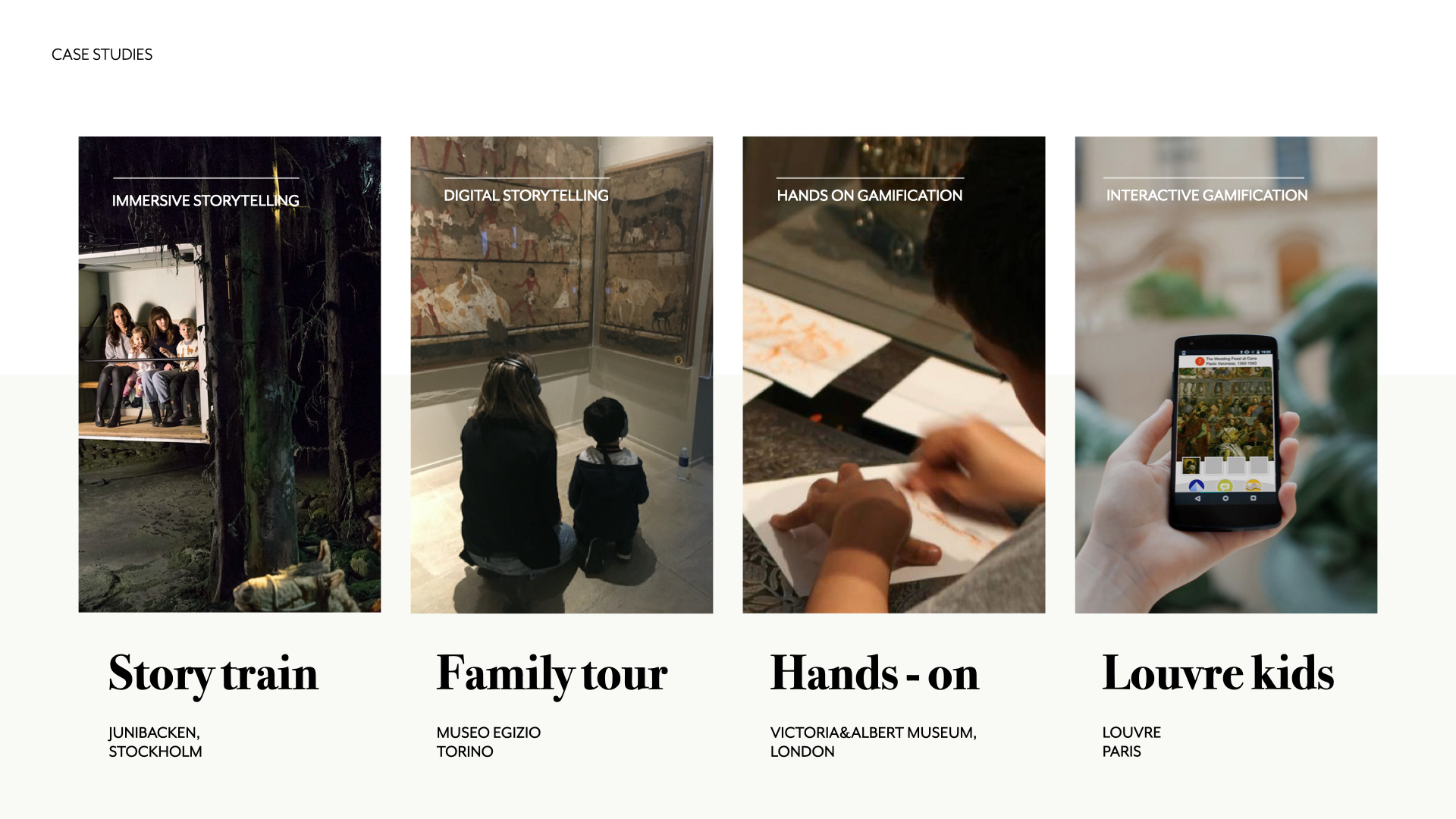
By analysing some successful cases, it came out how digitalisation managed to provide support to parents during the visits.
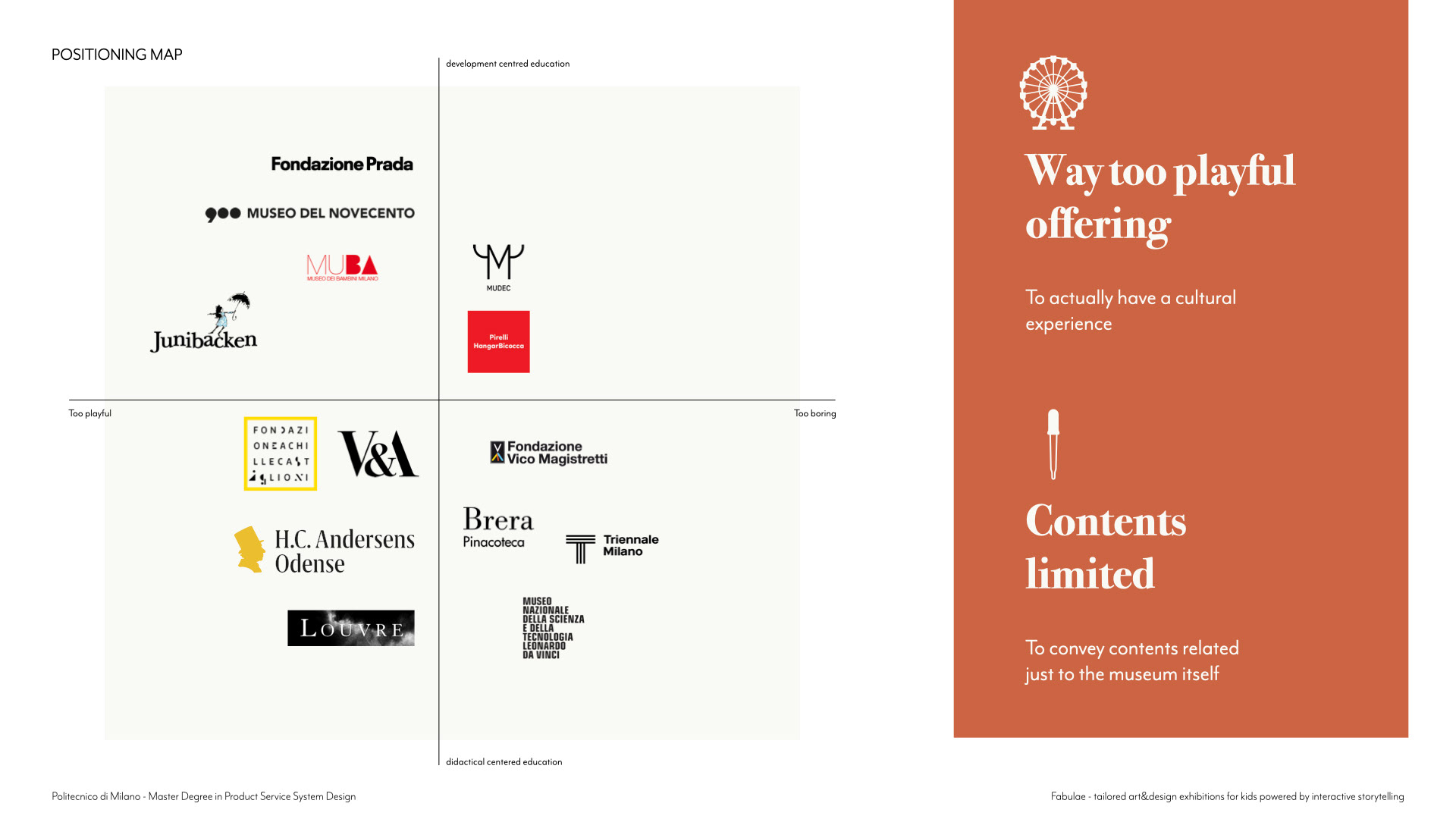
But the proposed experiences, despite being very engaging, were, on one side, not so education centred because too focused on meeting kids wants of playing, while on the other, very lacking in meeting those that were actual children needs. Infact there’s a gap in the market where development problematics linked to kids’ inner world are not considered when it comes to build up a museums offering.
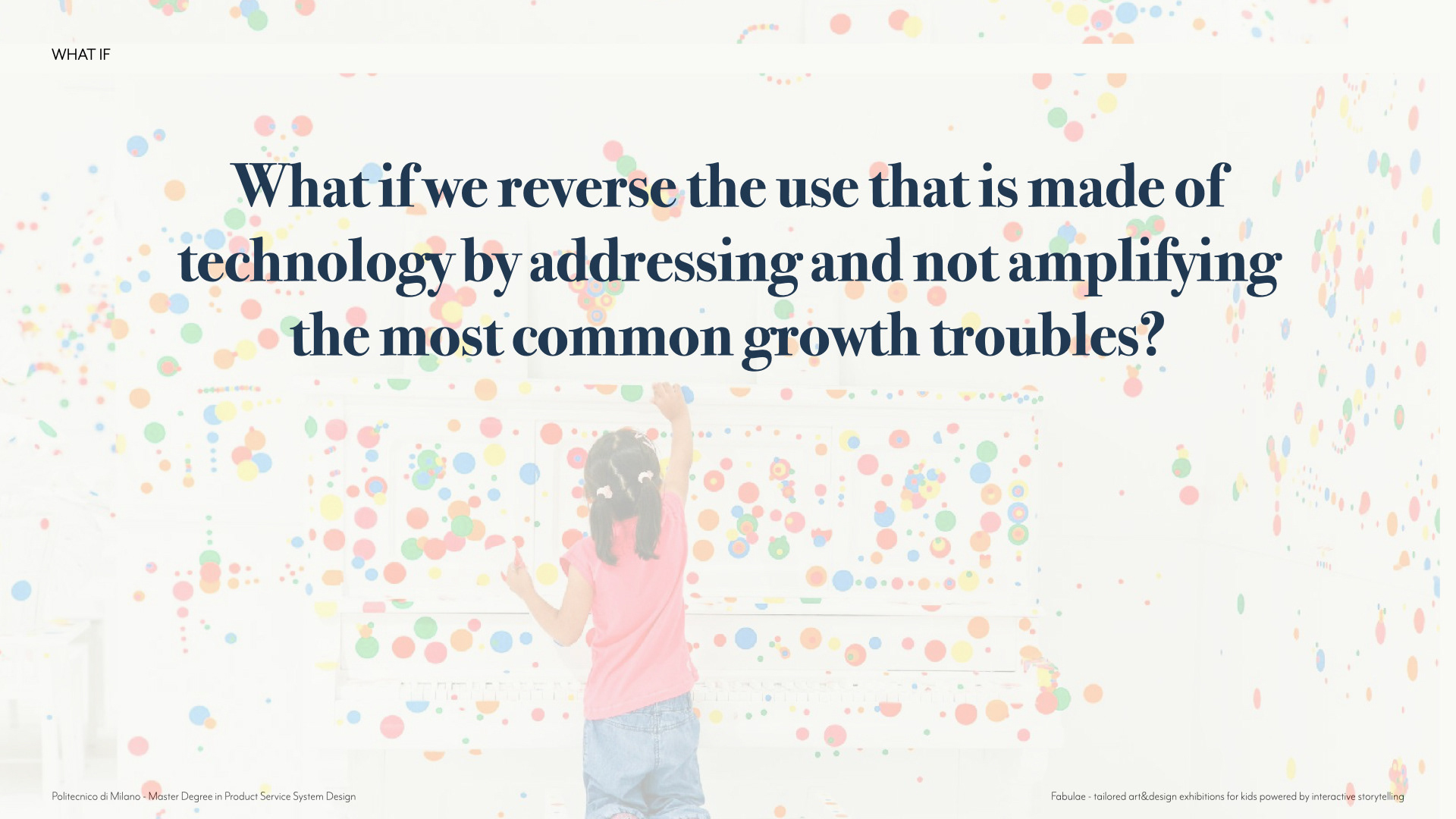
What if we reverse the use that is made of technology by addressing and not amplifying the most common growth troubles?
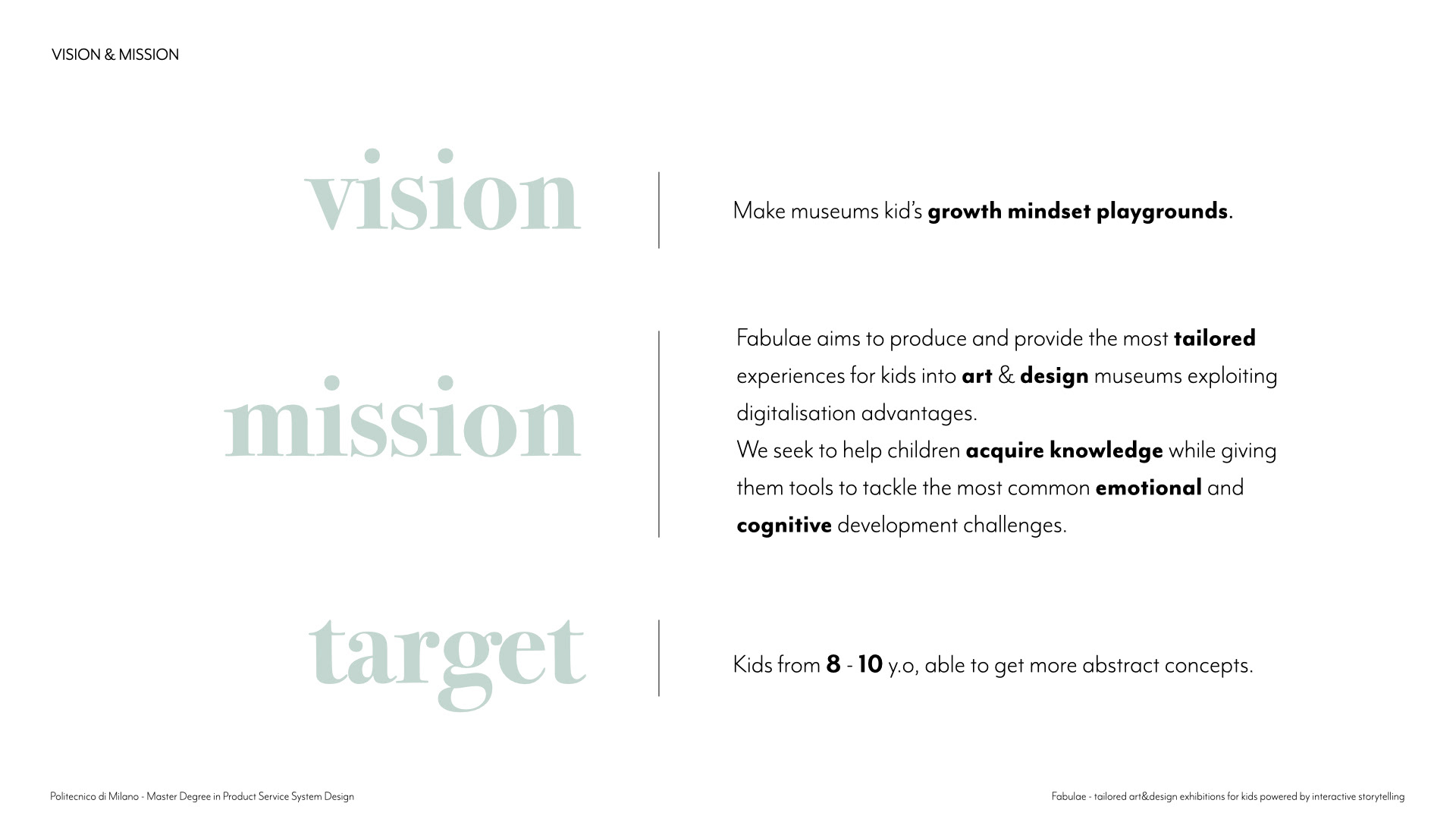
So I designed Fabulae, a service Intended to make museums growth mindset playgrounds FOR KIDS. To do so we are going to exploit digitalisation advantages and offer the most tailored experiences, so that to properly teach children museums contents, while providing tools to tackle the most common challenges linked to the emotional and cognitive sphere. As a target, we choose families with kids aged 8.10 y.o since they start being able to work on more abstract and complex concepts.
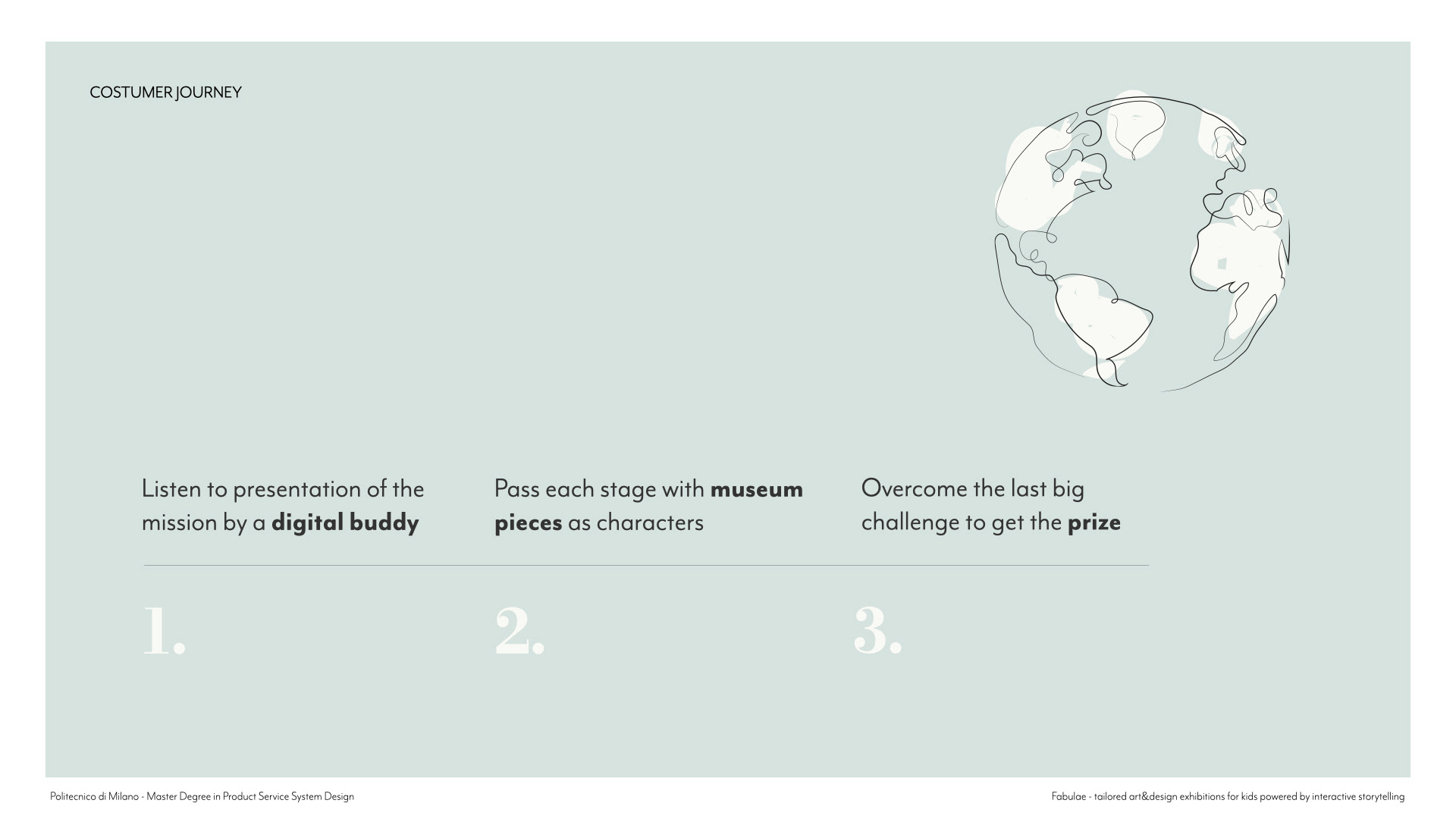
Children CJ inside the museum is led by a device and follows a fairy tale plot, in which they are the protagonist. With the help of a digital buddy in fact they will be able to complete a mission, by passing certain stages of which the museum's pieces are the characters.

and the pieces, will be the ones telling about the struggles they had to face during their childhood, by hiding through their stories, some therapeutical tools that should be used to face them
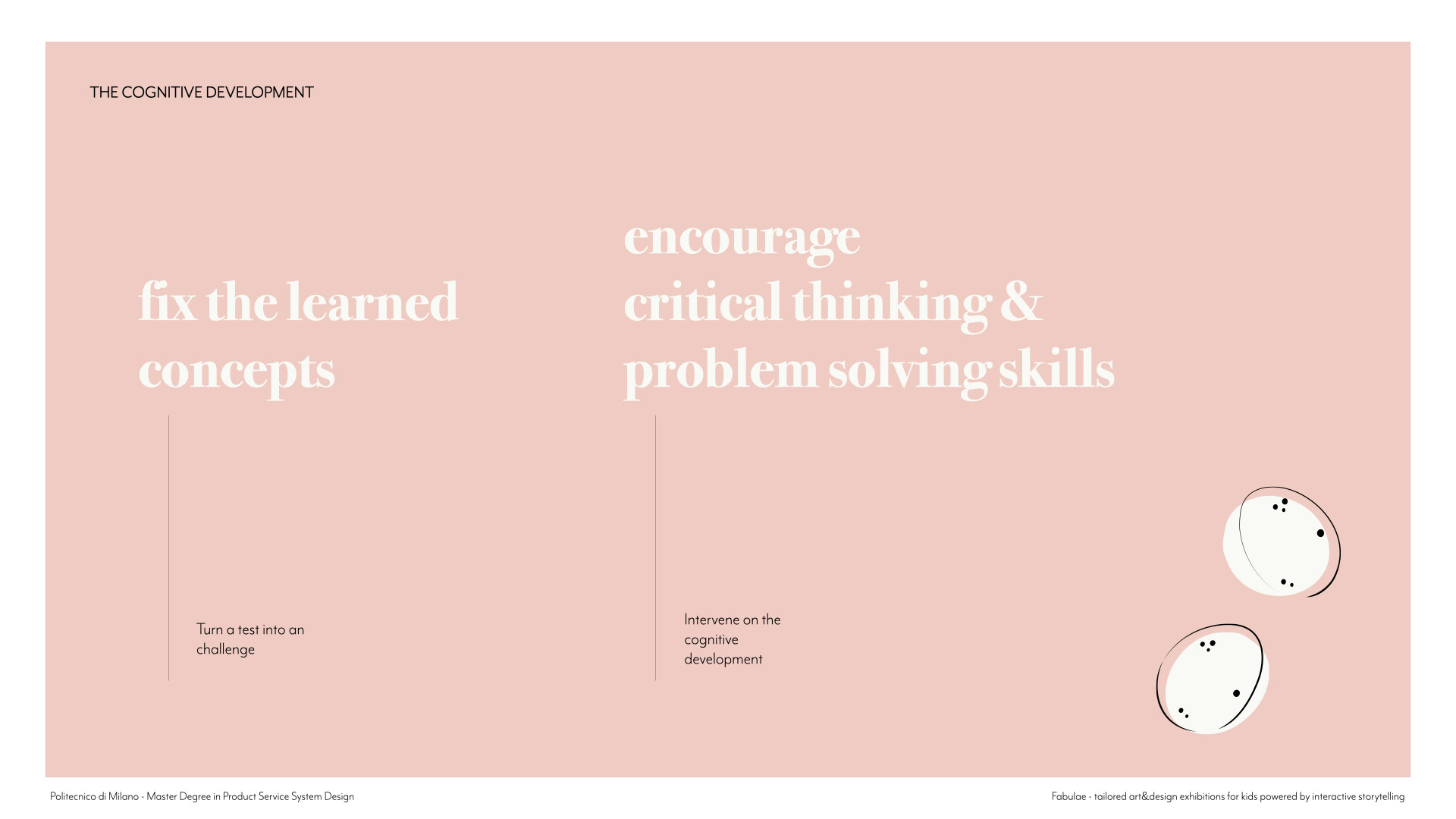
They will also propose tests especially designed to apply the learned concepts while encouraging creativity, critical thinking and problem solving skills.
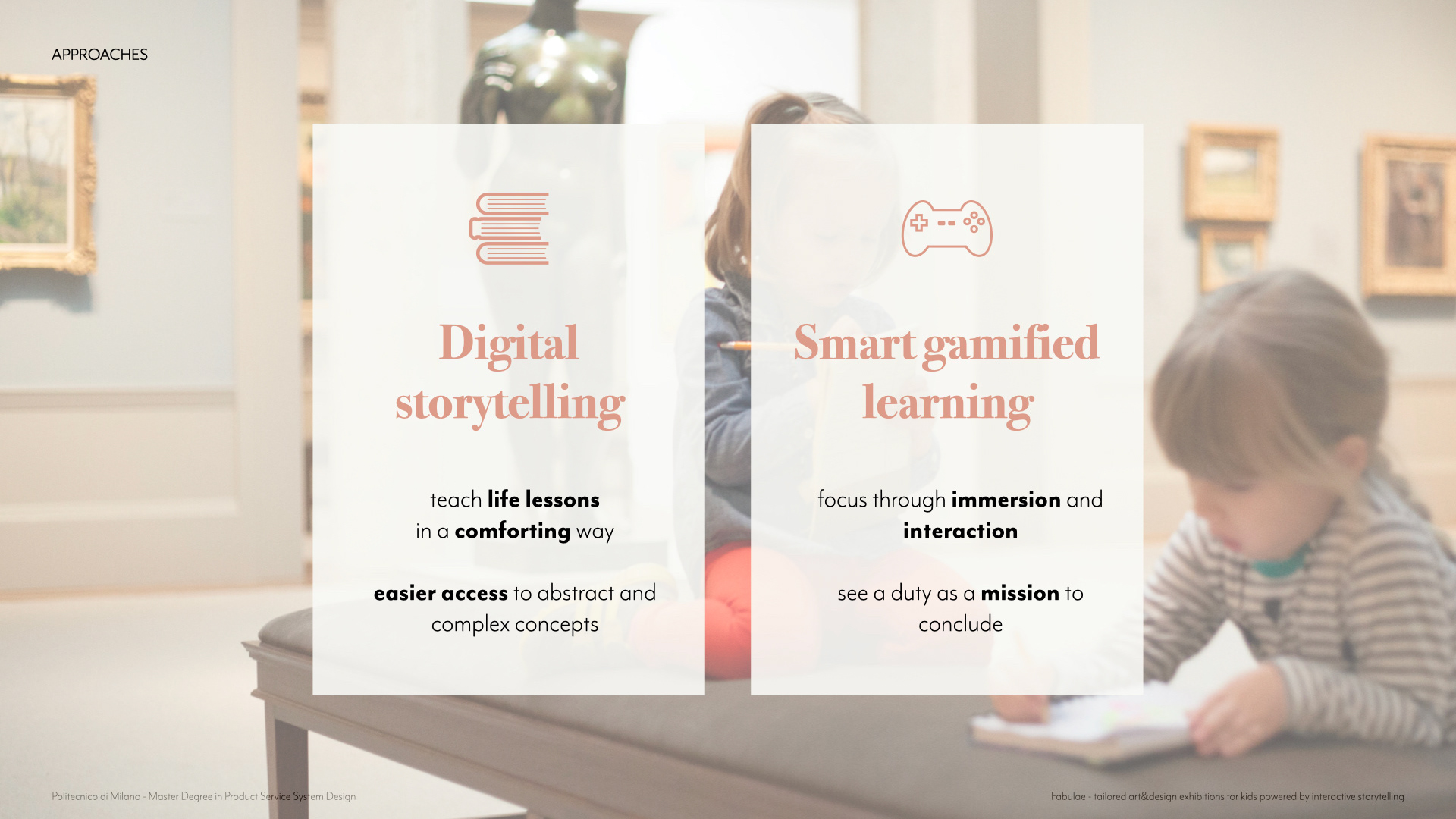
To obtain these results, I combined smart gamified learning with digital storytelling. On one side tales manage to teach children life lessons in a comforting way giving easier access to abstract and complex concepts. On the other, smart gamified learning environments, thanks to immersion and interaction factors, really works well when kids need focus on a task and helping them see it not as duty but as a mission to accomplish.
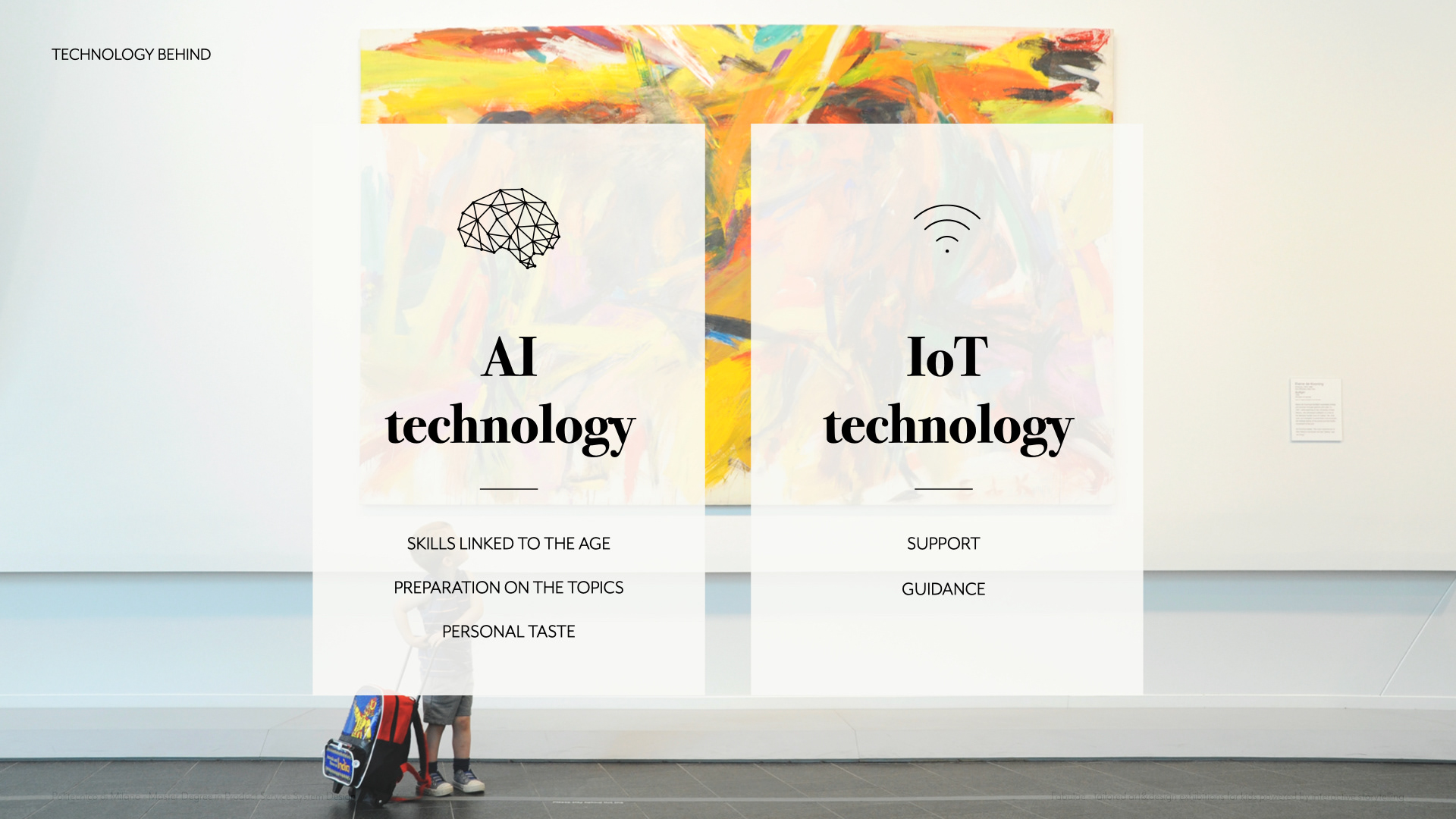
Thanks to Artificial Intelligence, kids are offered the most suitable path according to age, preparation and tastes. The IOT powered digital buddy aims at giving kids support and guidance
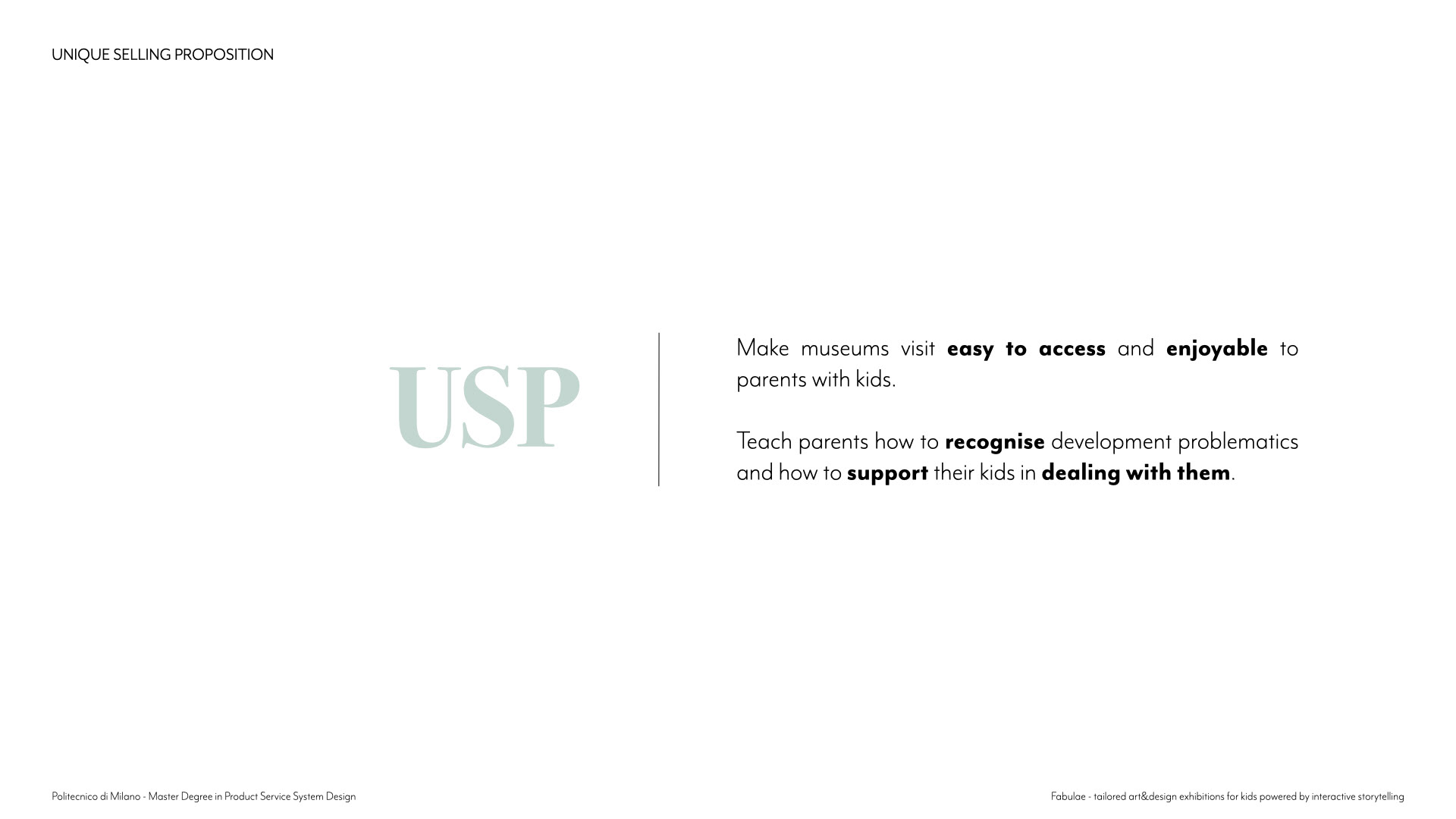
And also reduce parents efforts, allowing them to enjoy the visit as well. But what I really want is to teach mums and dads how to recognise their children problematics and make sure that they learn the best tools to support their kids while dealing with them
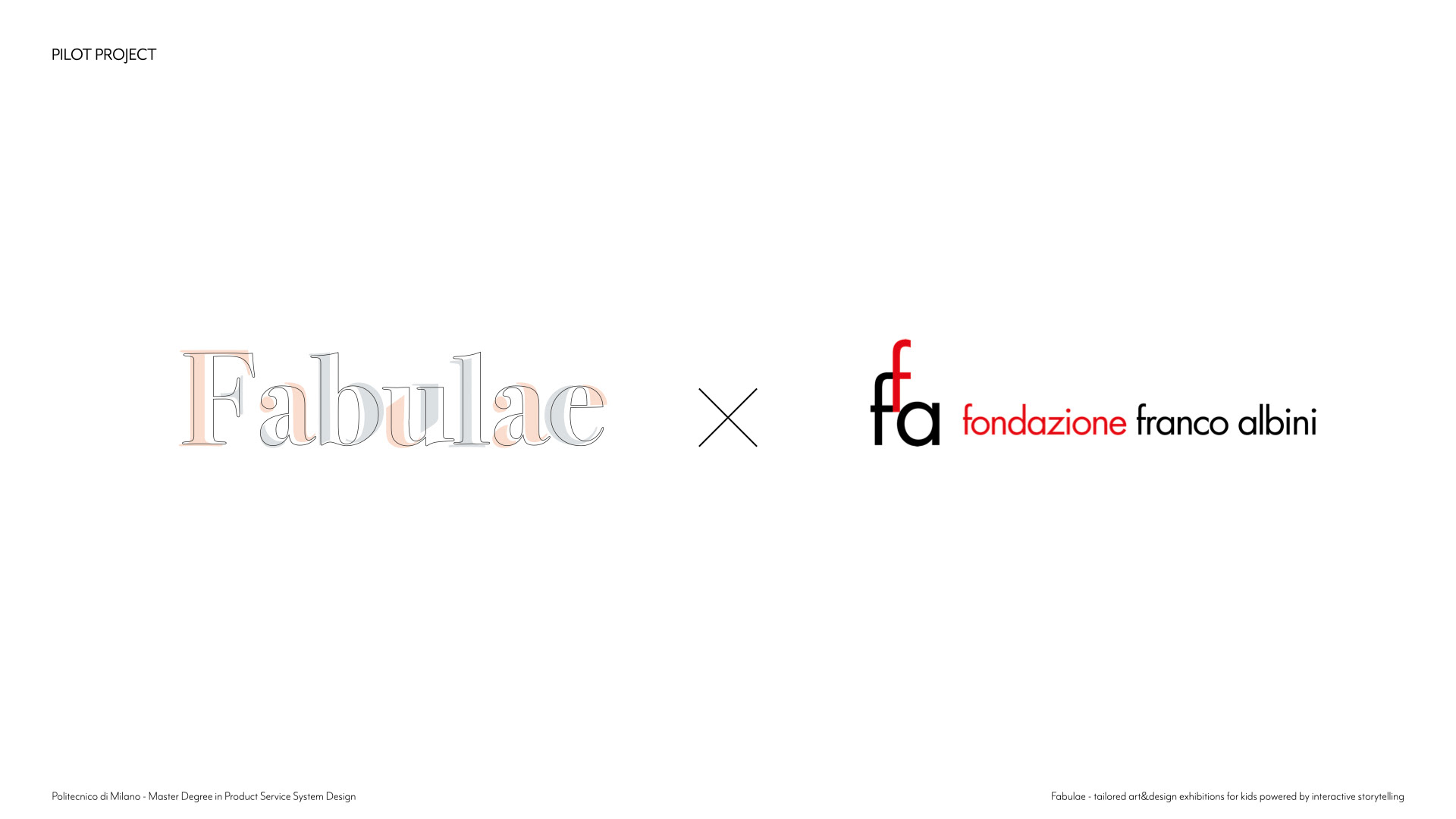
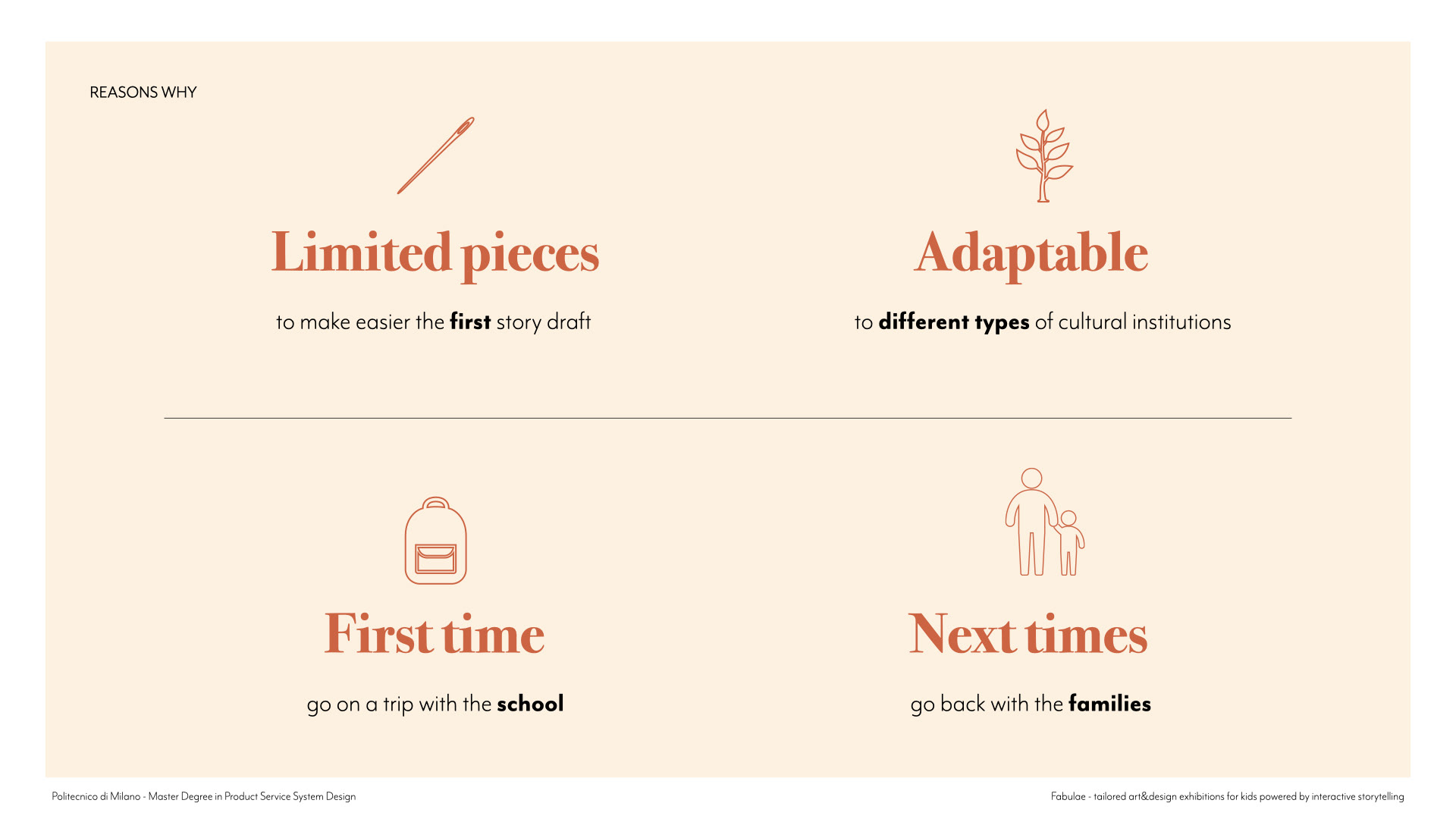
When Fondazione Albini agreed to be Fabulae pilot project, I was really happy because their collection made of a limited number of pieces would have made easier tales drafting process. Secondly, it was important to understand how to make an idea born for big institution suitable to other contexts. iN Fact, while big institutions have the means to reach families directly, small design foundations need a different approach. Fabule expectes children to get to know Fondazione Albini through school trips, and engage enough to come back other timeswith their families.
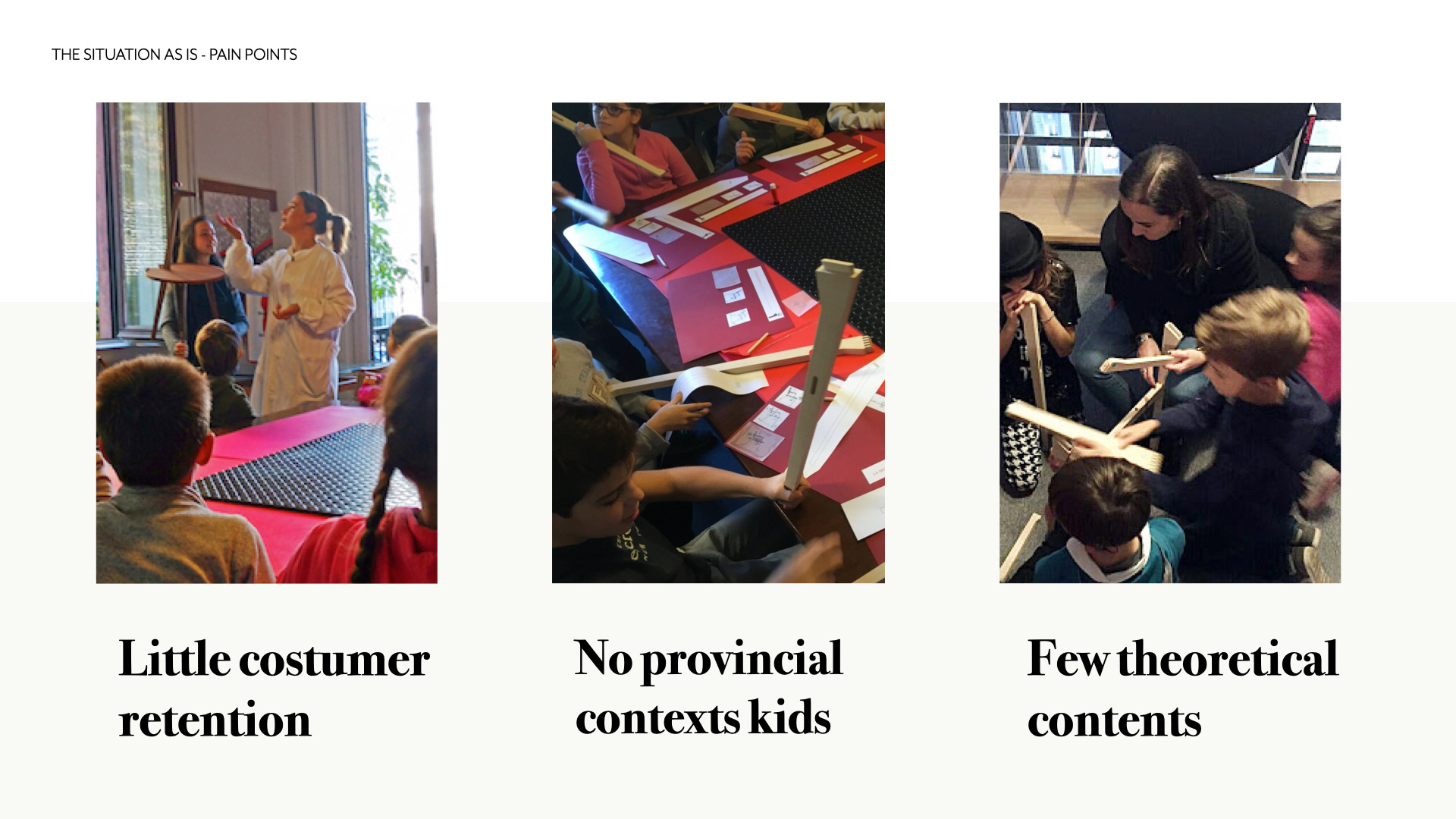
In fact, even if visitors turnout was high, it consisted almost in just occasional visits. Made, in turn, of children coming from a milanese high social background. Furthermore all the proposed Labs were very practical, lacking a little bit on theoretical contents.

And among them all, the ones including the little Cicognino table had always been the most appreciated by children. Reason why we decided to make it the buddy of Fabulae project

which at the end included 5 stories, each lasting one hour and half and made of five steps. All of them were draft with the contributions of some professional figures following the design thinking approach.
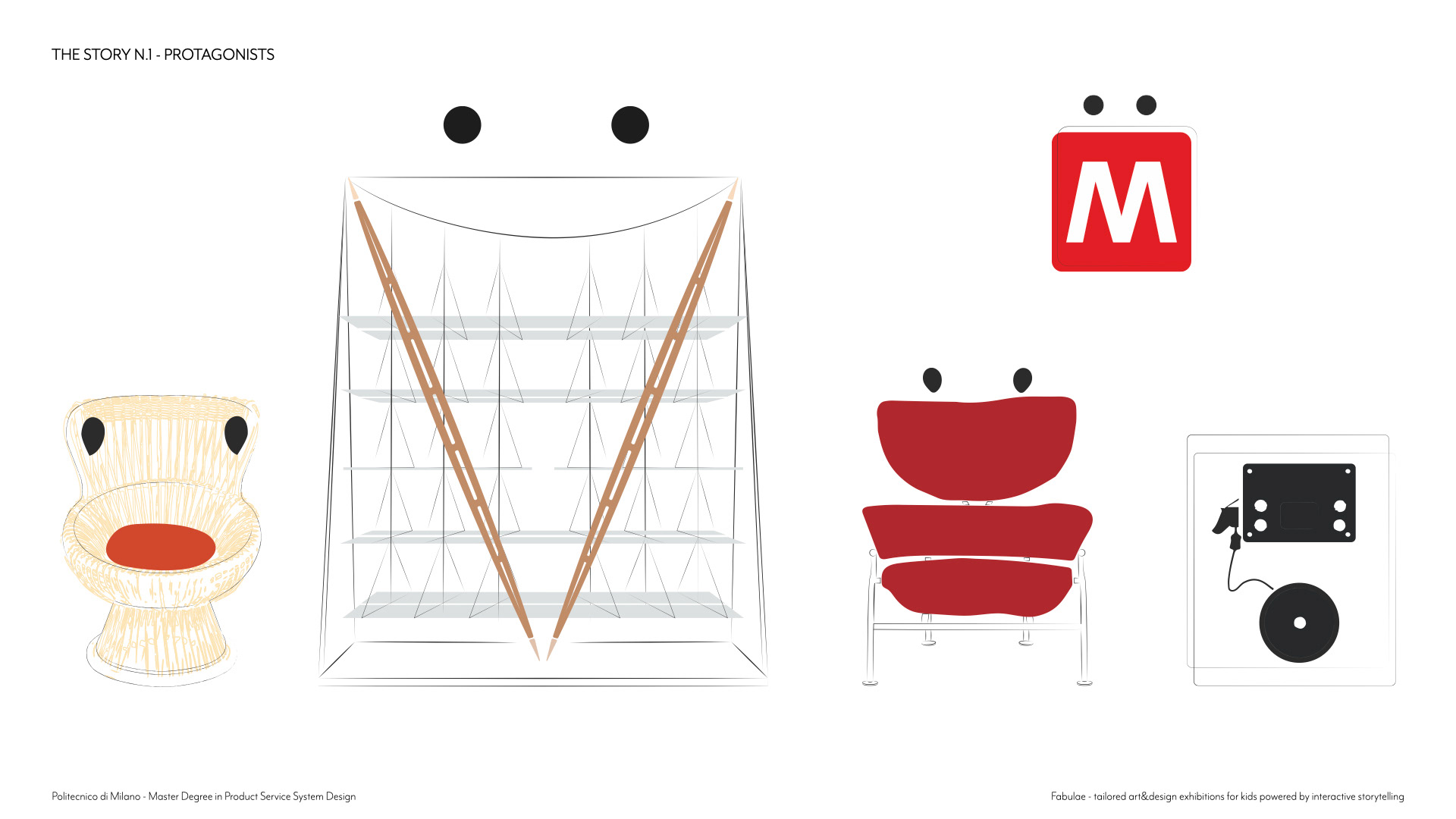
Of these five stories today I’m gonna briefly introduce you to the first one, in which all these design icons represent the main characters.
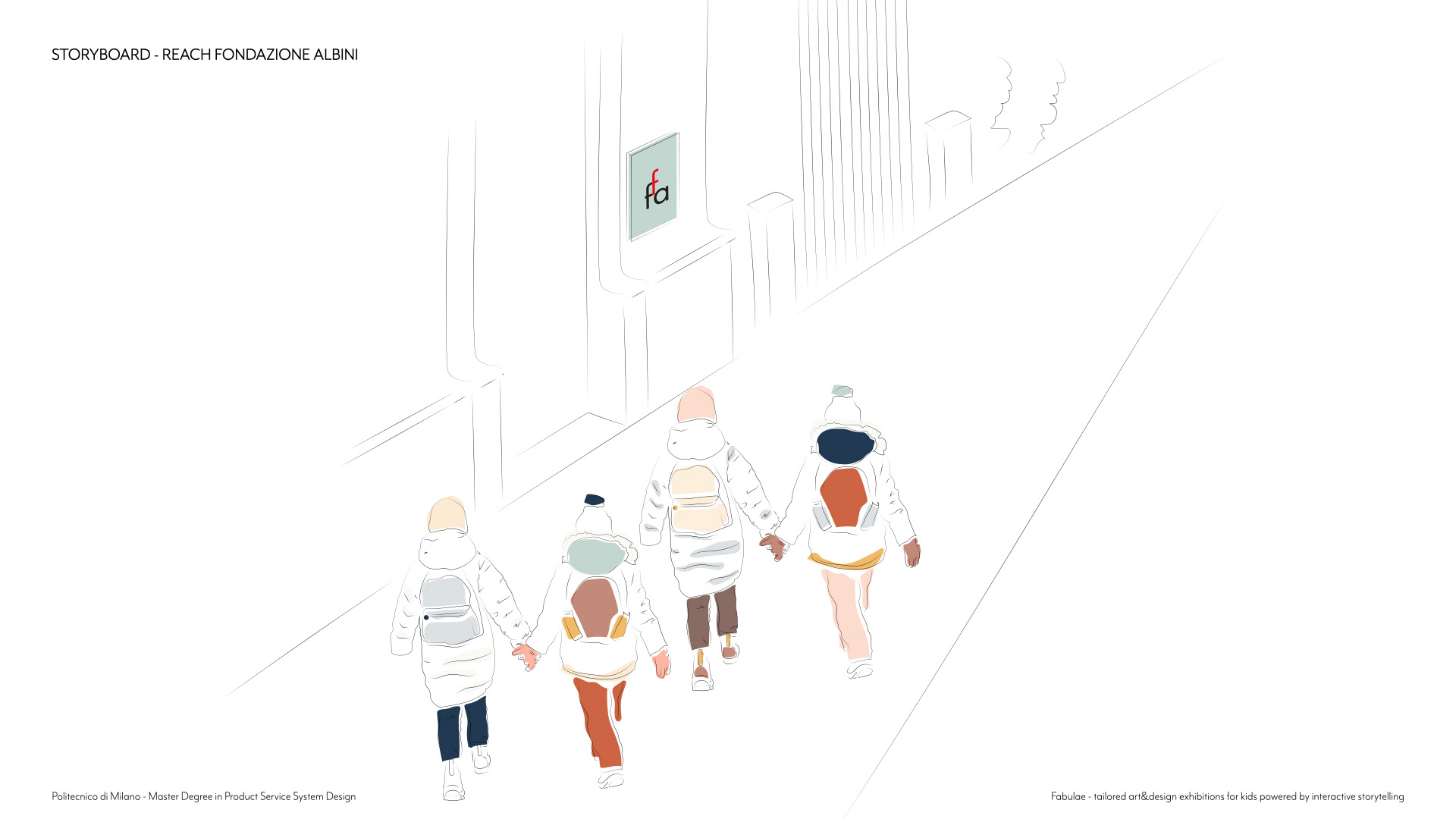
The CJ starts with the whole class heading to Fondazione Albini all together.
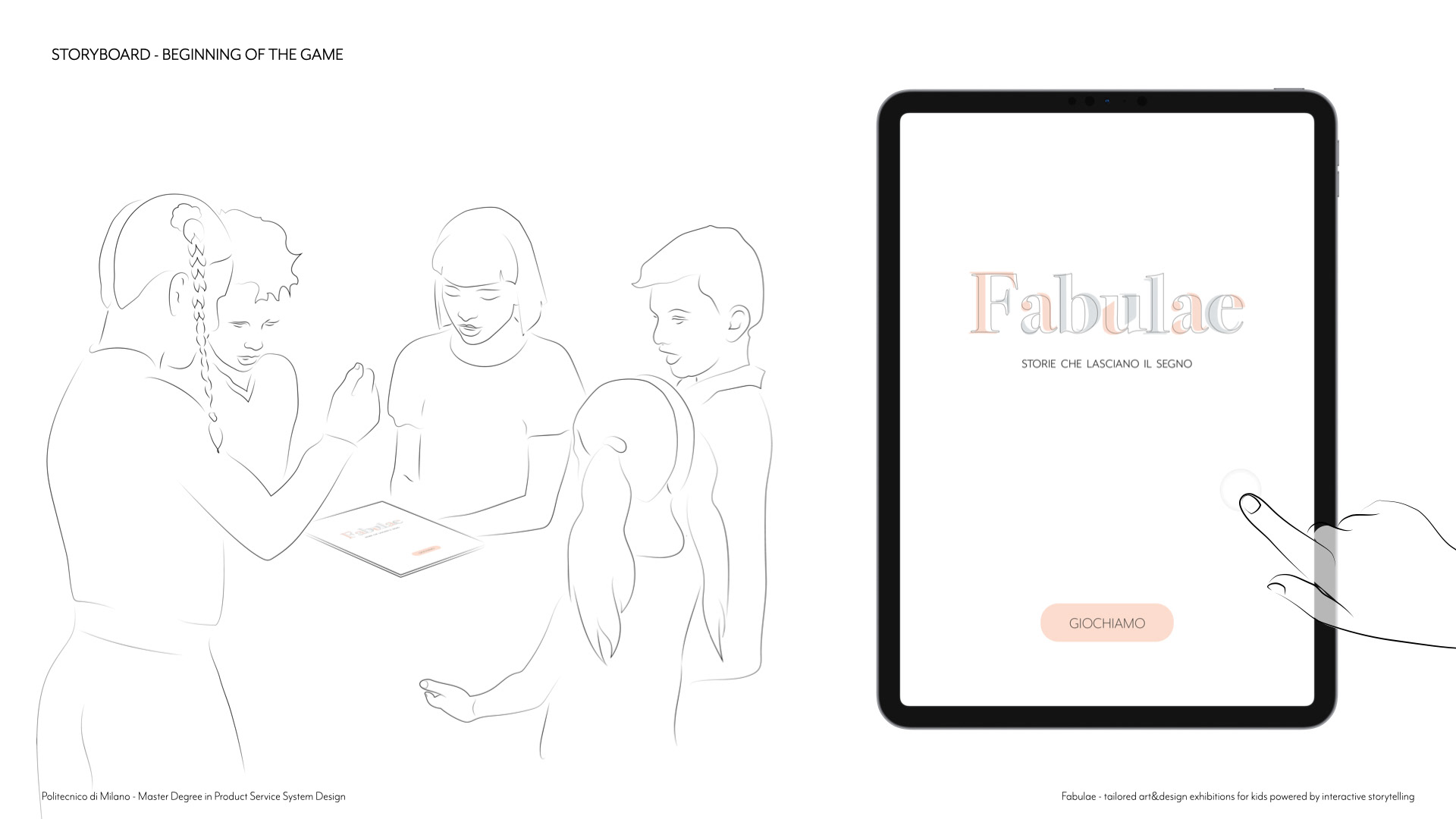
Where kids will be divided into pre-established groups of 5, aND receive a device with the game.
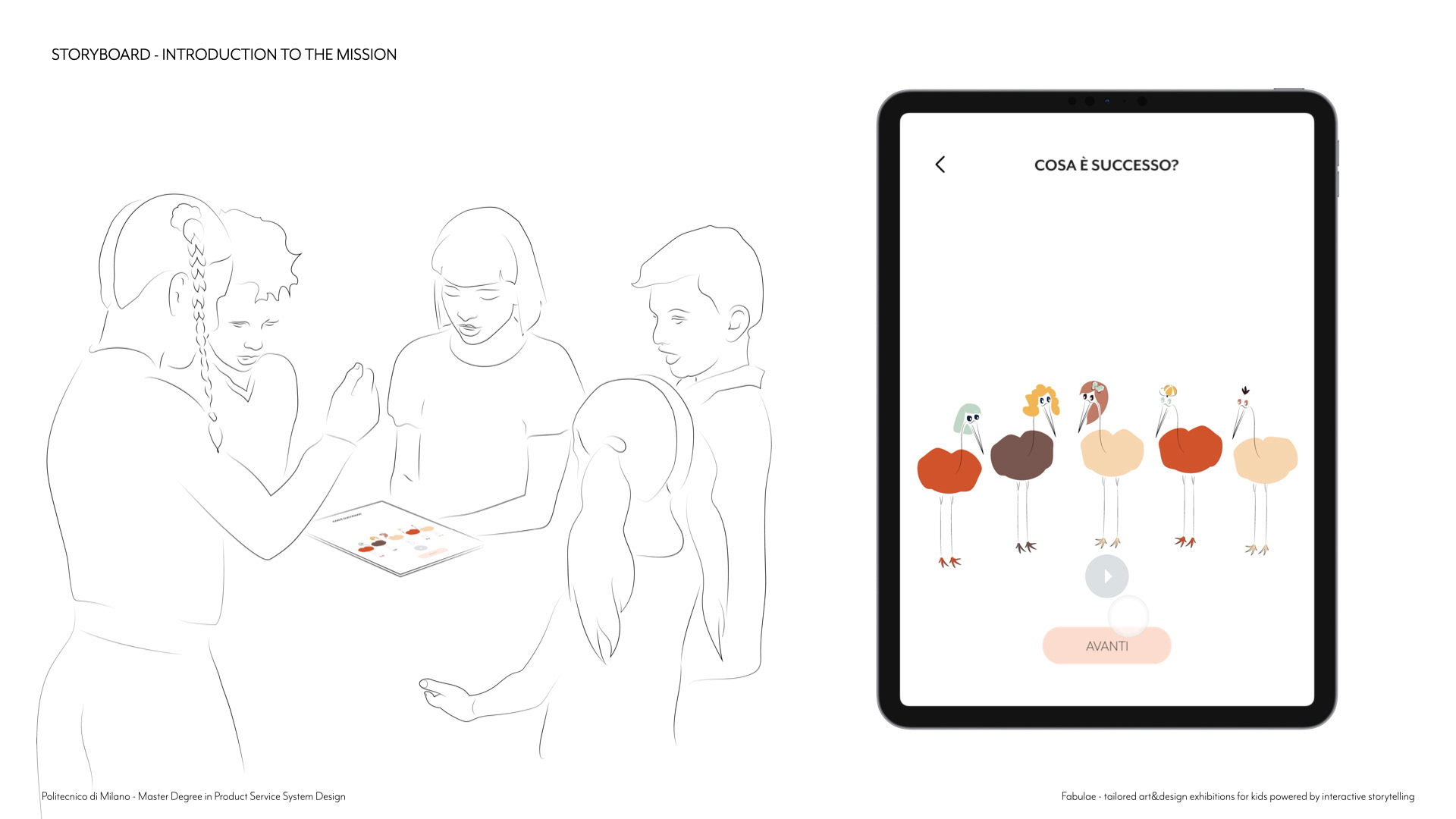
On which the cicognini will introduce themselves, saying that one of them, Babu, has run away from a group bullies and they need help to find him.
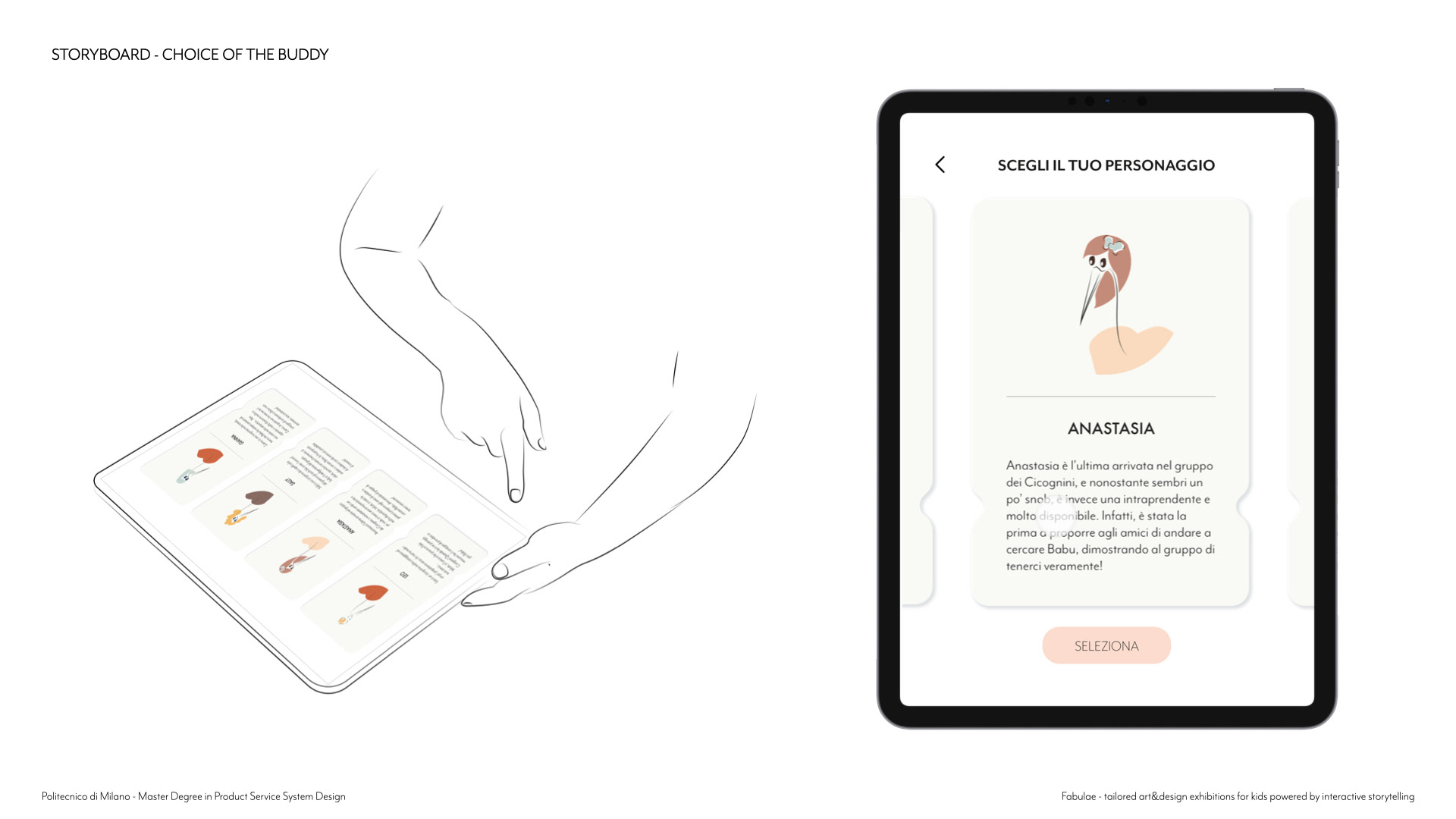
After that, the group will have to choose among Babu’s friends one as a buddy.
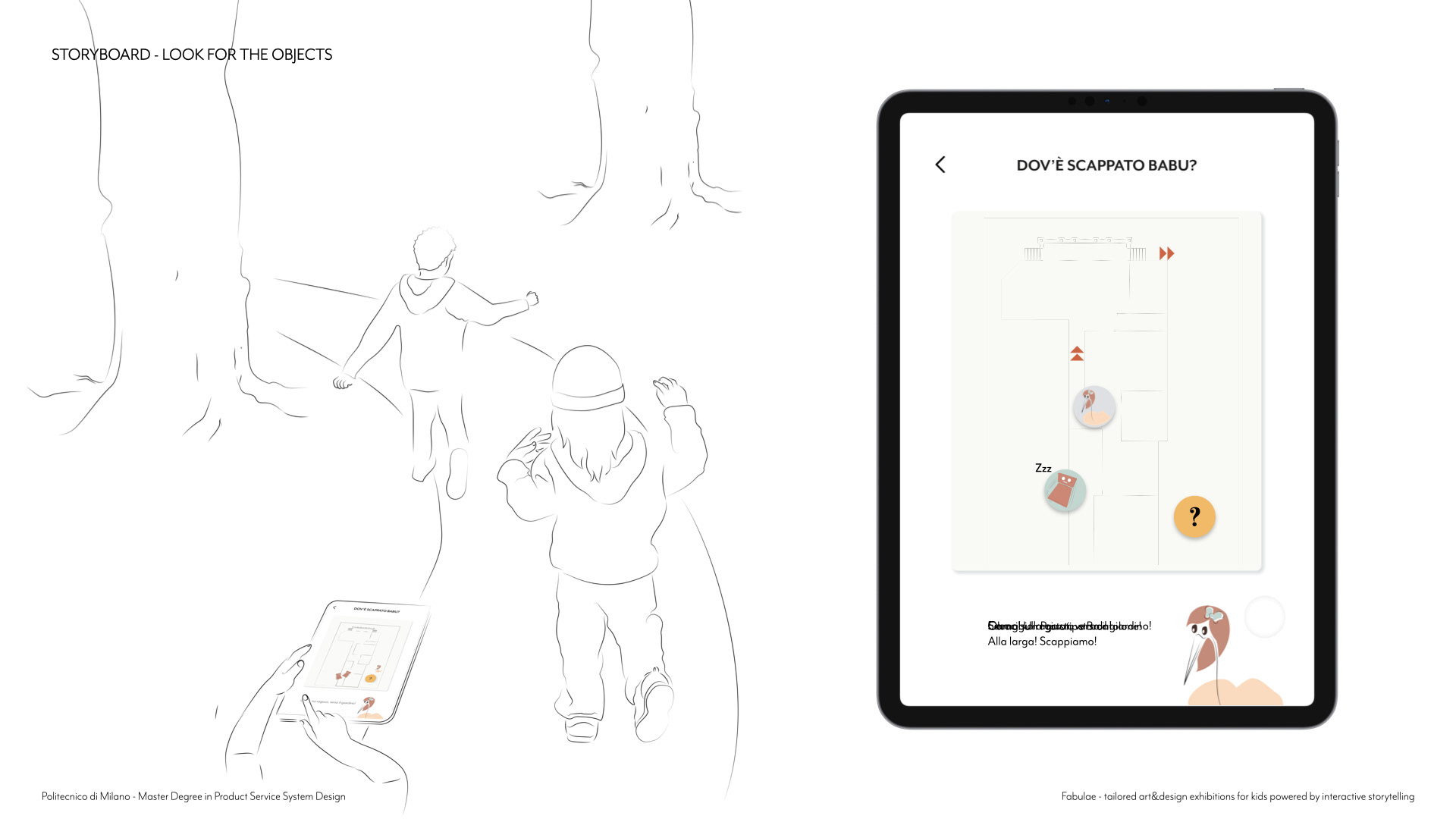
After informing the kids about Fondazione’s rules, the buddy will address them to the garden, saying that maybe he was looking for something similar to a nest where to hide. The buddy will give indication trough an interactive map, on which, as long as they get closer to the target, this will appear as a clickable button.
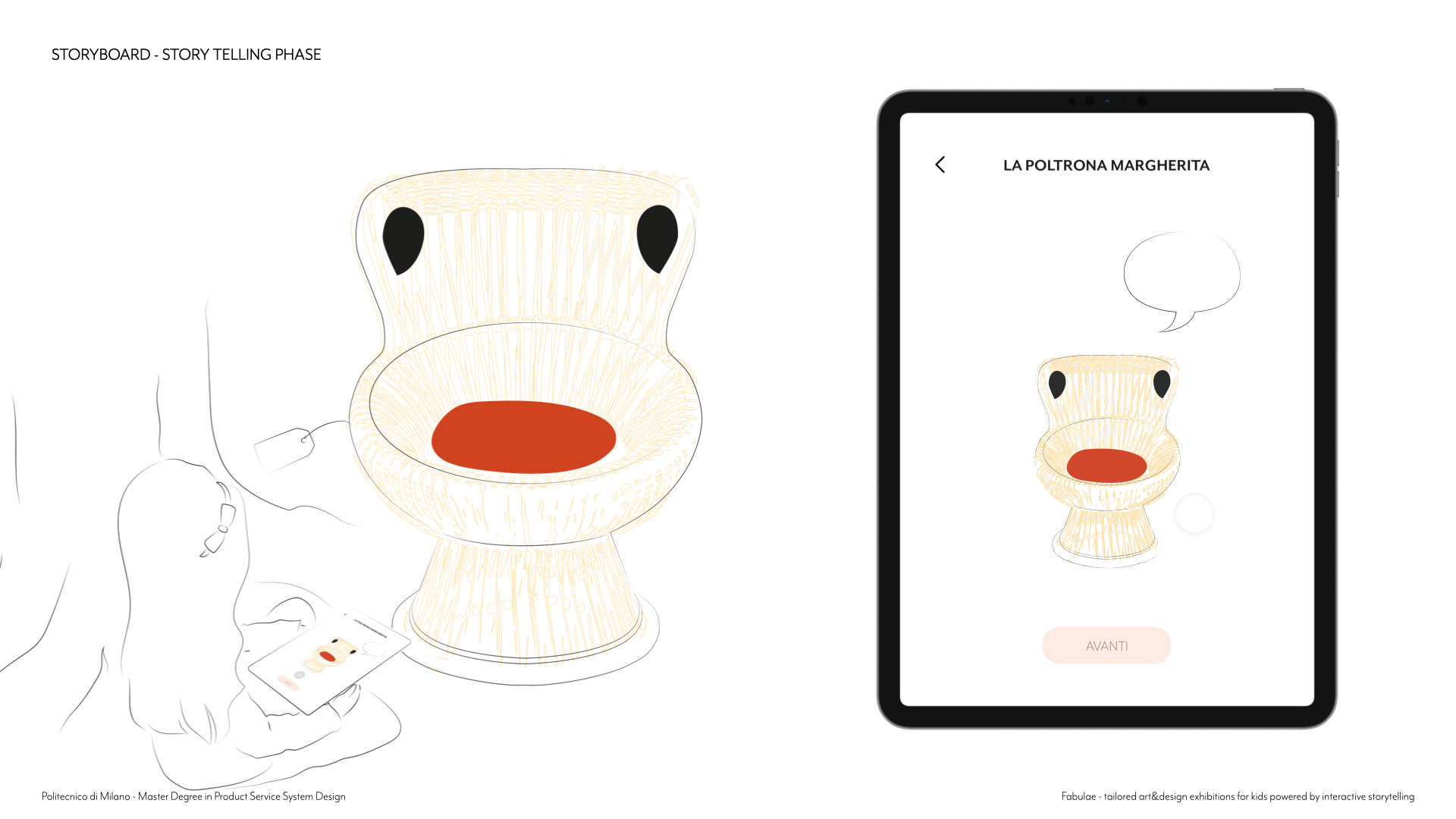
They finally encounter the mysterious nest, Margherita, that will tell kids how, when she was a CHILD, the other armchairs used to tease her because she was made of canes and had just one leg. And how, to cheer her up, dad Franco made her write down each evening how comfy, strong and innovative she was, until she started believing again in herself. If helped by parents, through this little psychological tool consisting in constantly writing down their qualities, kids learn how to welcome diversity and see it as an added value and not flaw.
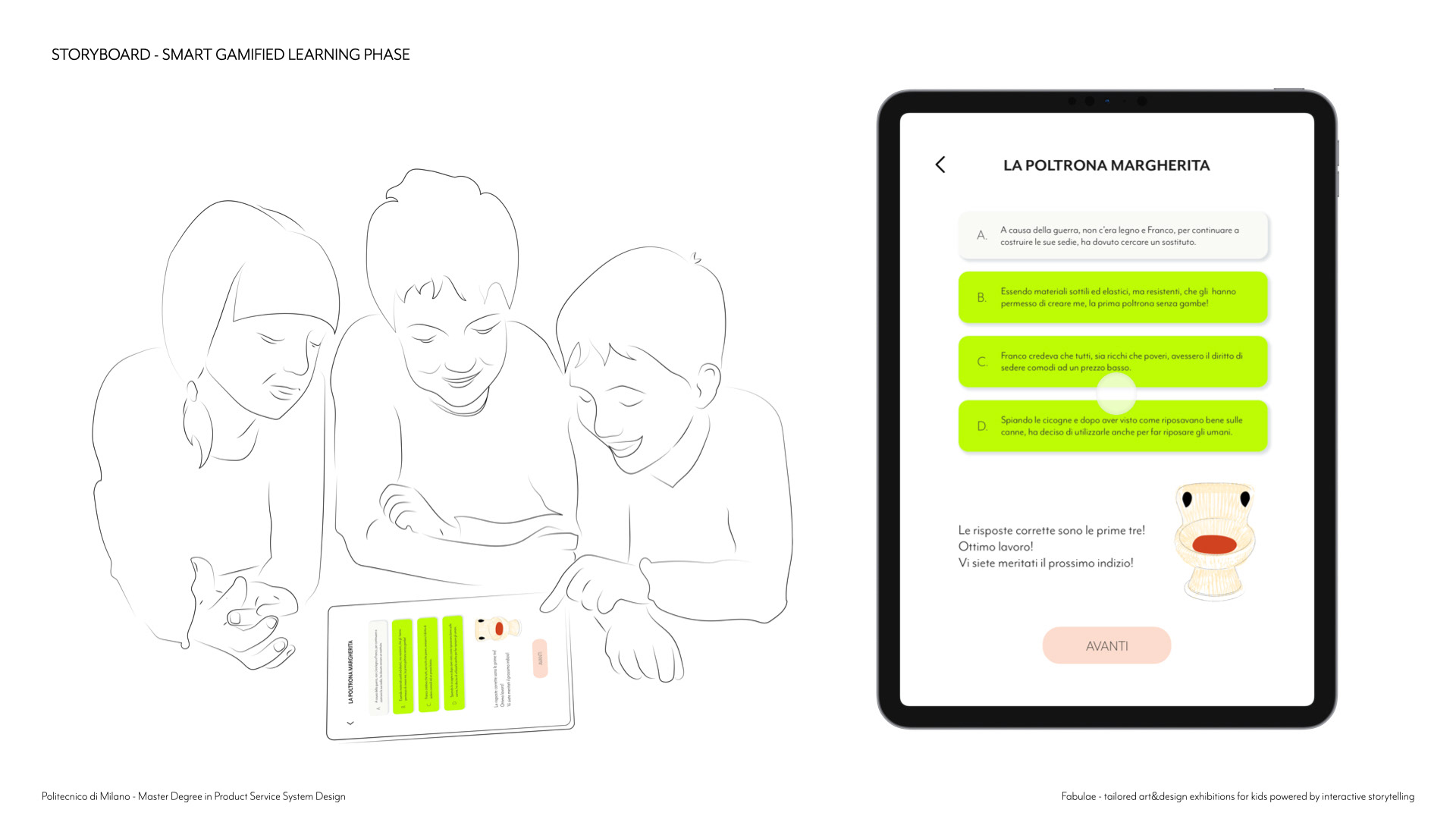
Margherita will also challenge the kids with some tests on what she said, and give them the clue for the next step if they answer correctly.
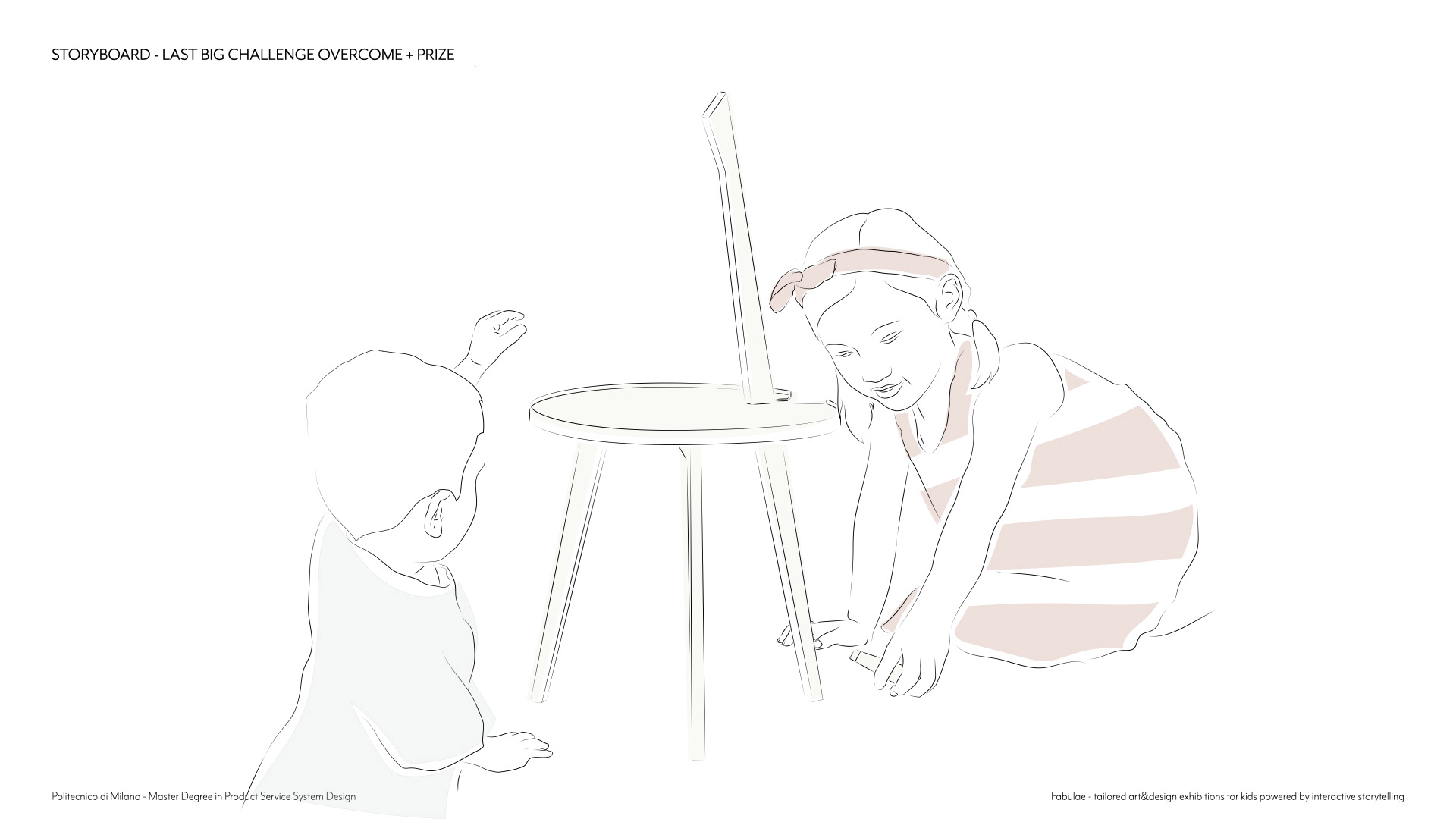
After overcoming all the steps, each group will find one piece of the cicognino each, with the aim of gathering and putting it back on track all together!
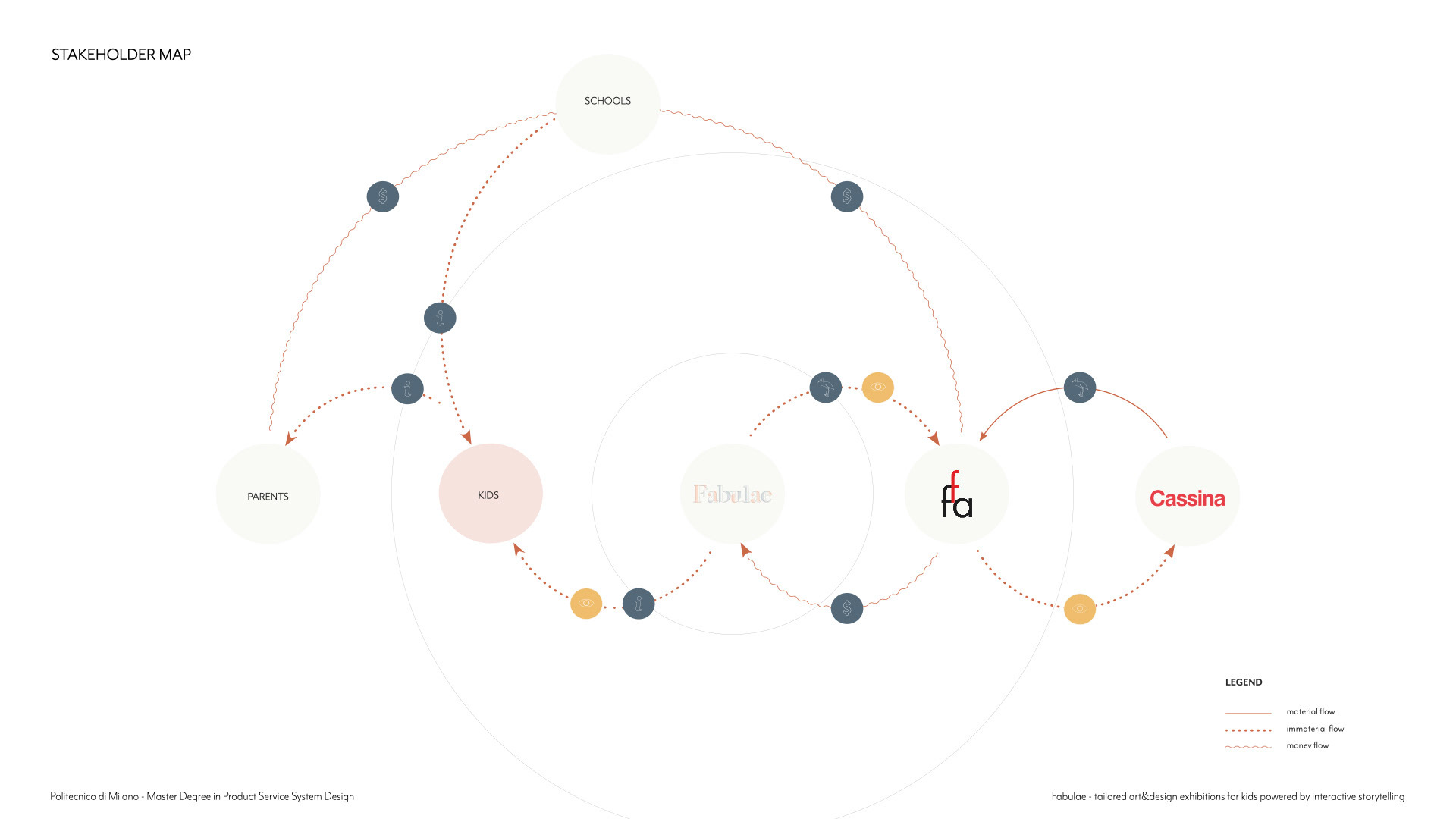
A cicognino that is provided by our partner Cassina®, that, through Fabulae, gains parents’ visibility on its catalogue.
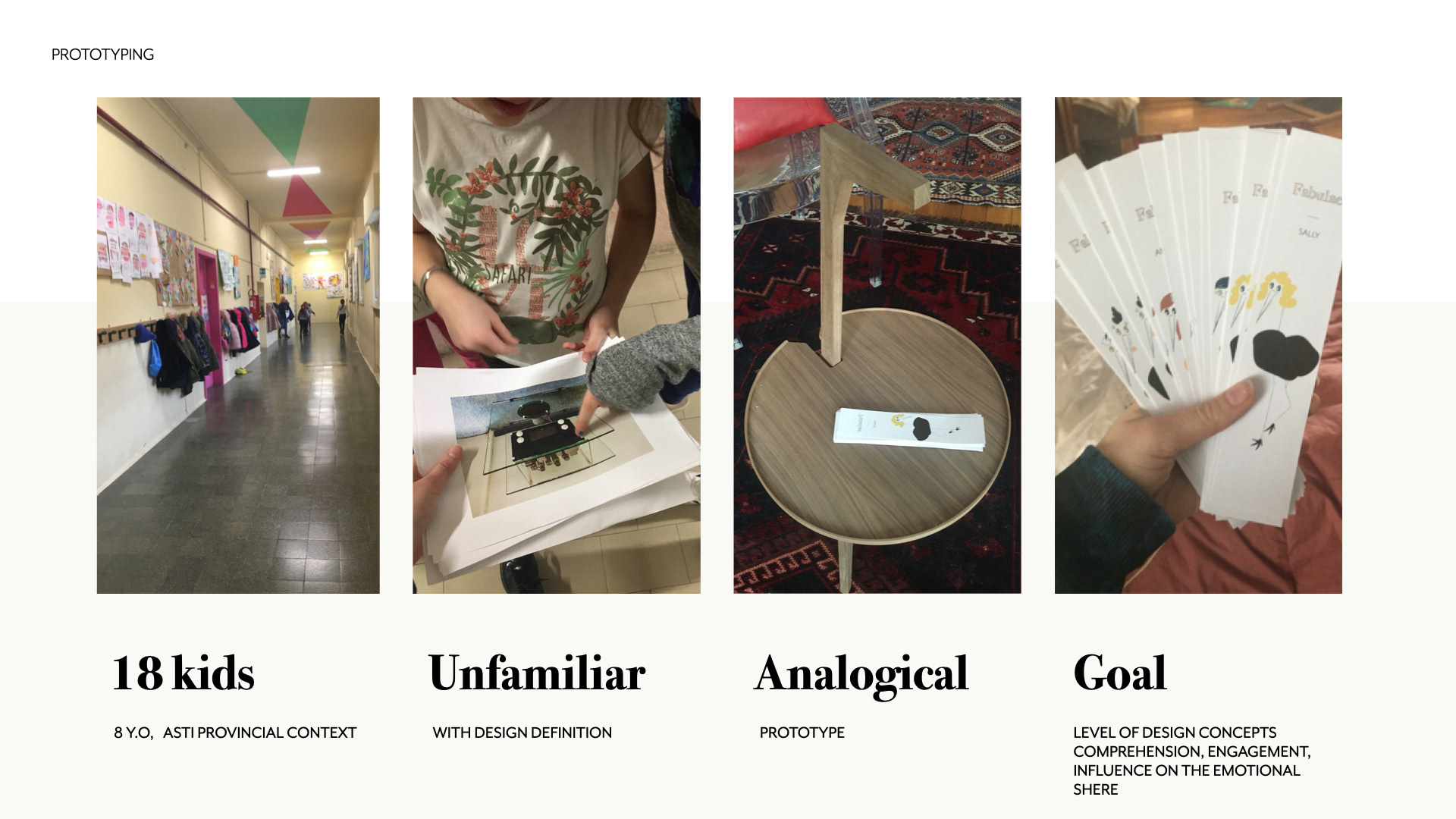
The first story prototype was conducted in the MBA elementary school, in province of Asti, with a class of 18 third graders, who living very far from the Milanese context were super unaware of the concept of design. Since the prototype was all analogical, we were able to use the real Cicognino while all the other protagonists were represented by photos hidden in the school premises. What I wanted to test was if the proposed stories and quiz were understandable and engaging, and observe kids reaction when the pieces talked about the problems they encored while growing up. The results were gathered true my observations and the ones of teachers.
SYD
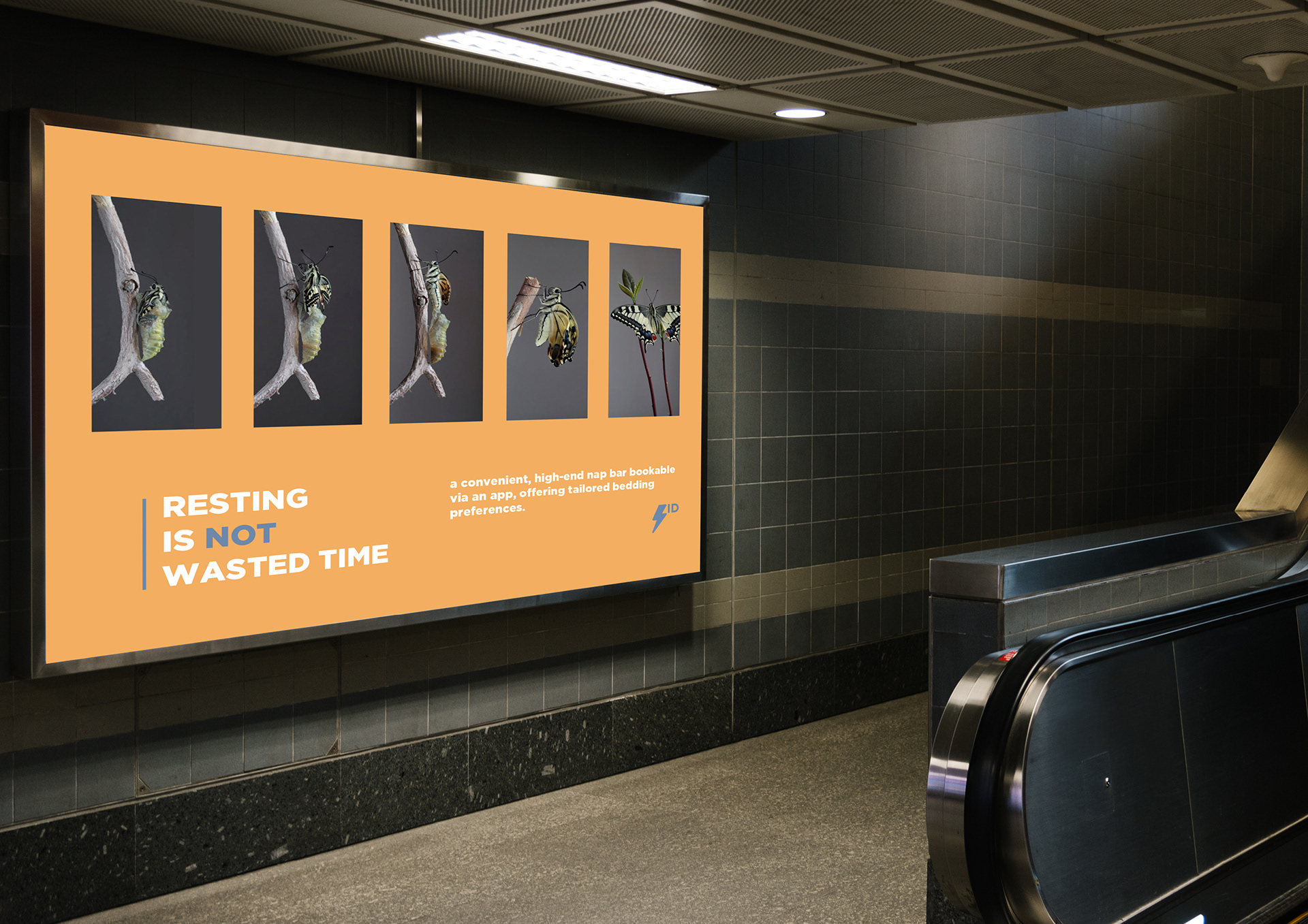
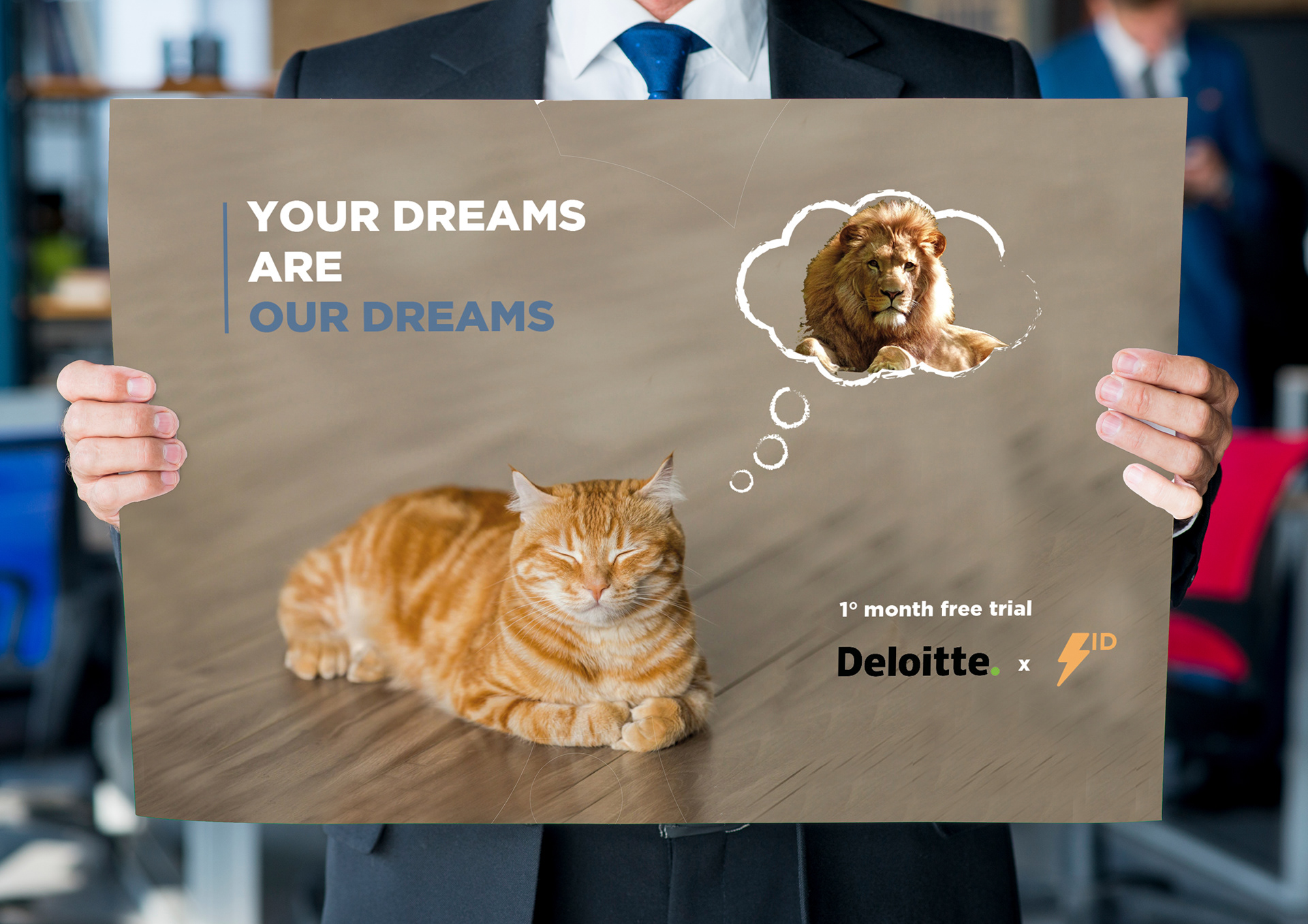


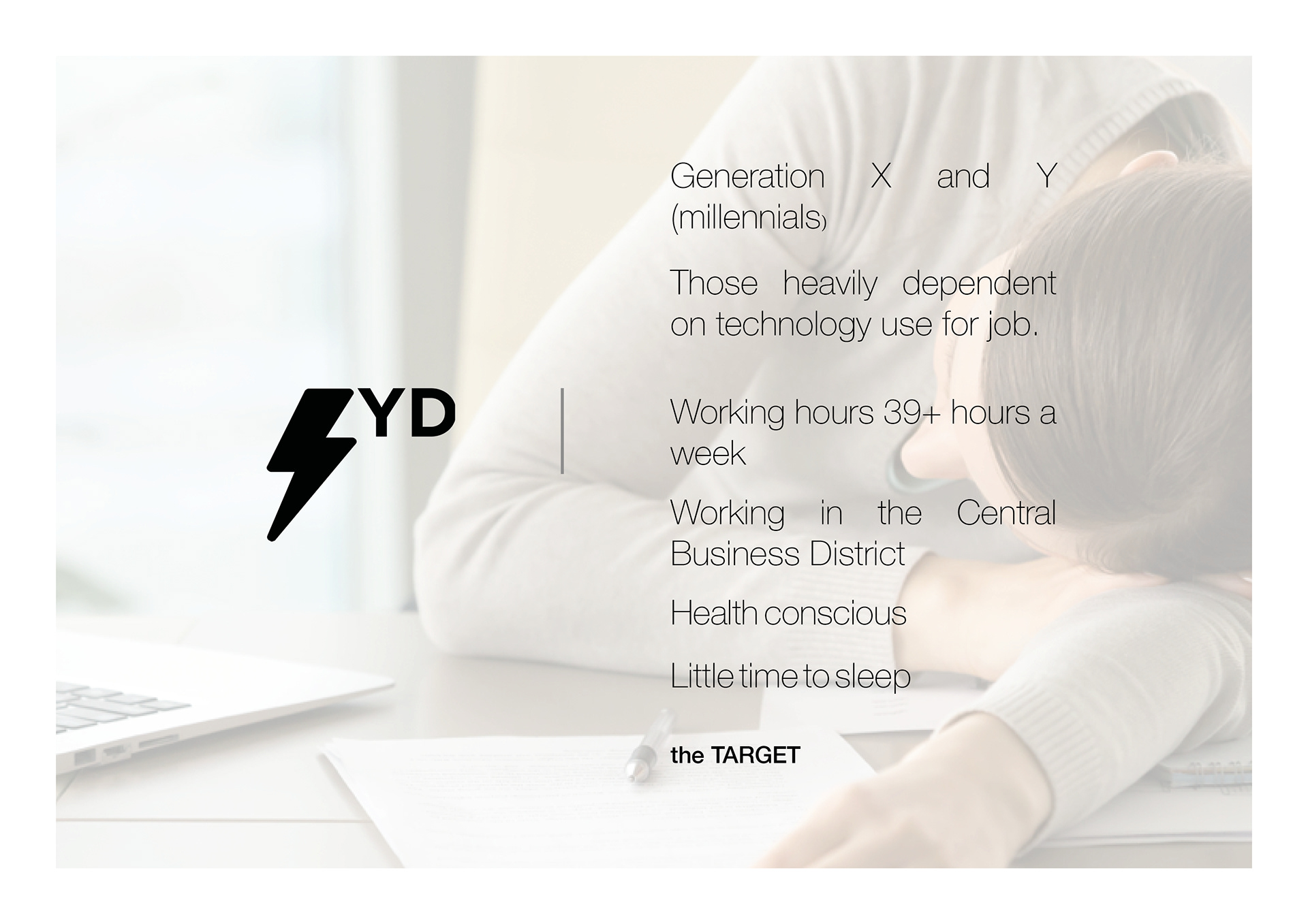

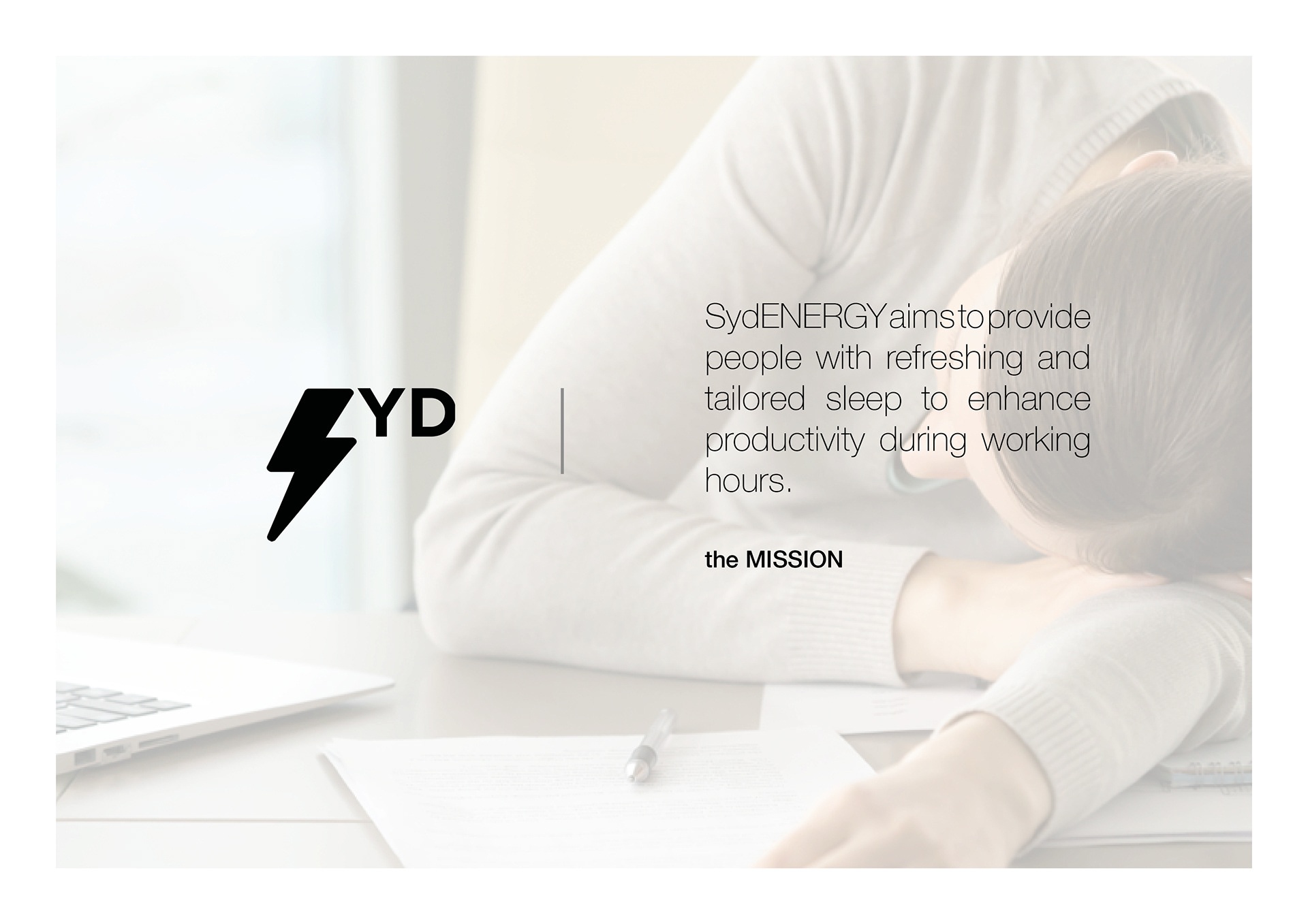




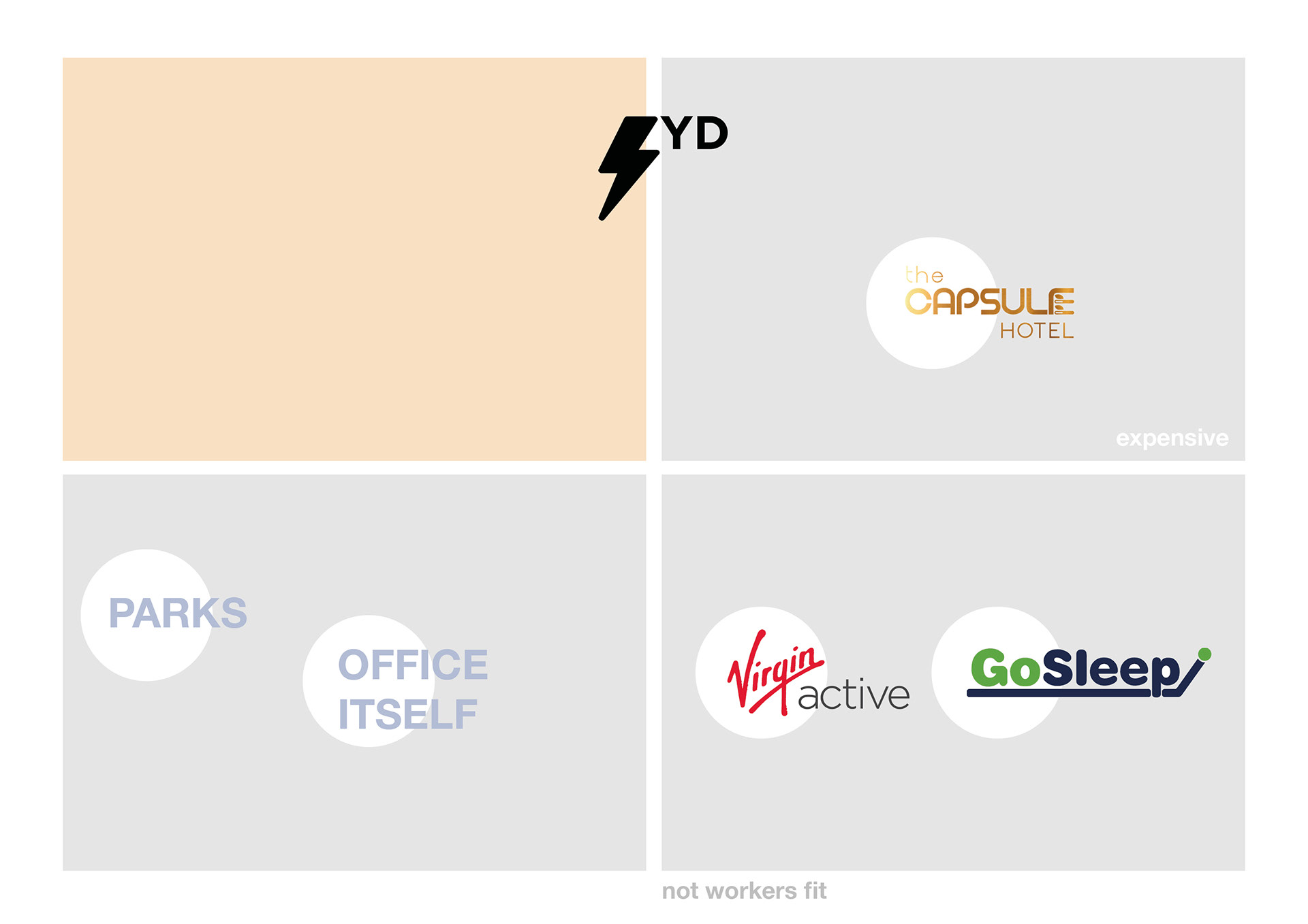
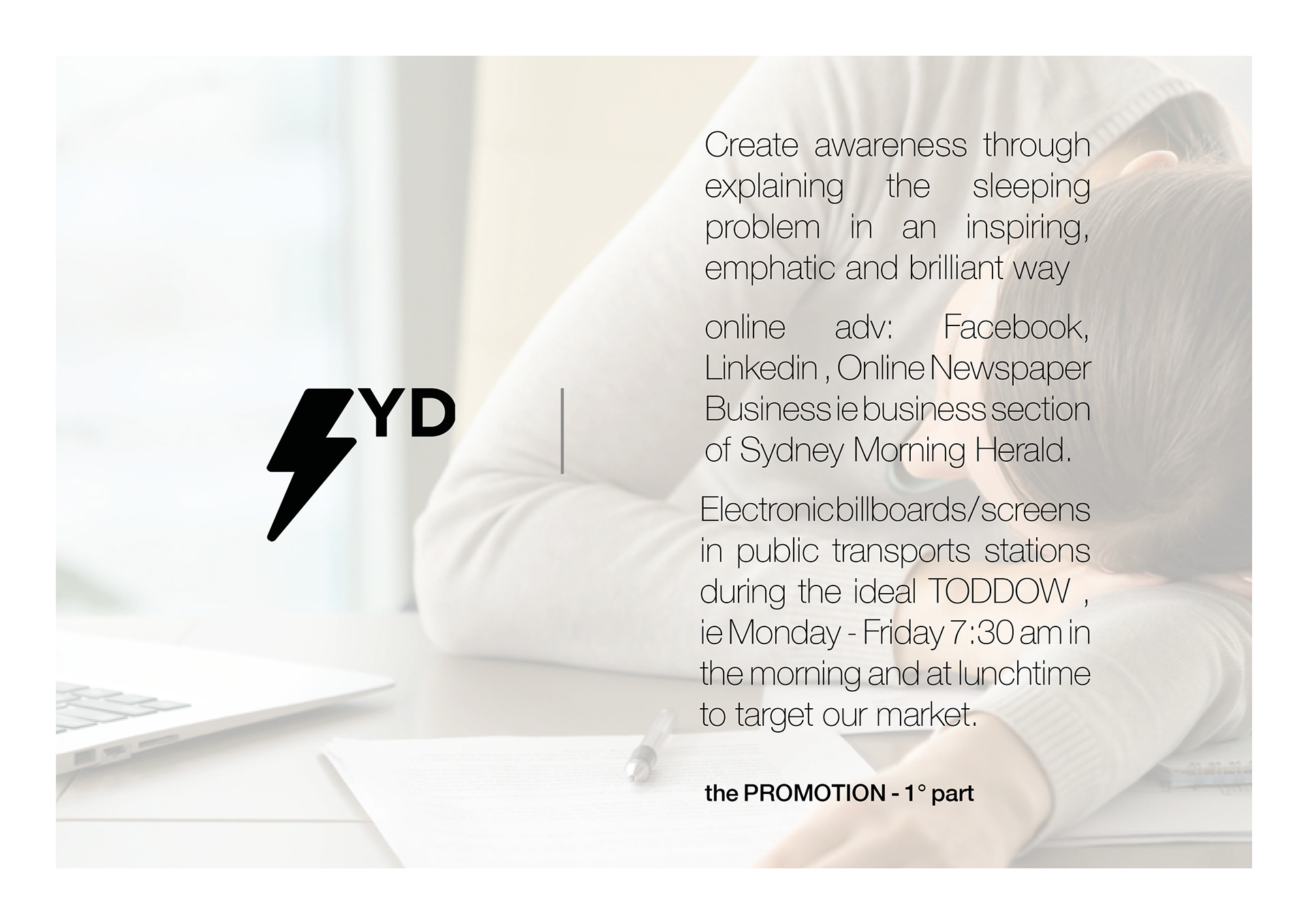

Keat
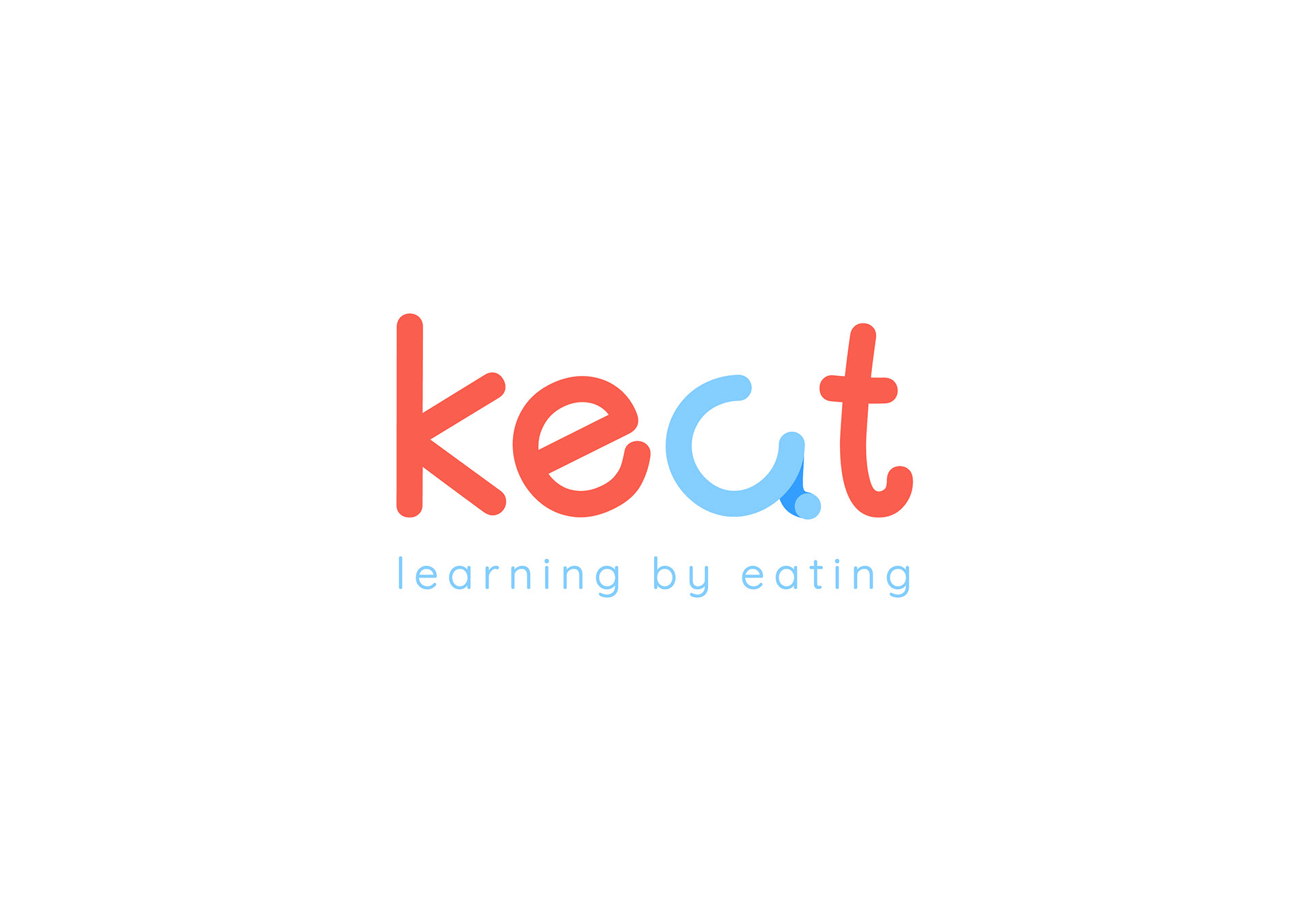
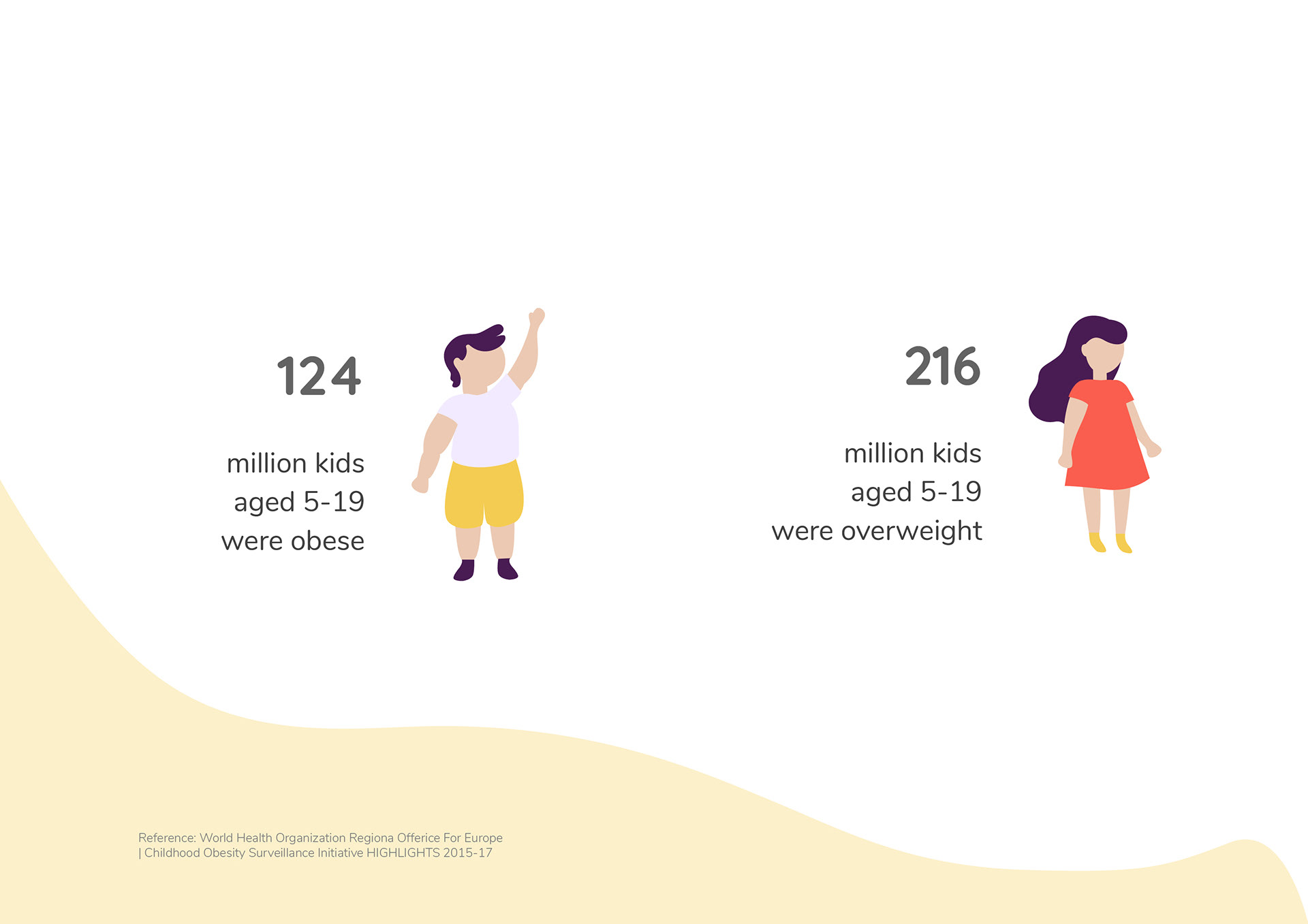
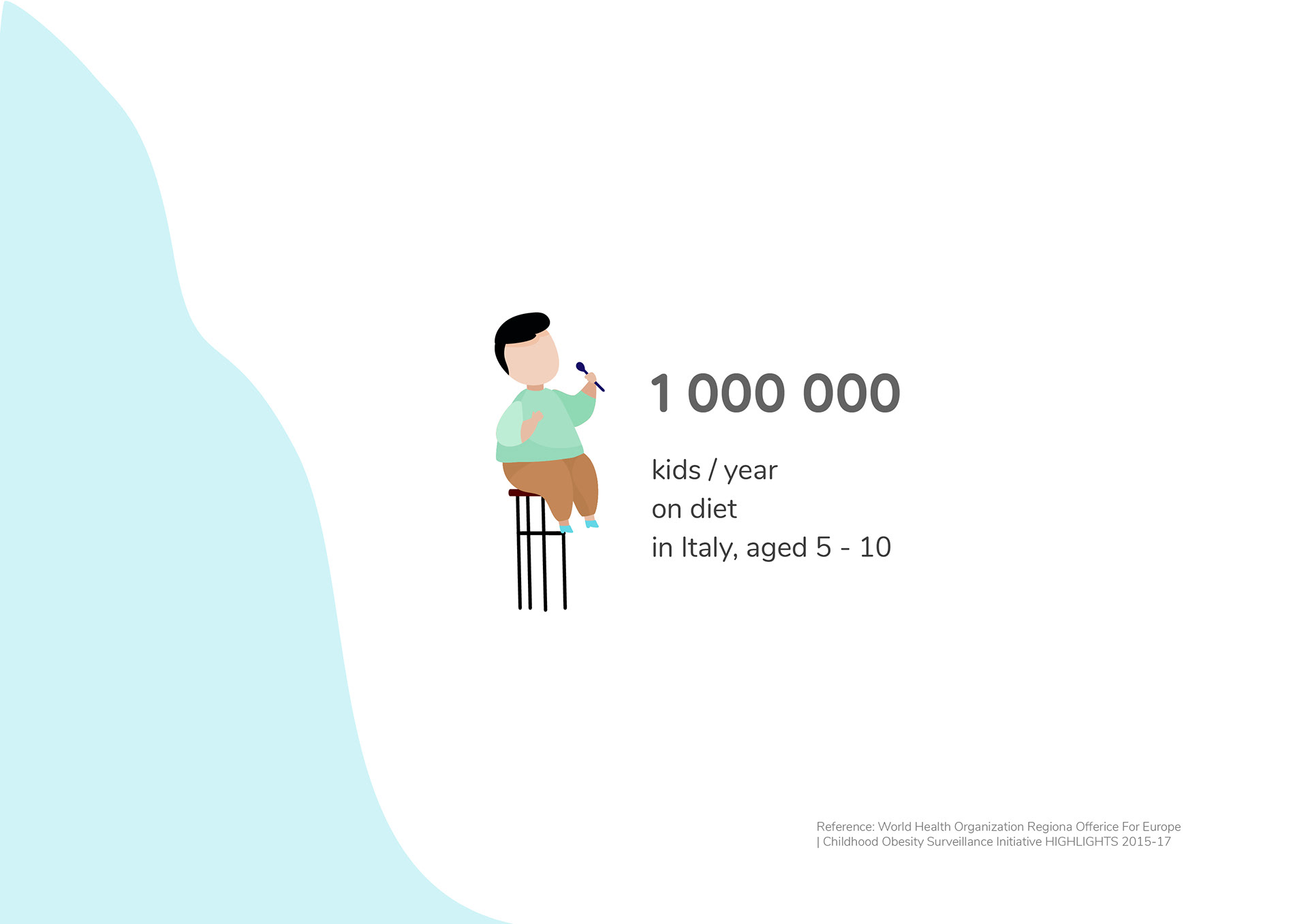


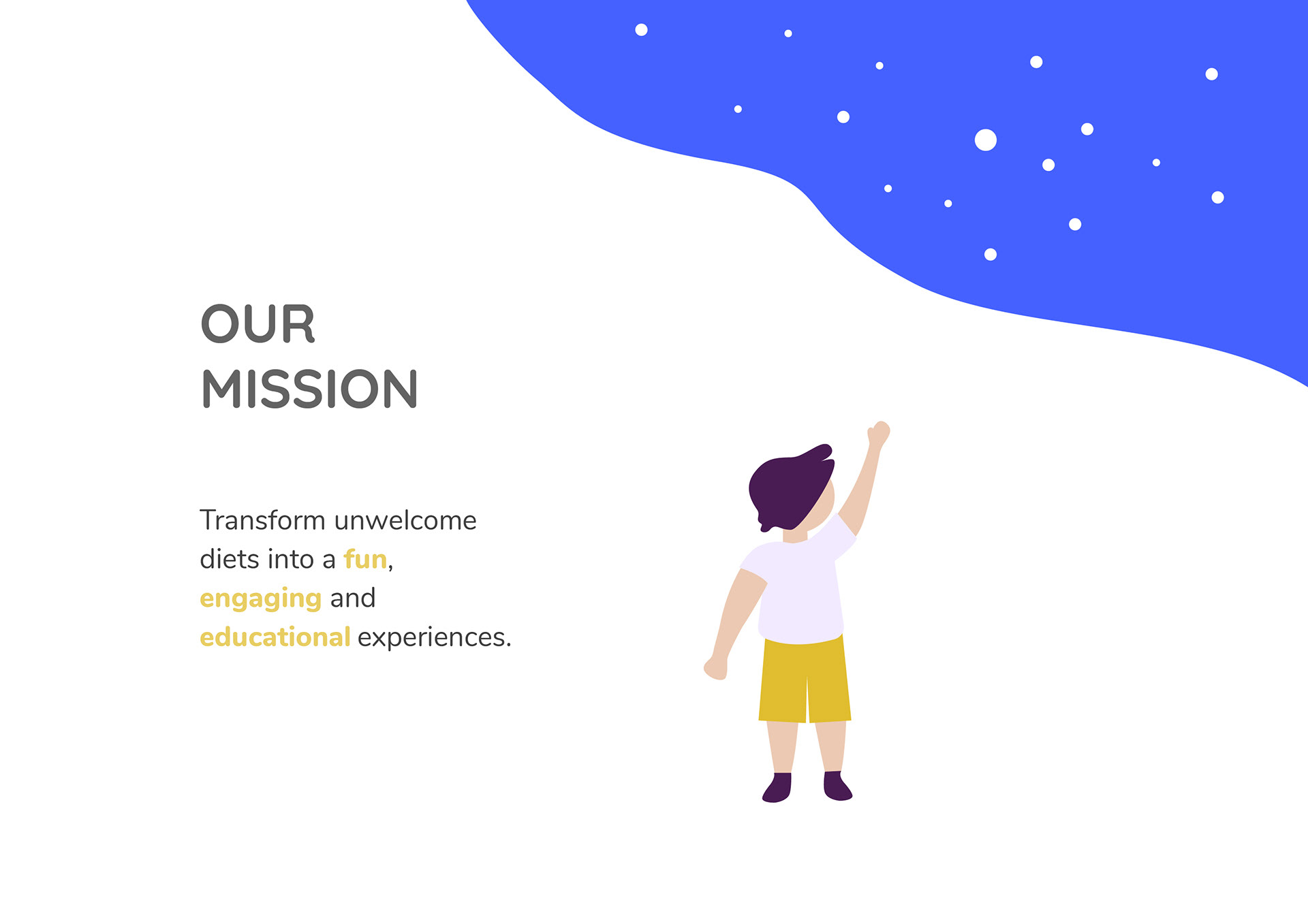



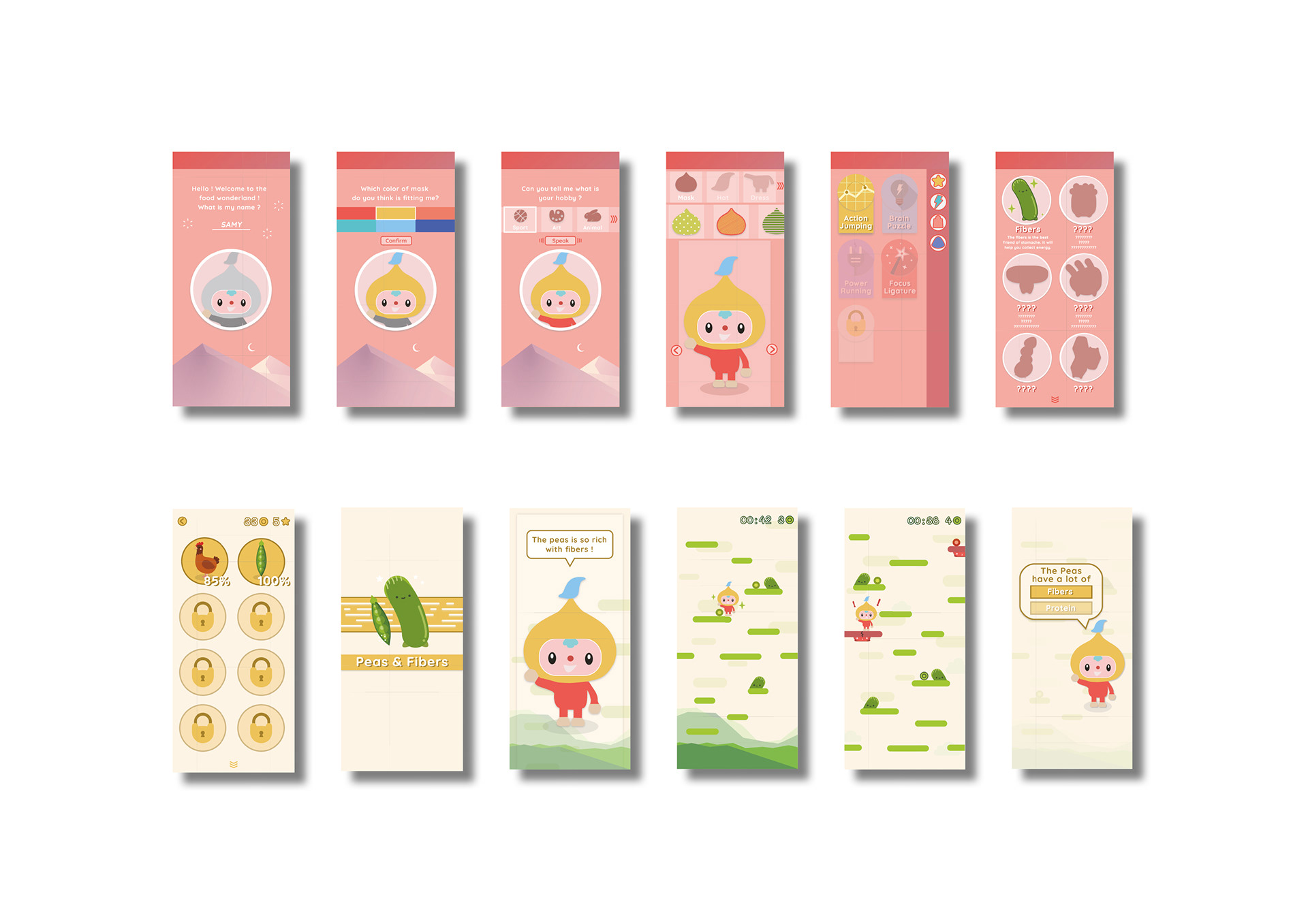
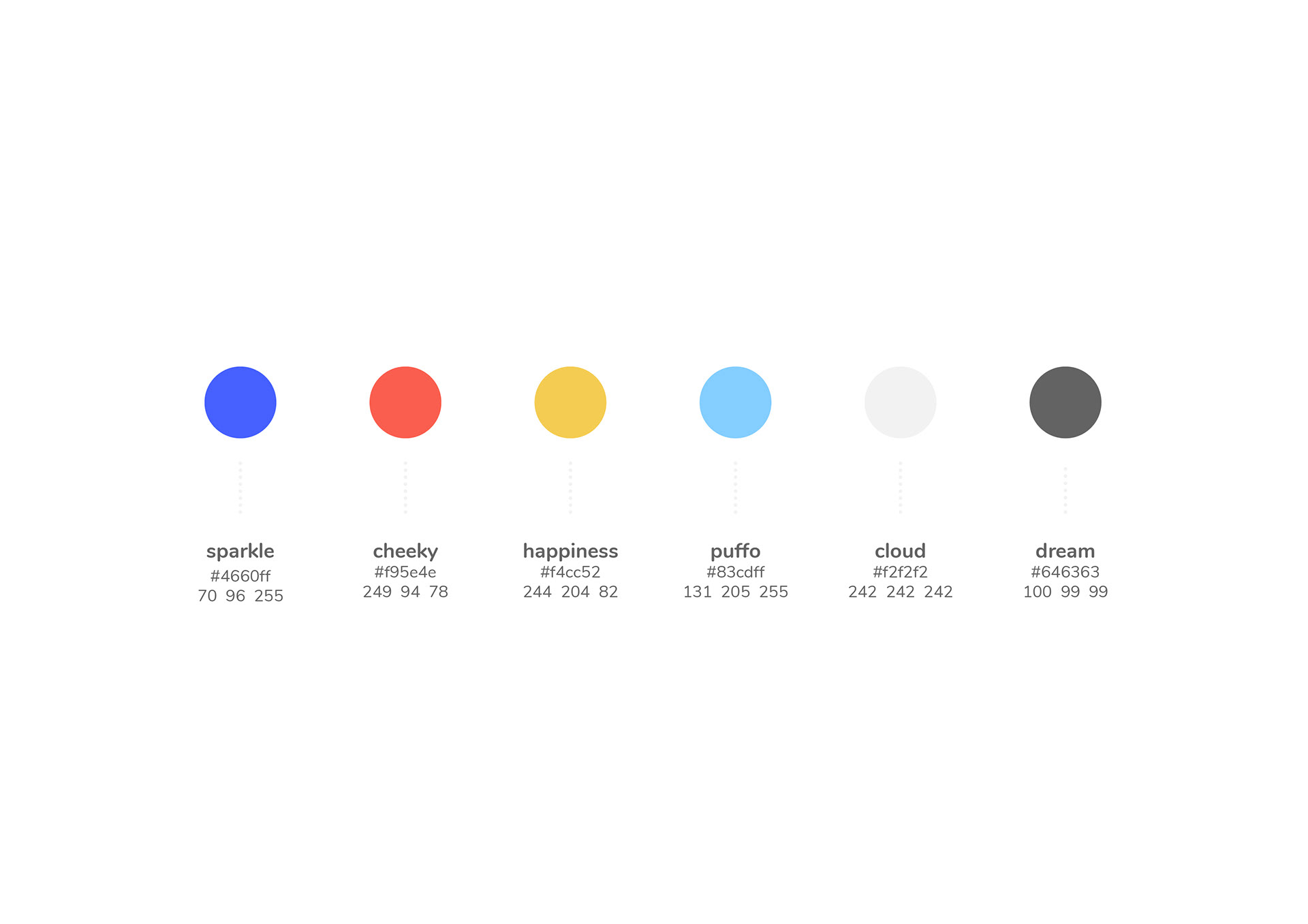
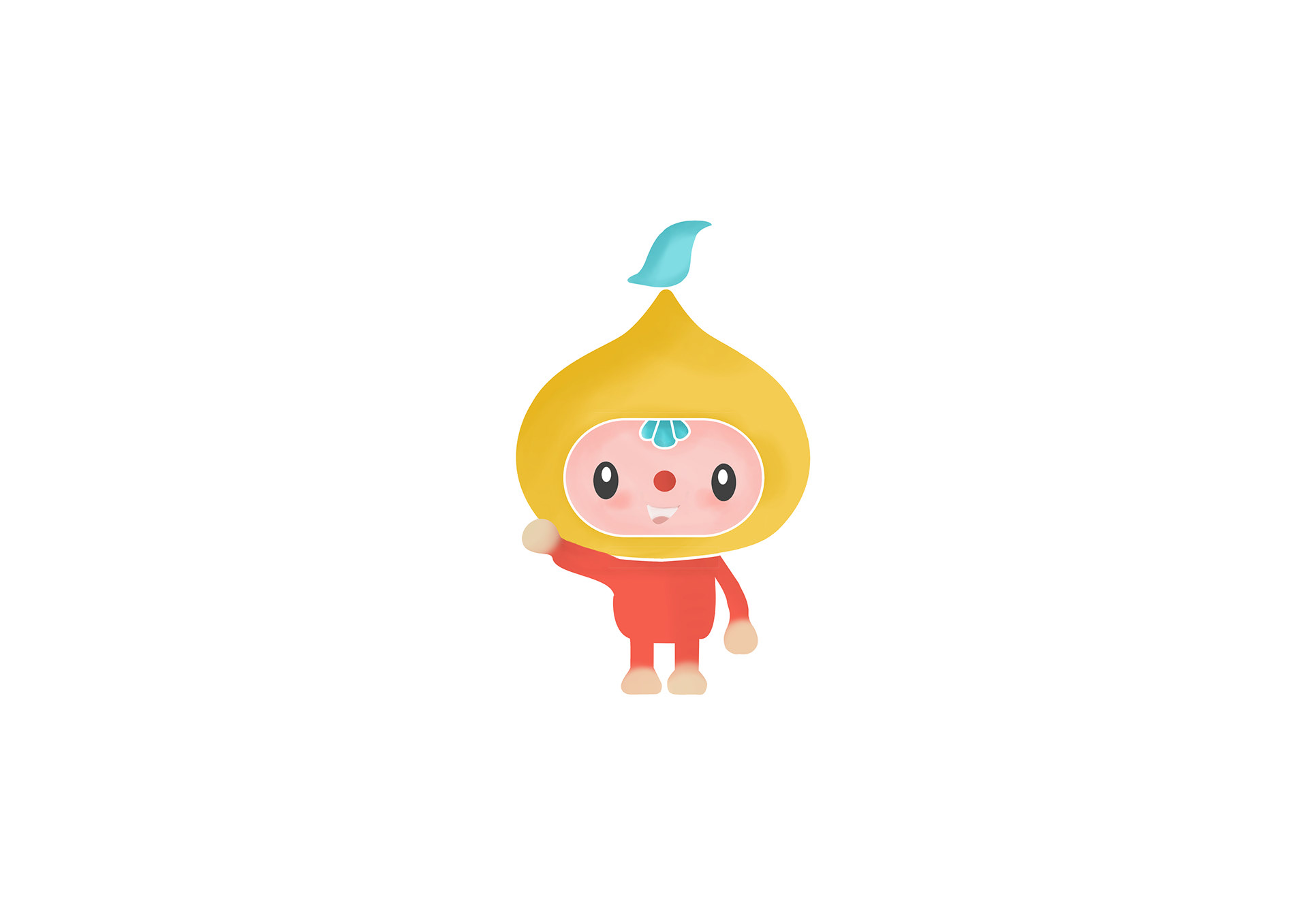
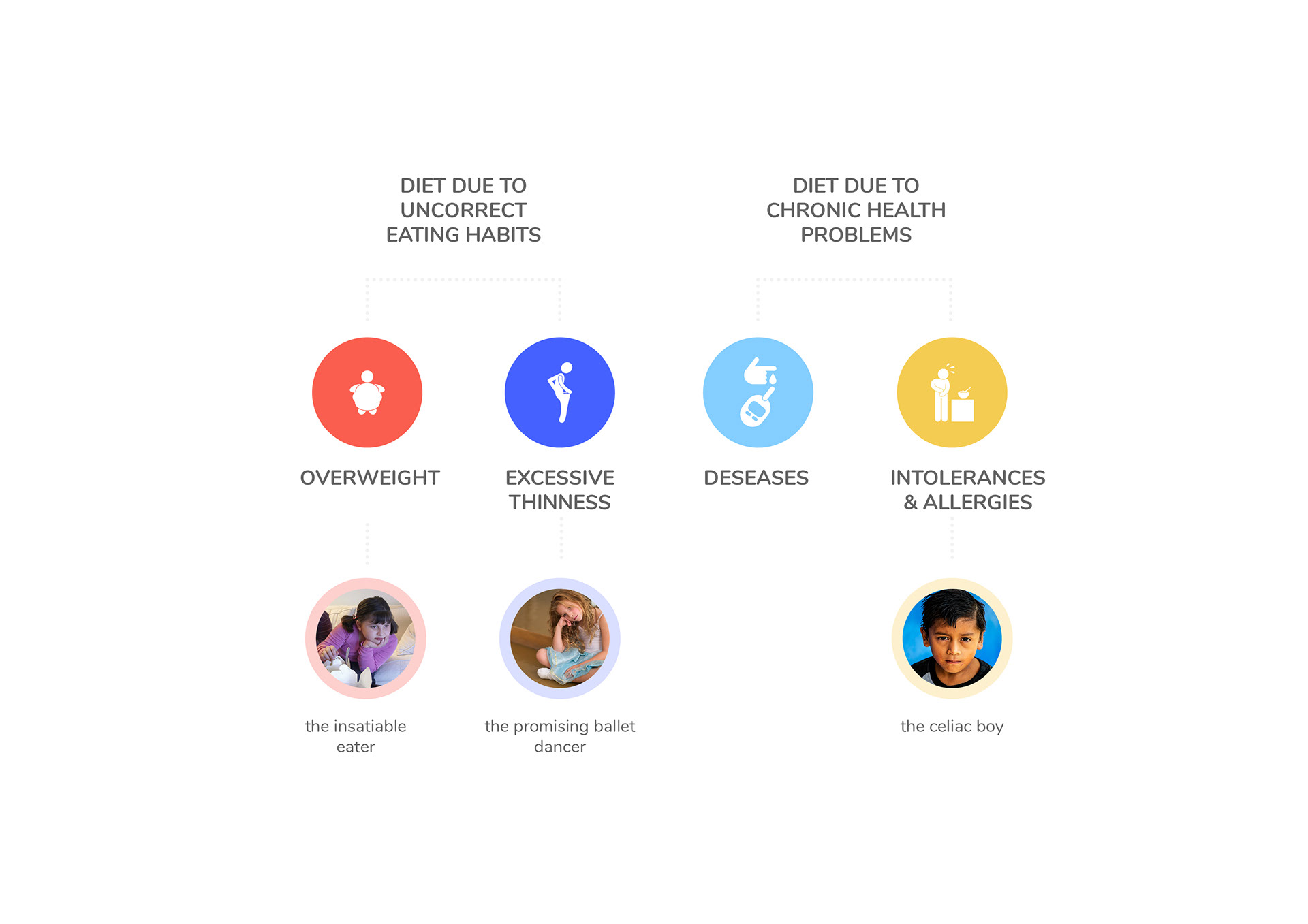
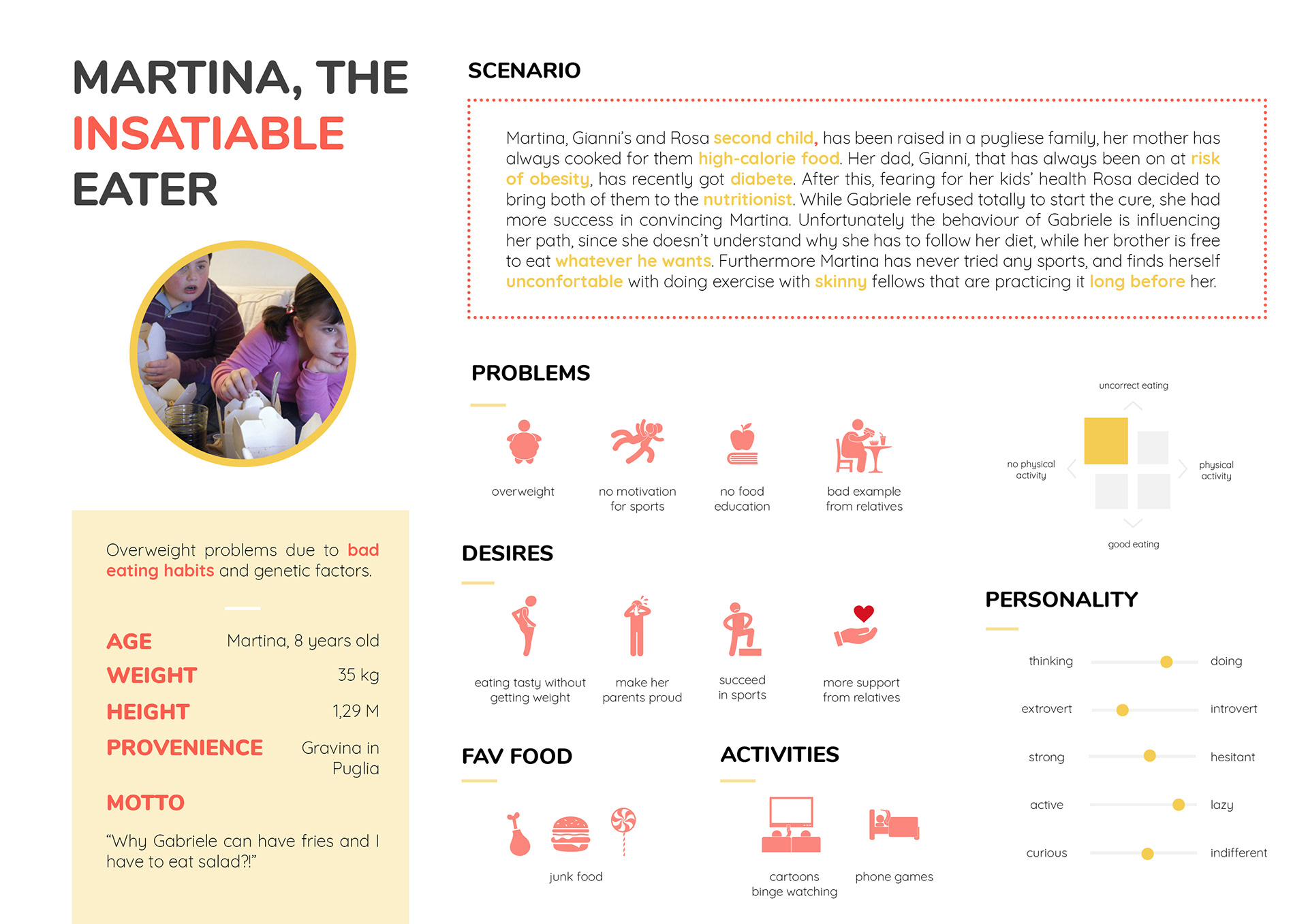
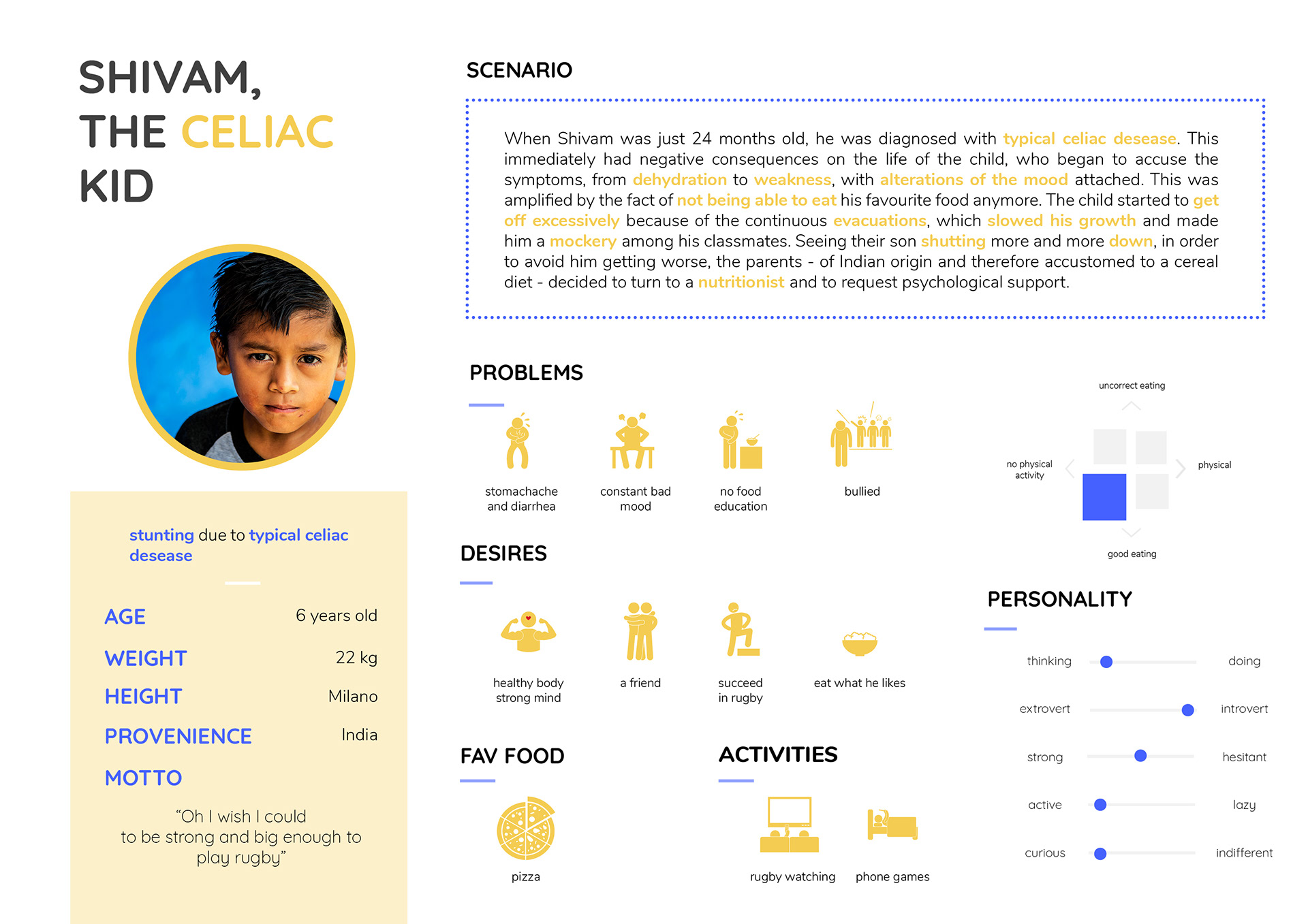

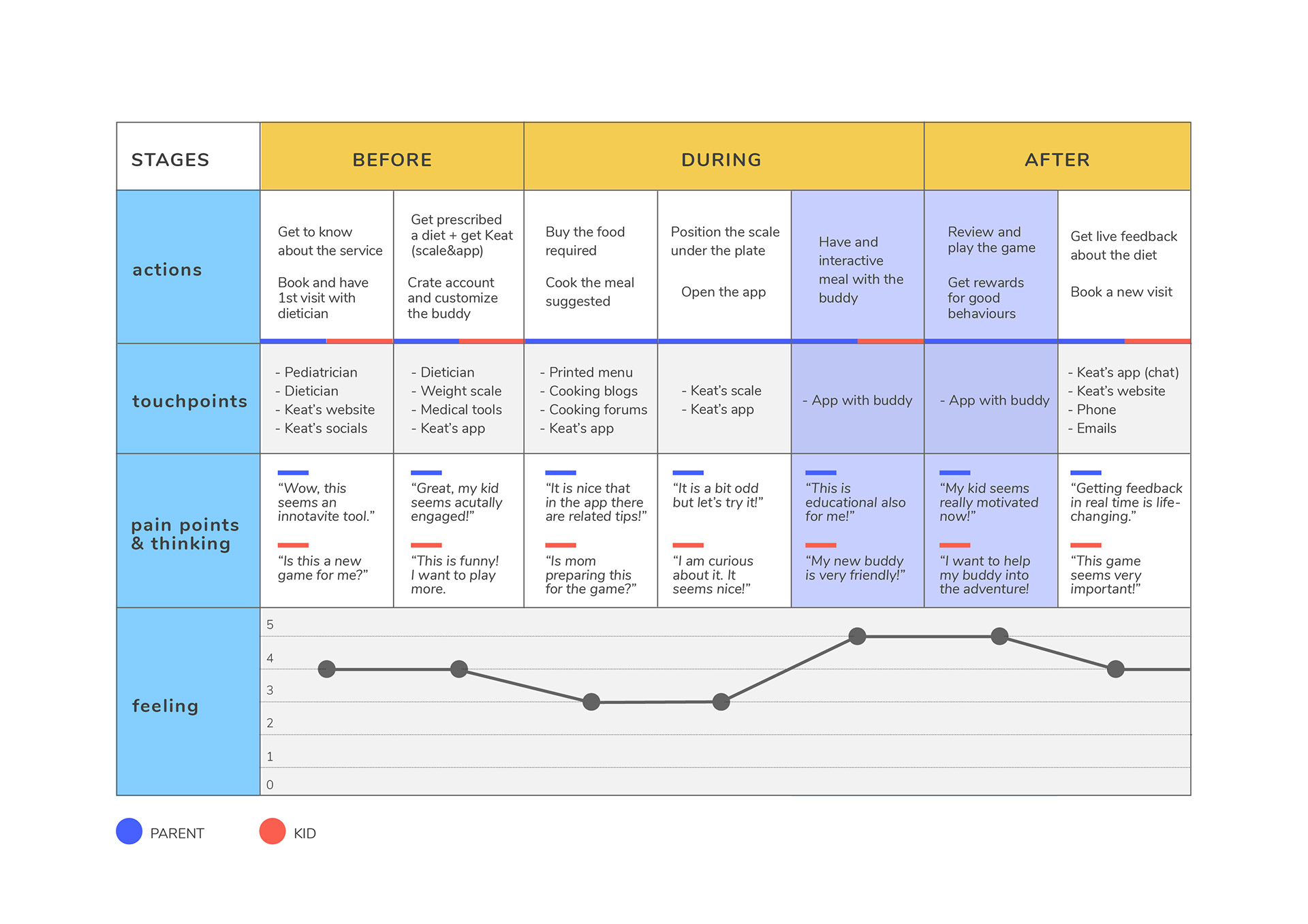

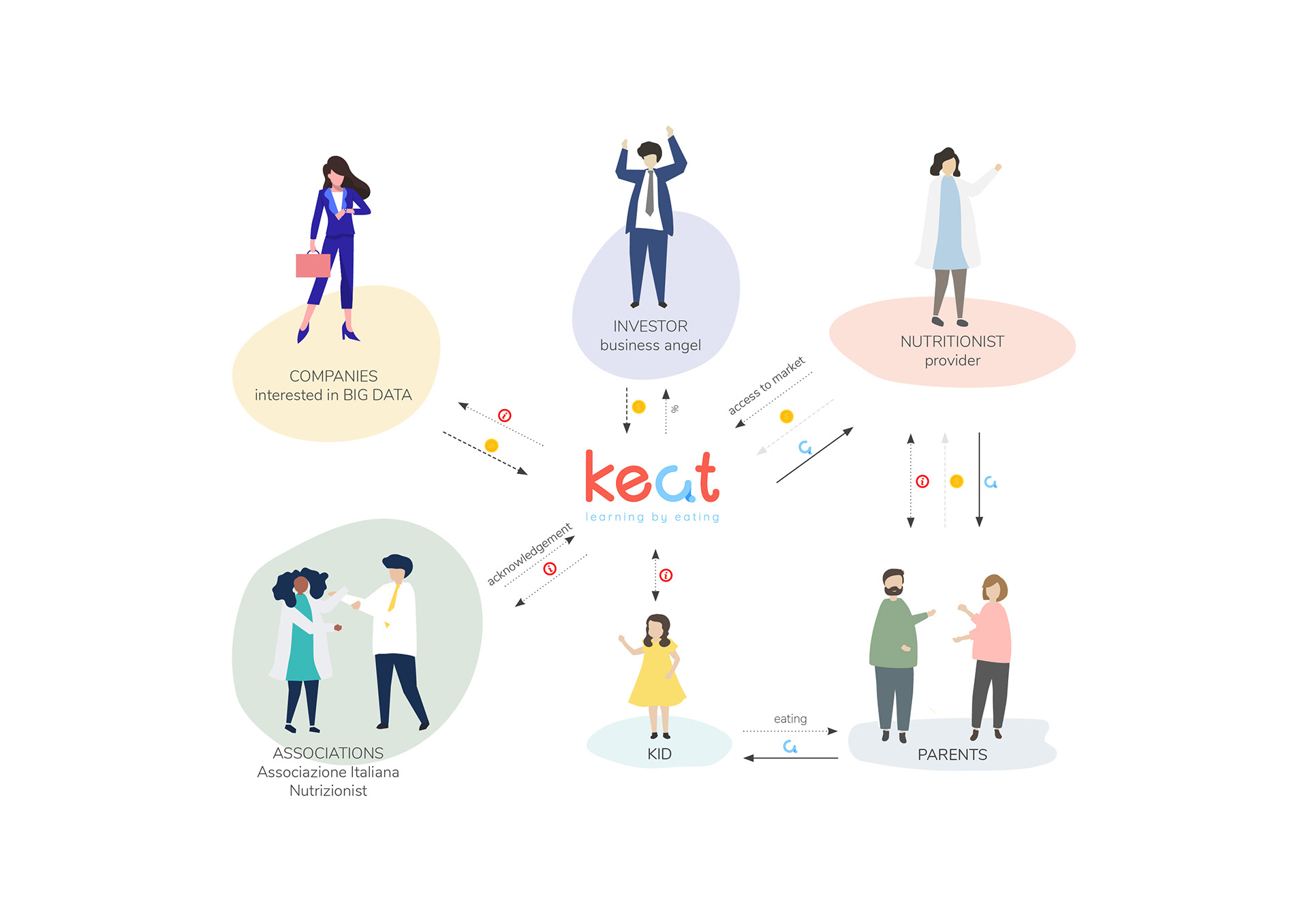

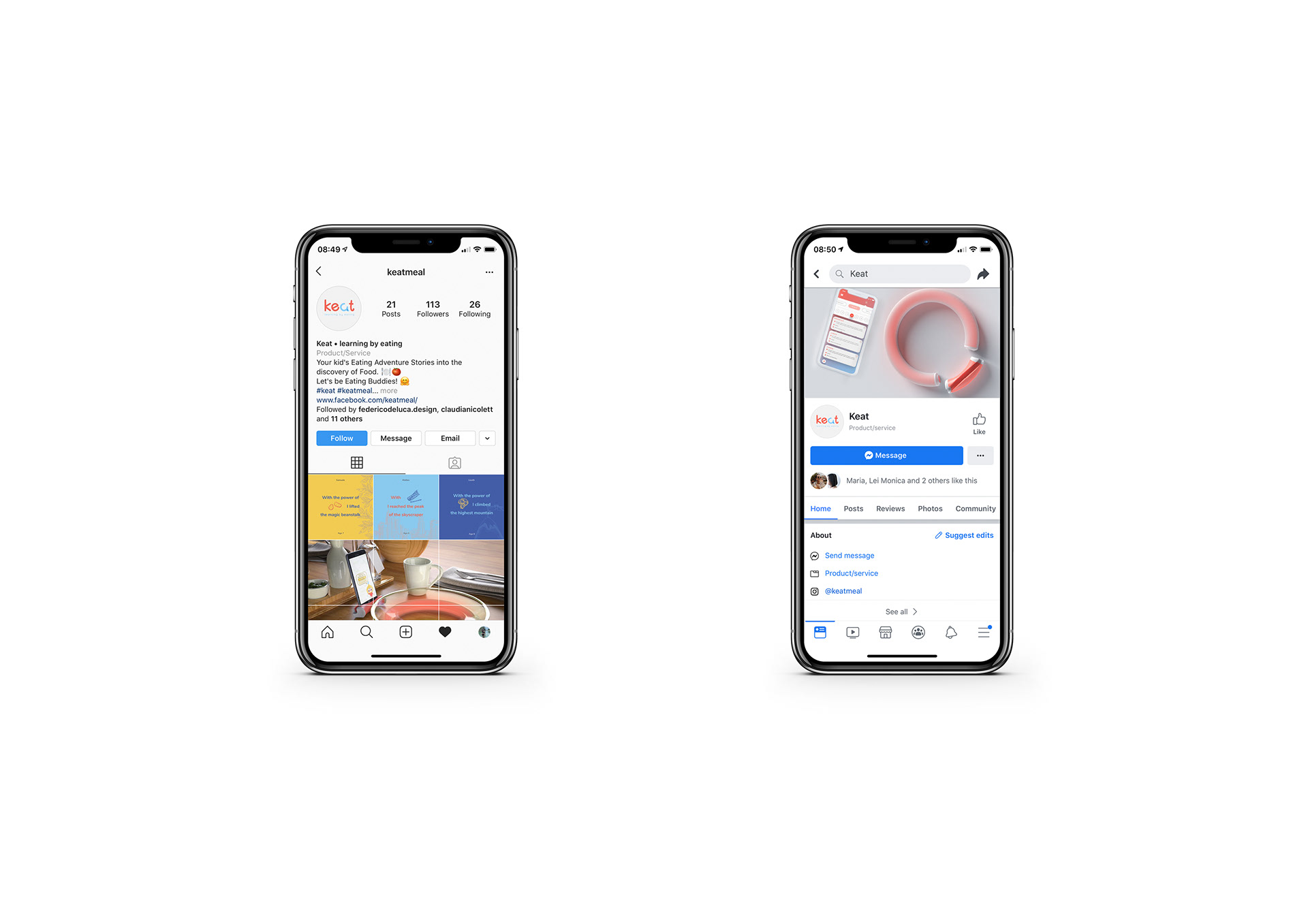
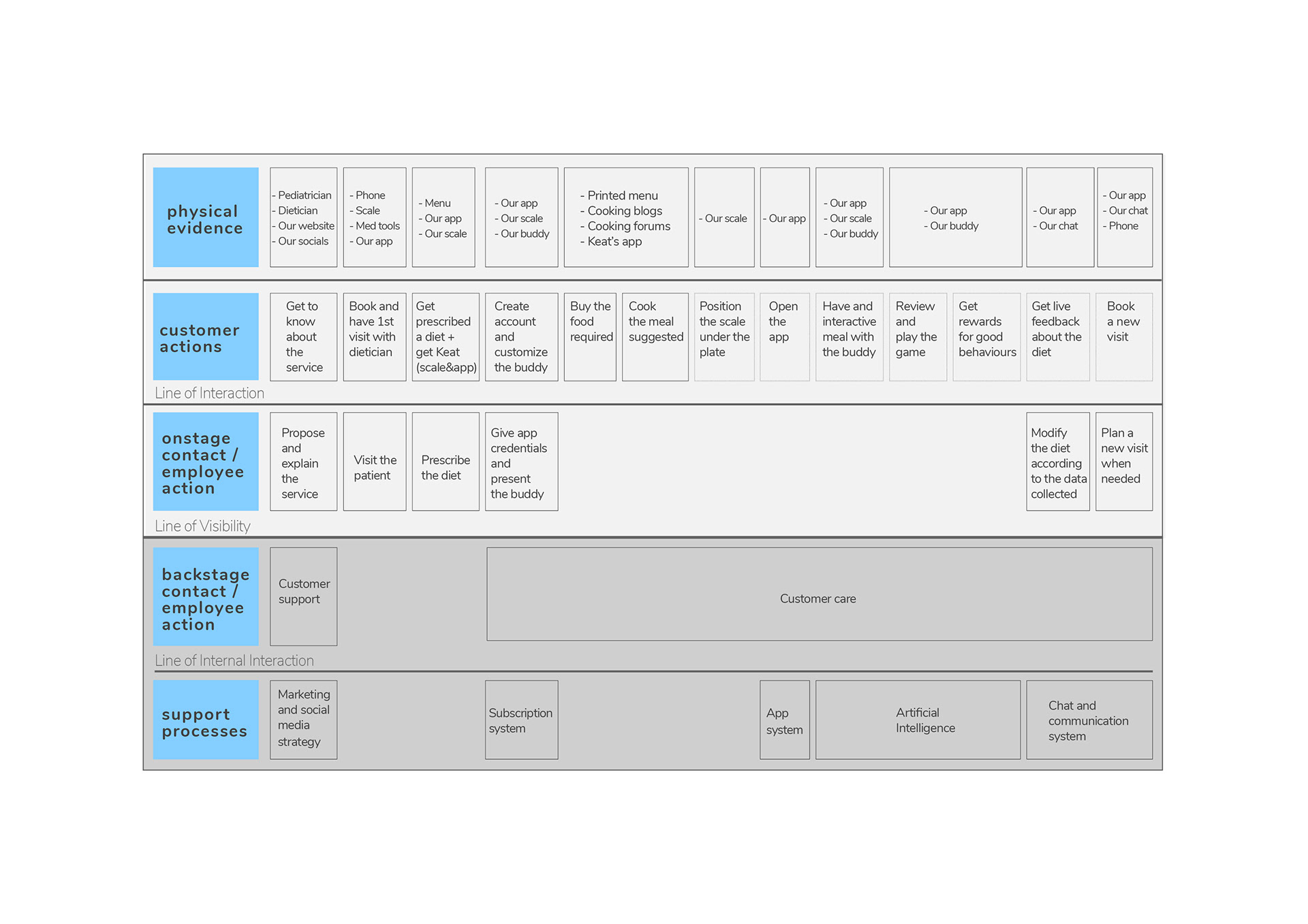


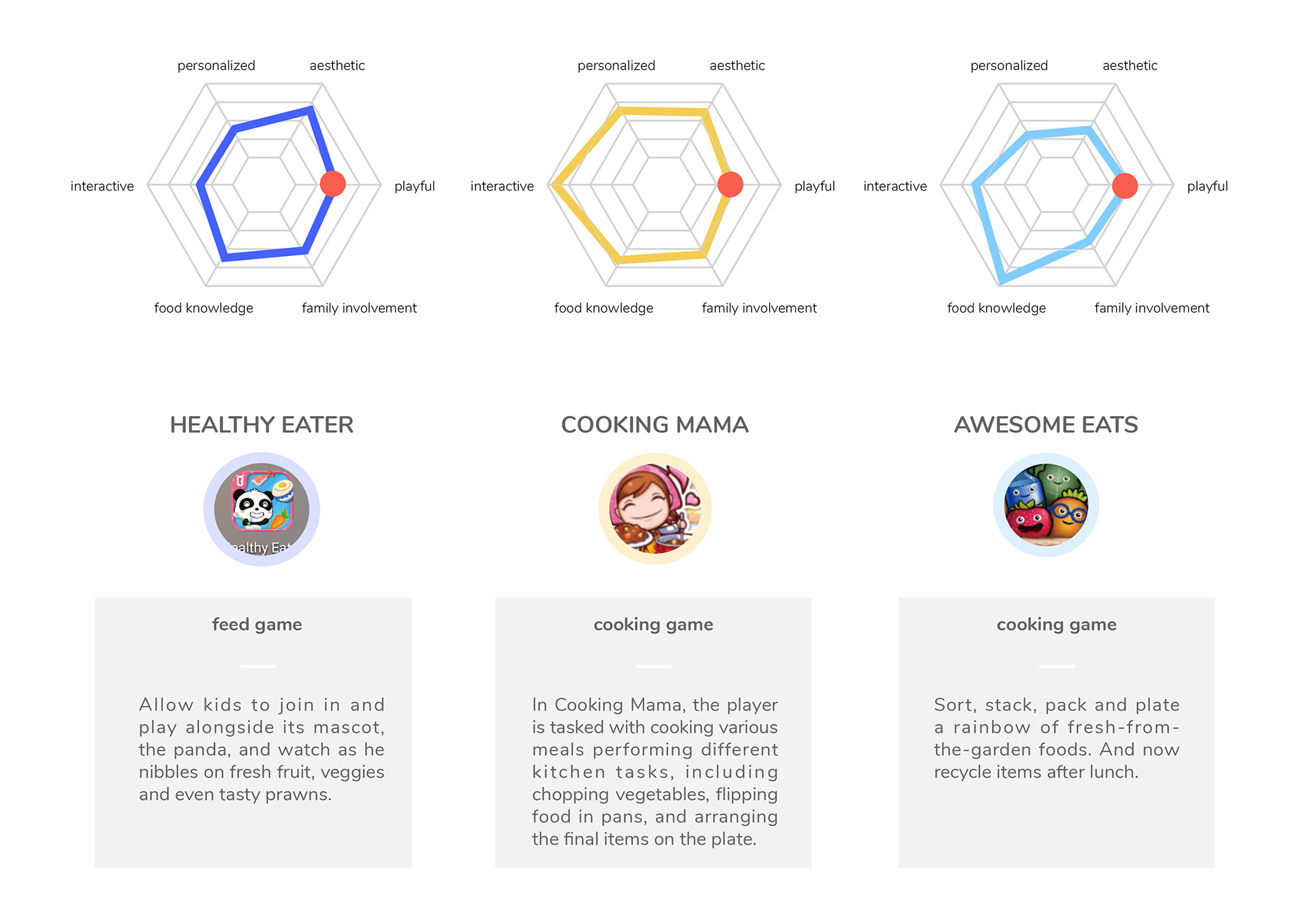

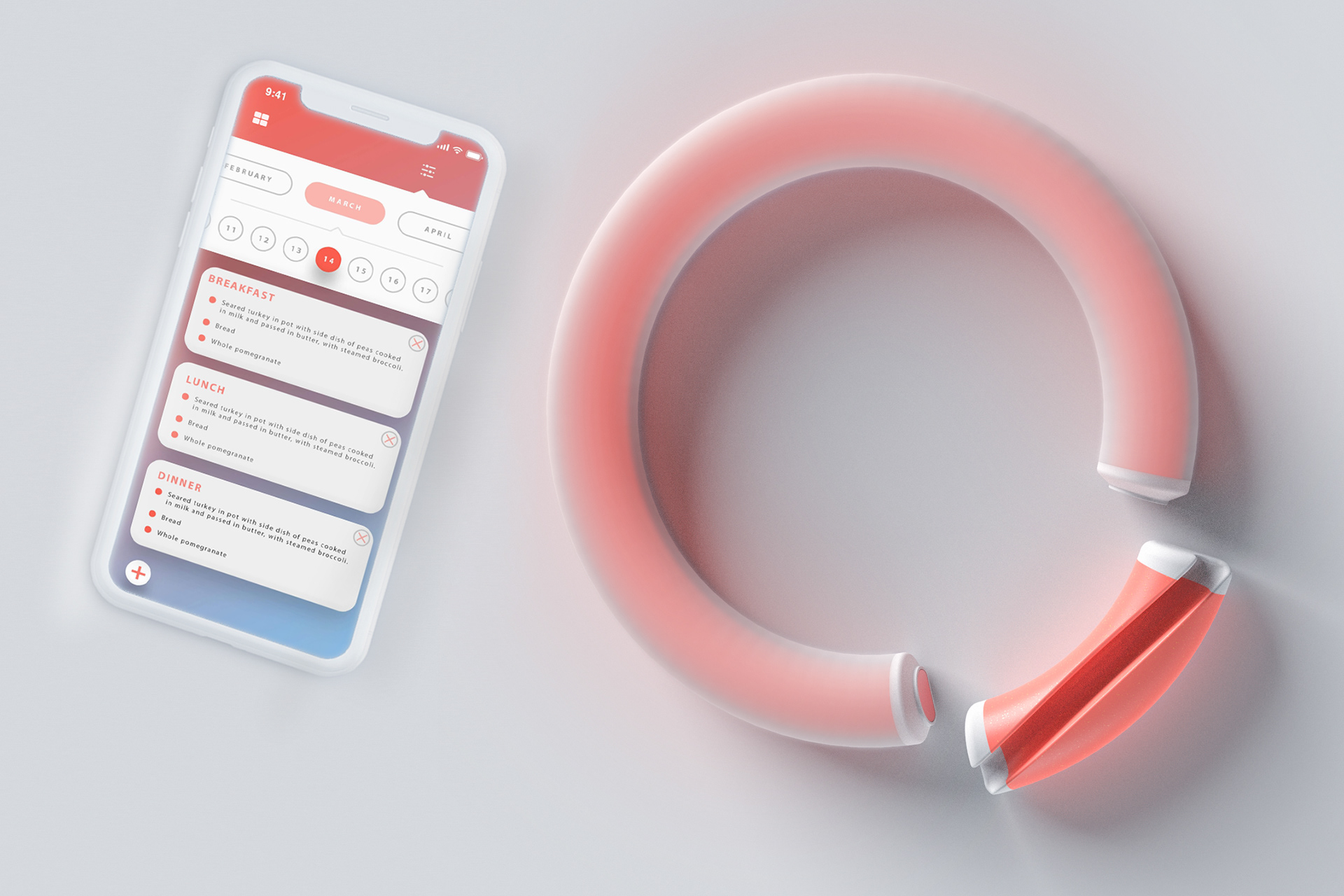
Ritrovarci

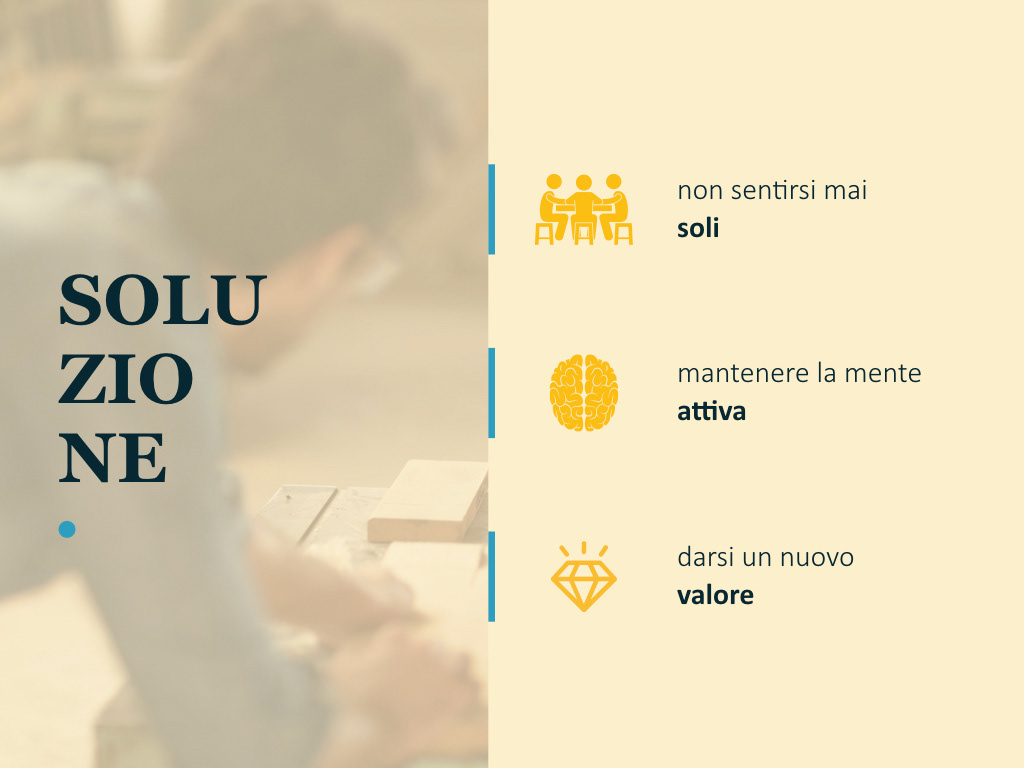
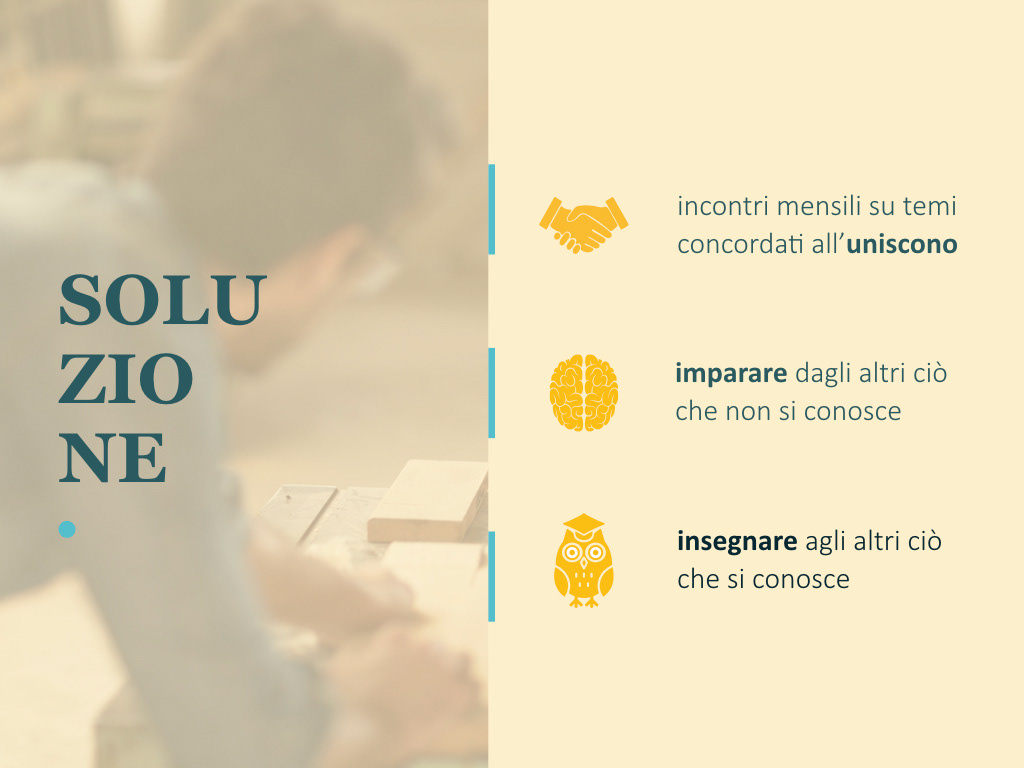
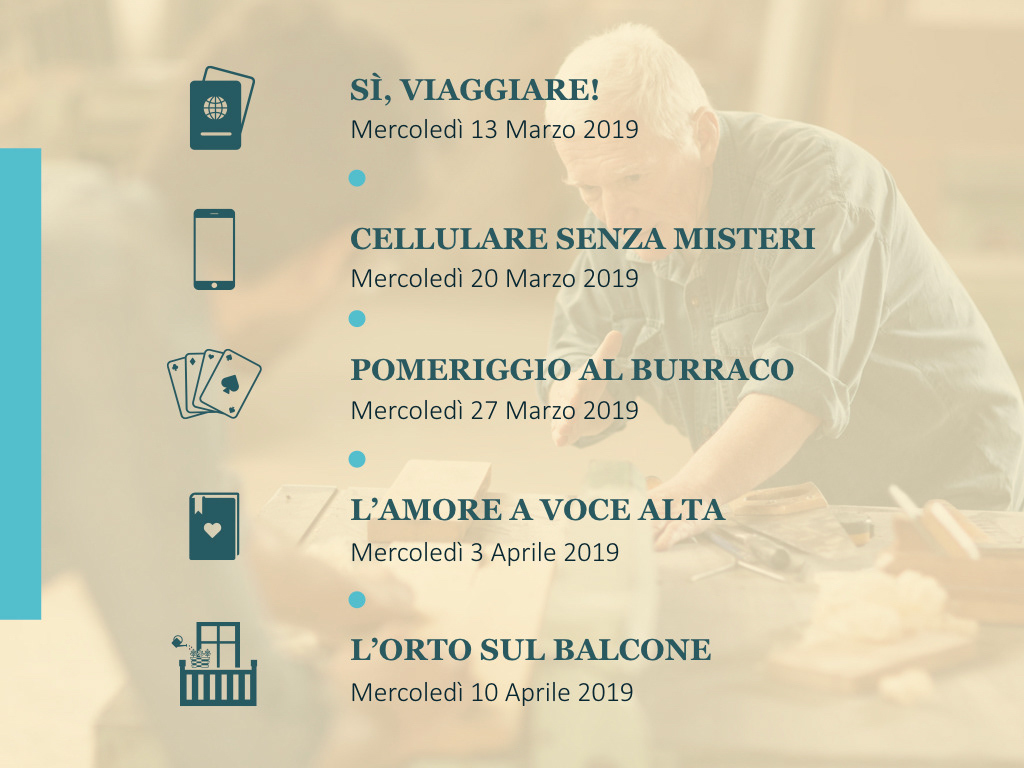
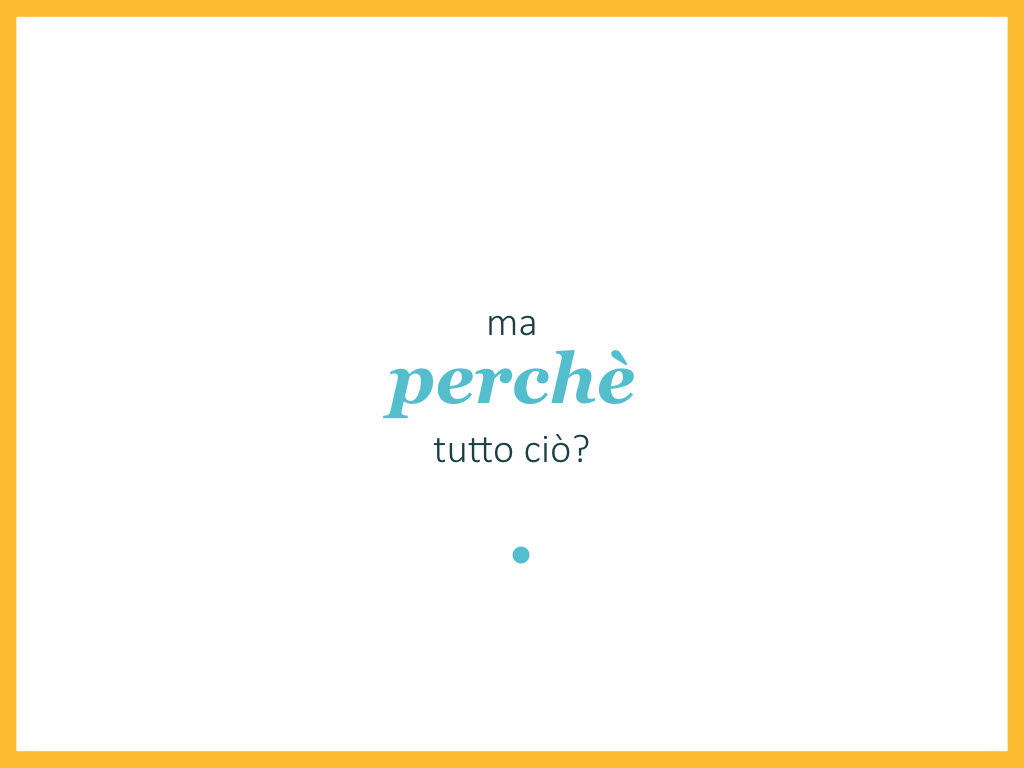
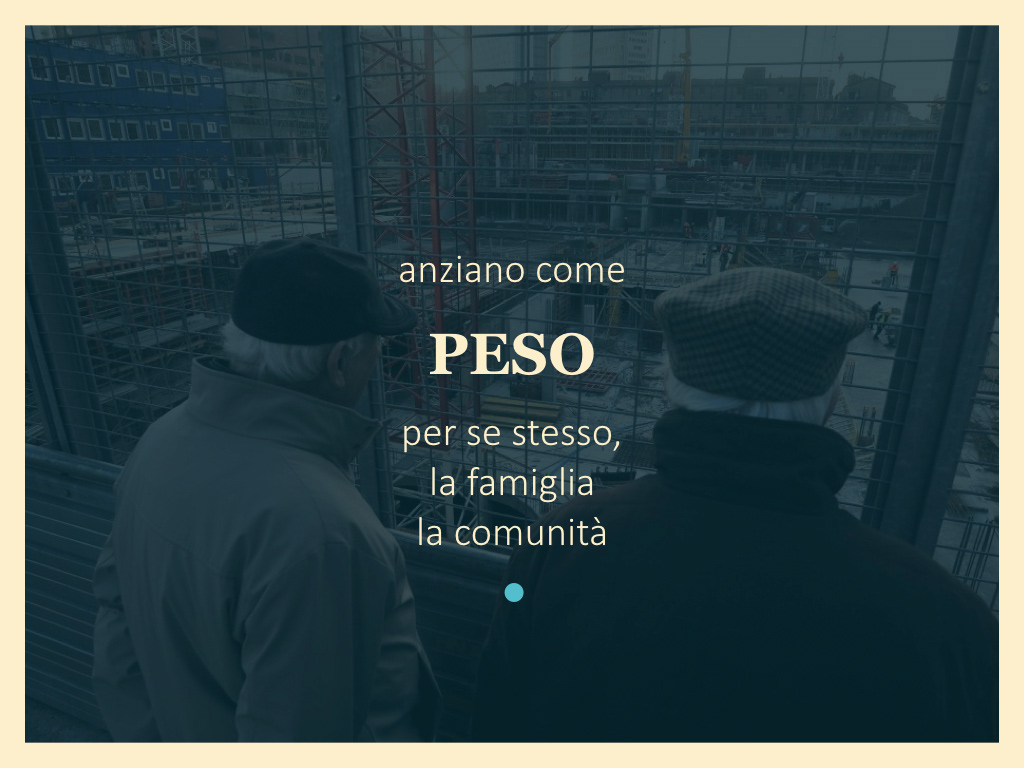
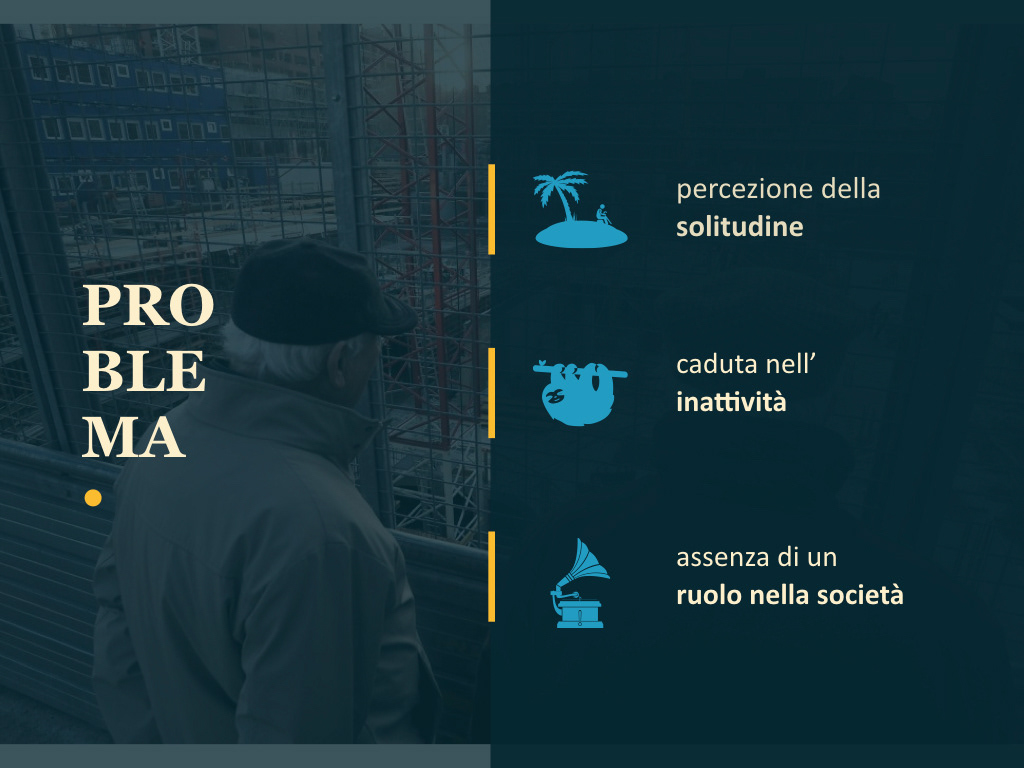
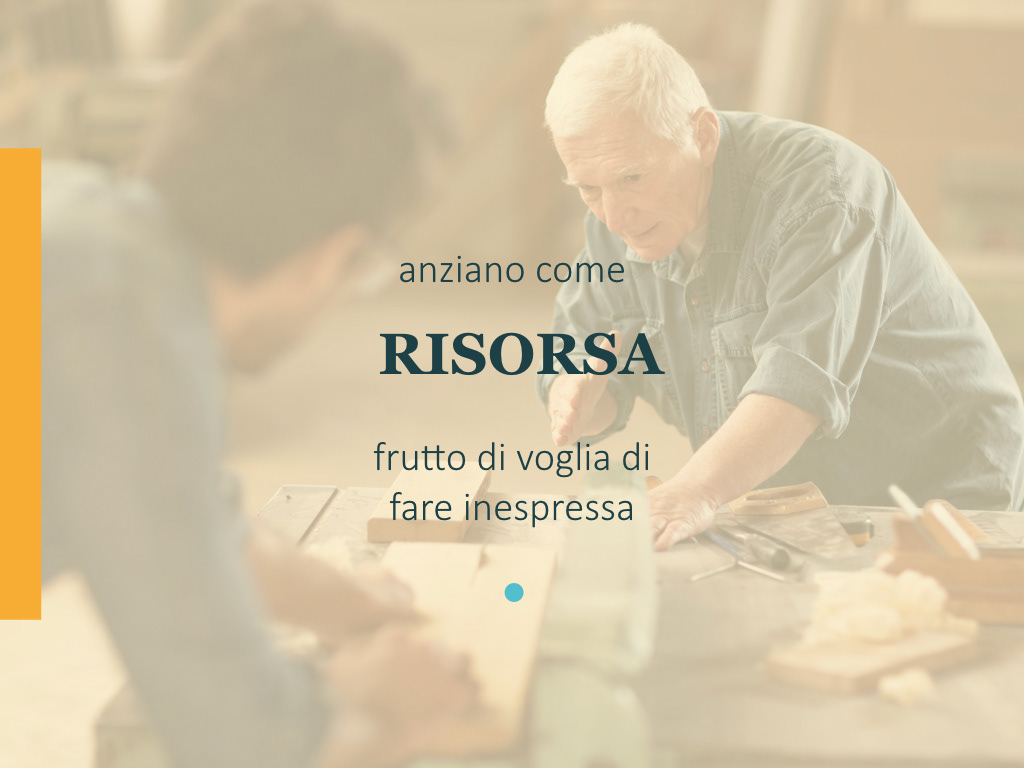
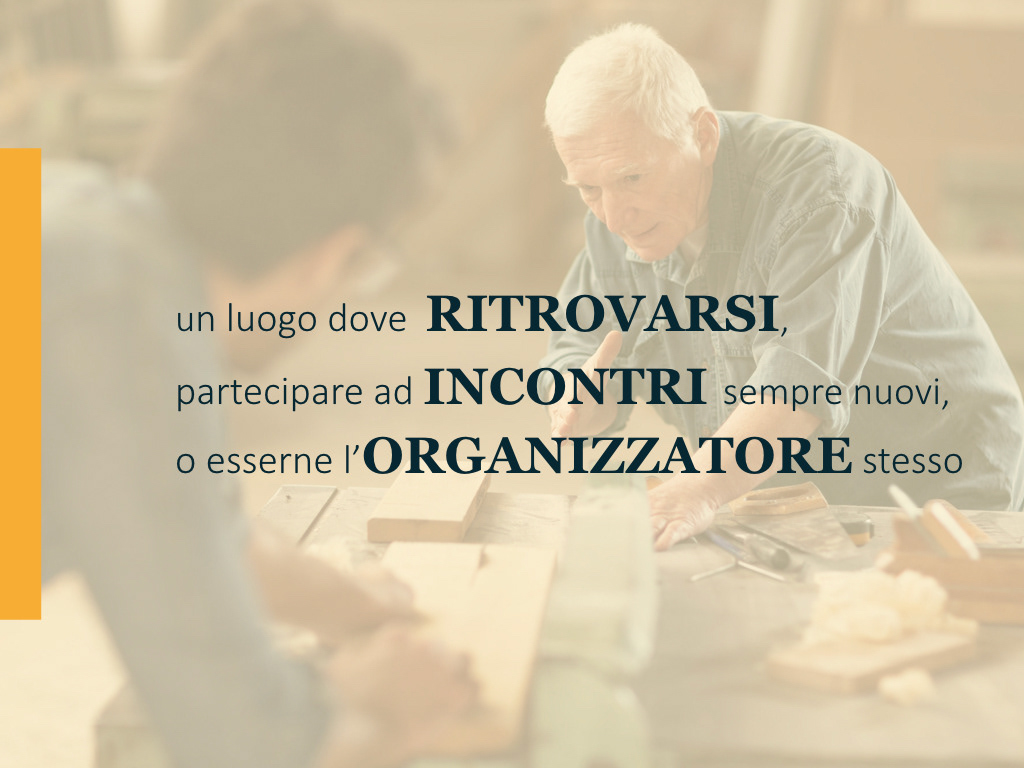
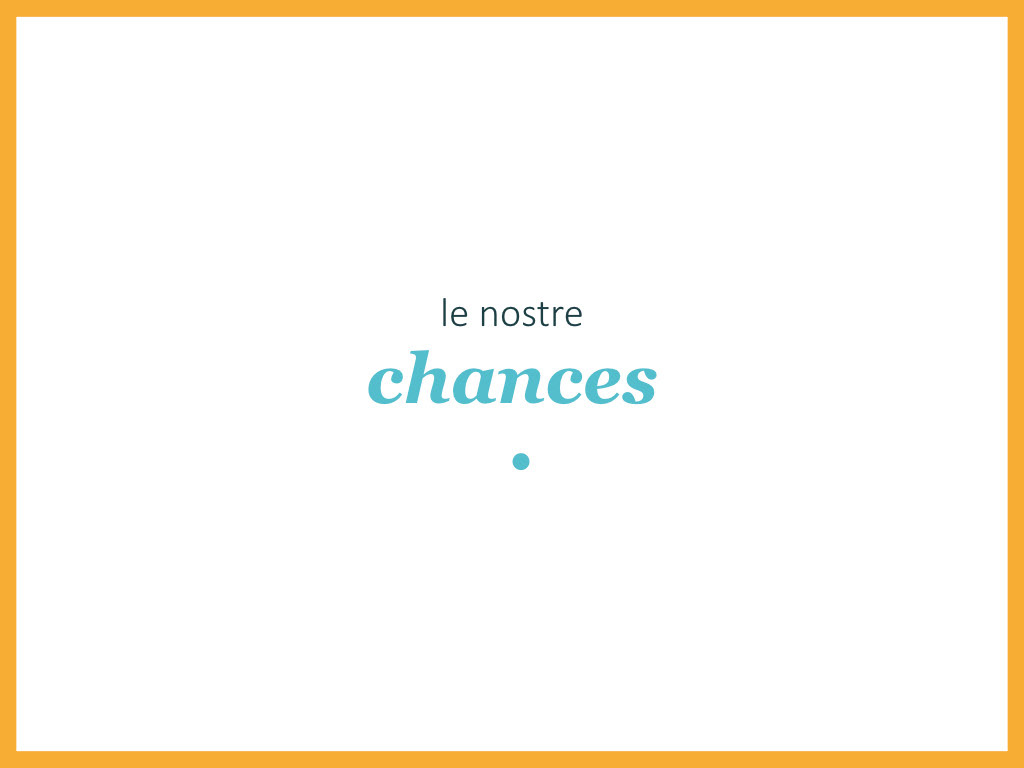
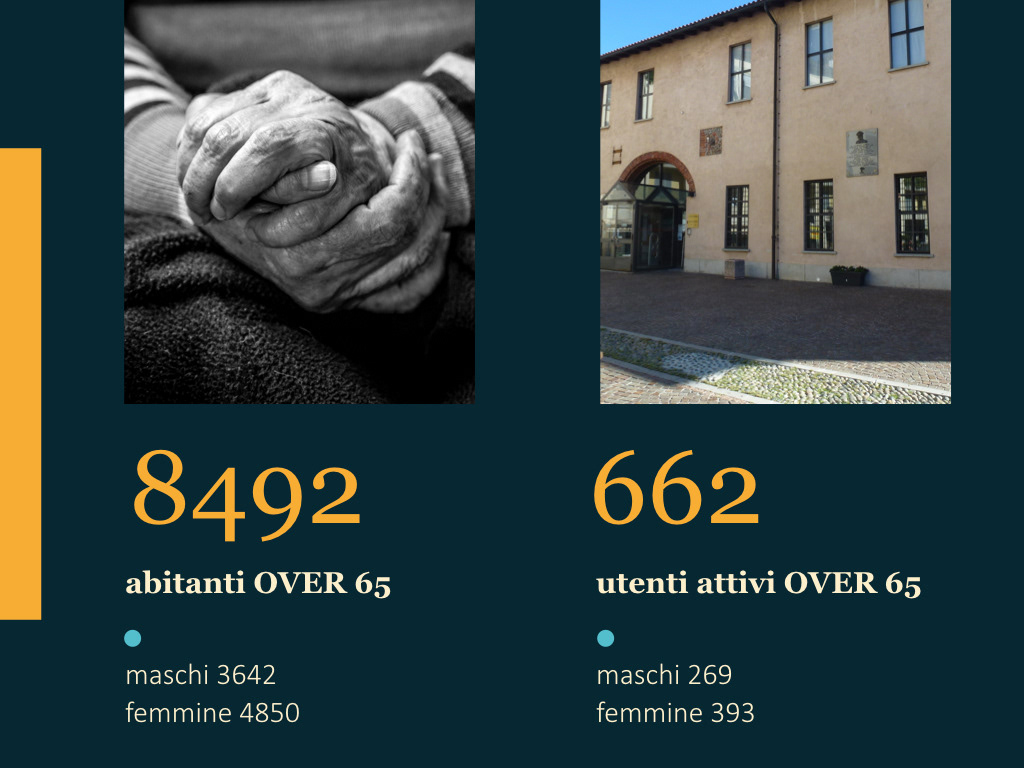
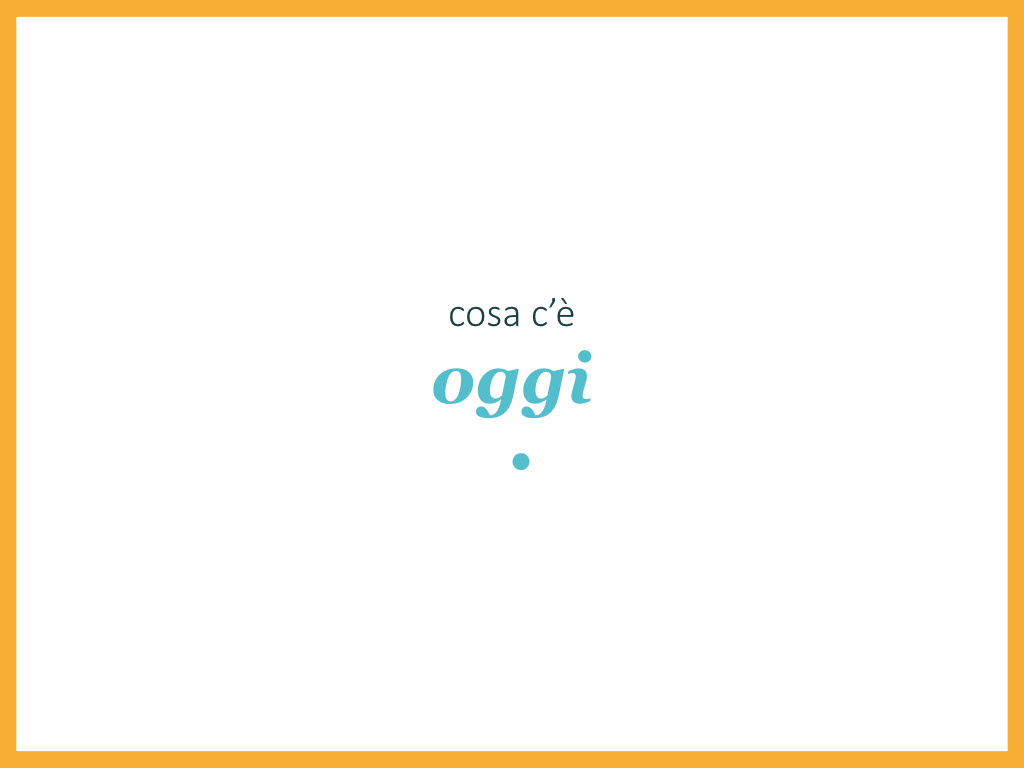
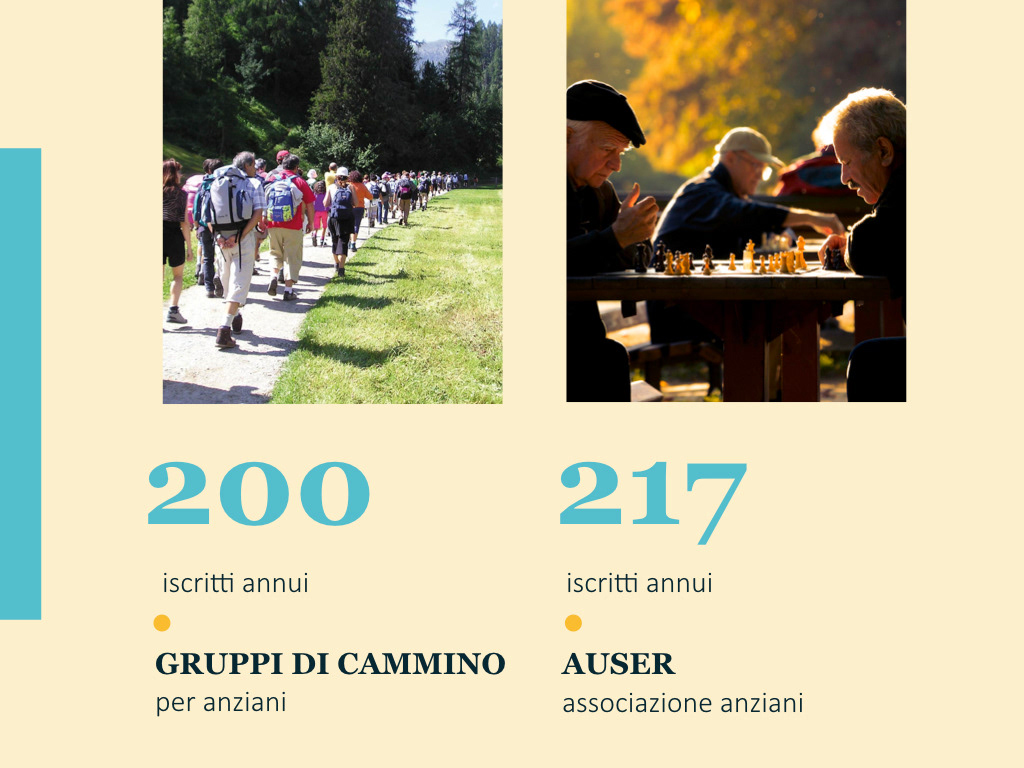
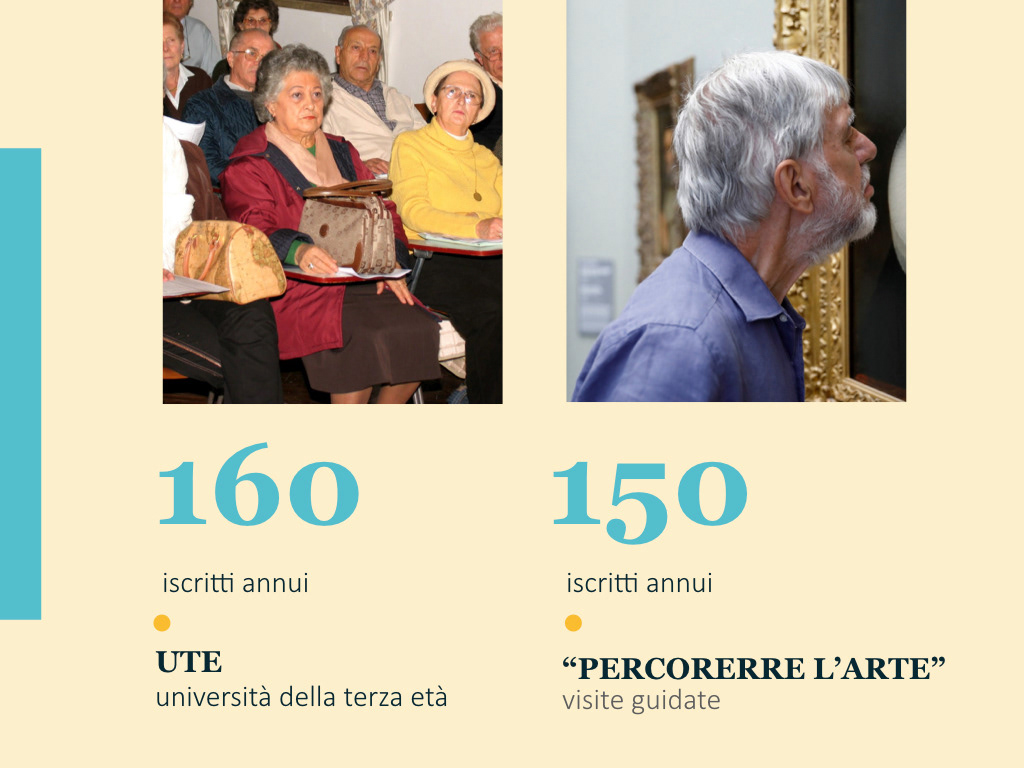
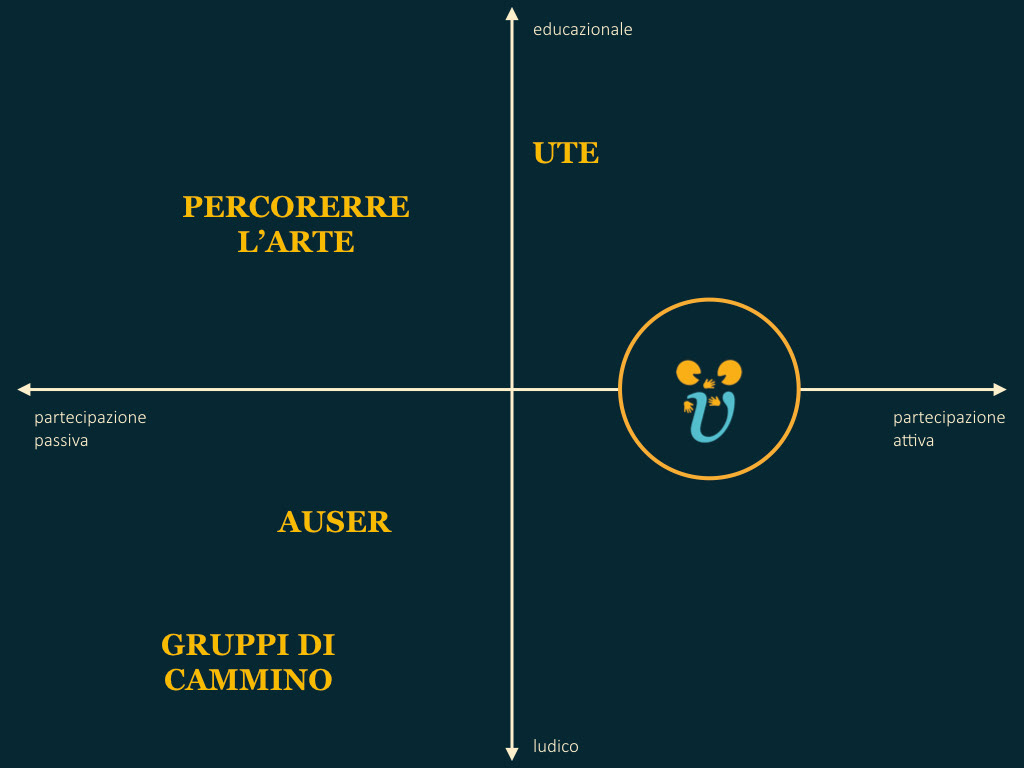
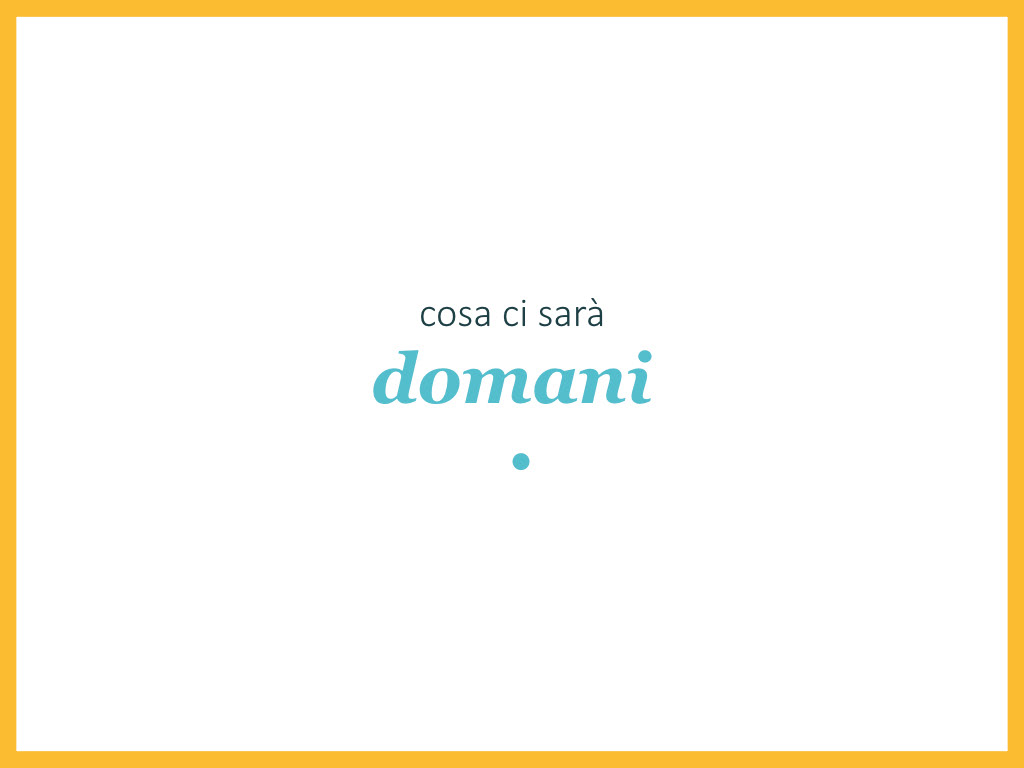
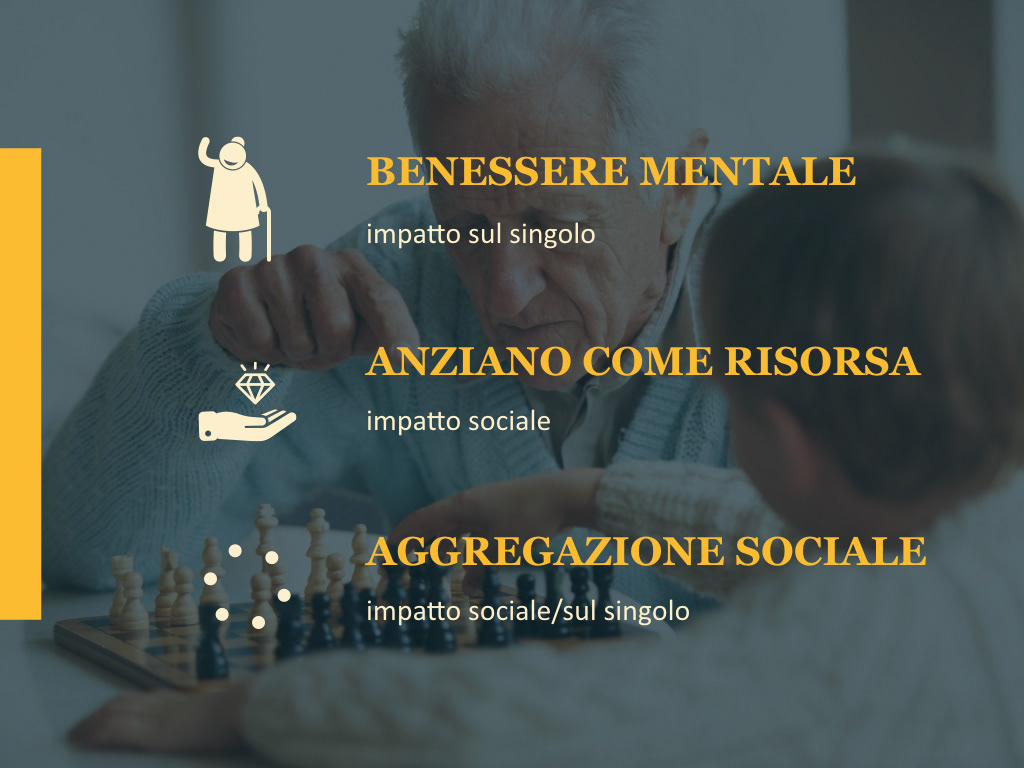
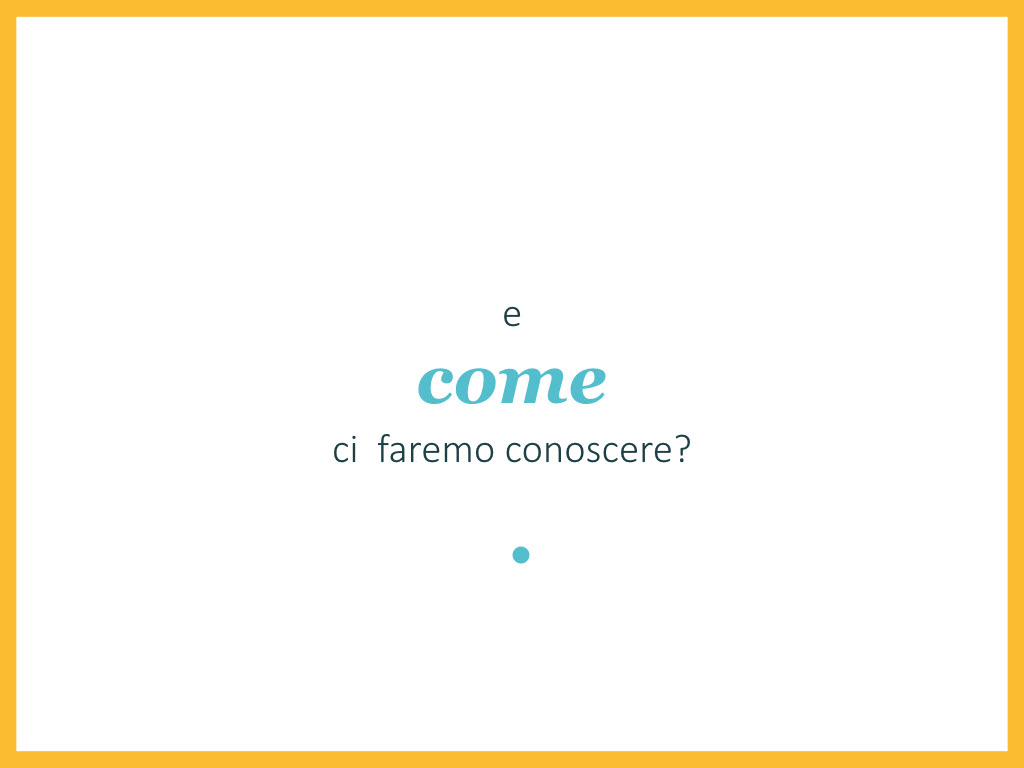
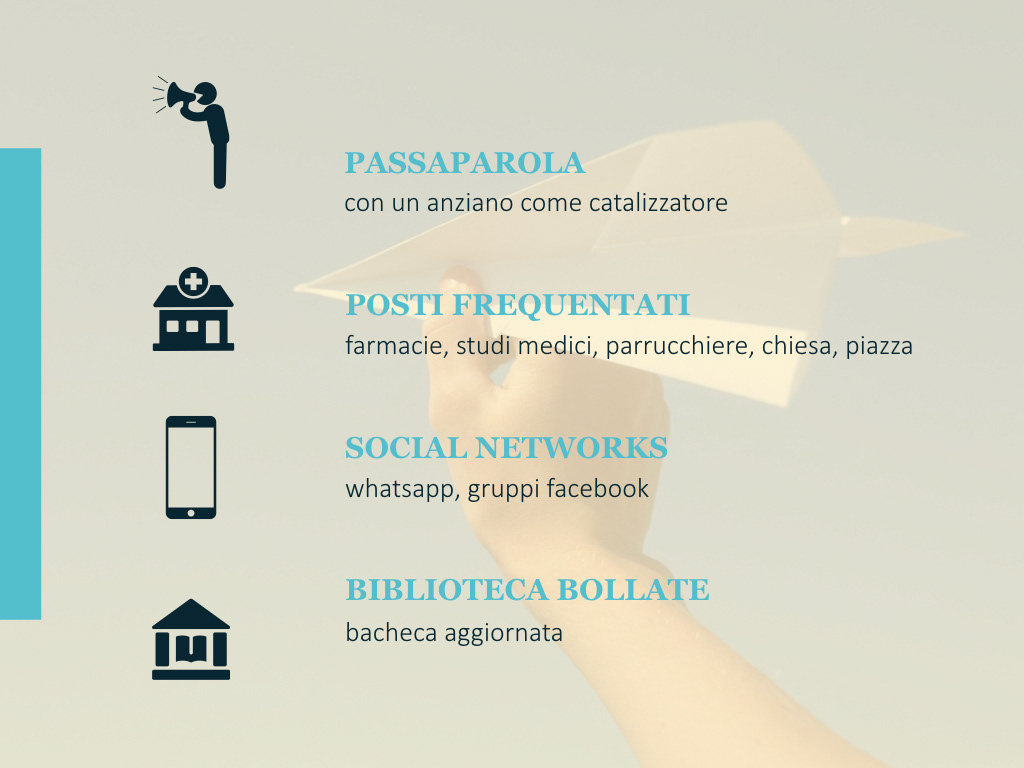
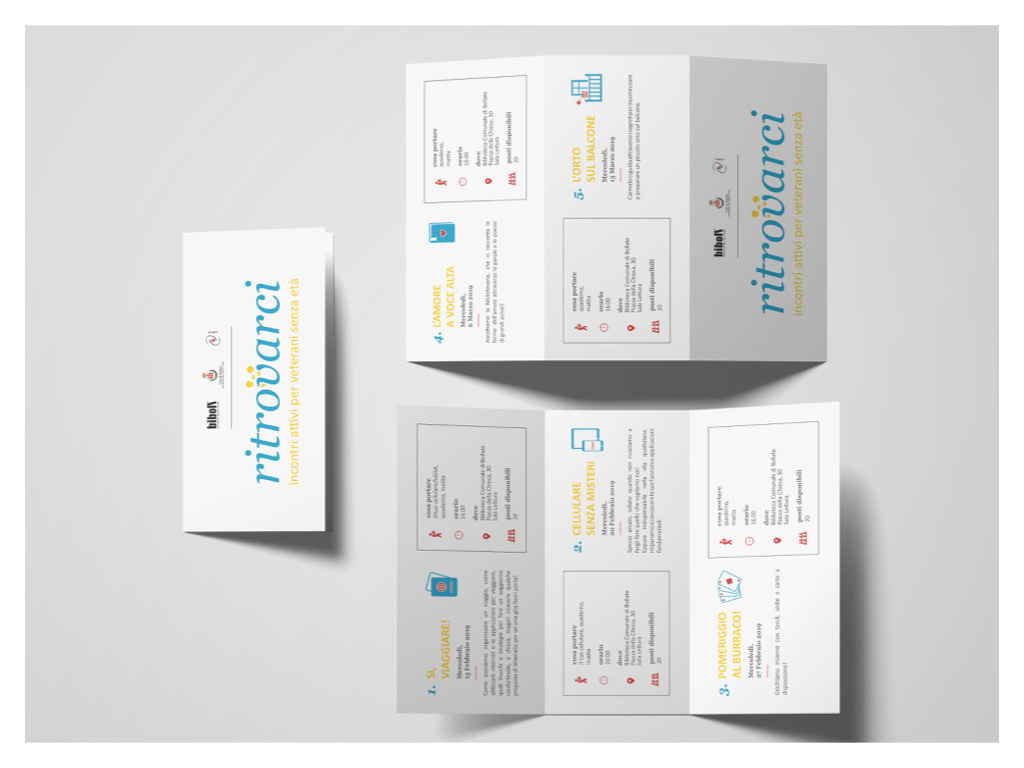
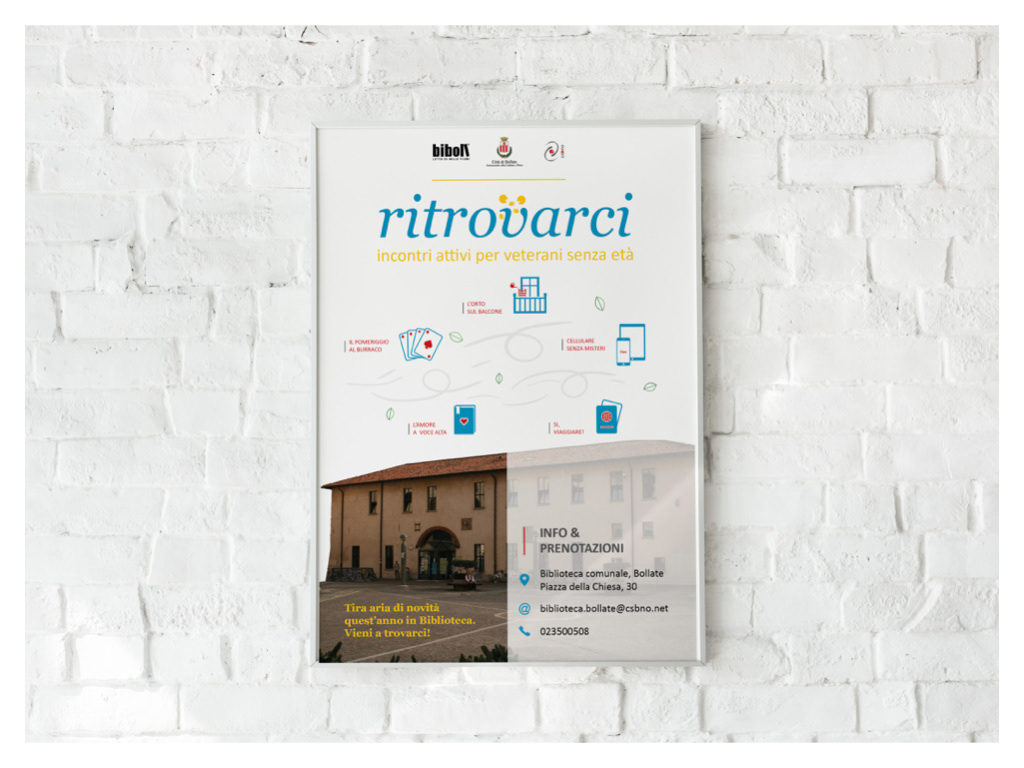
Camper
